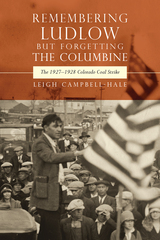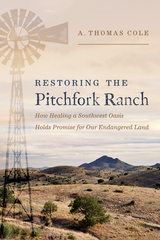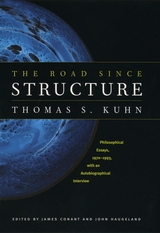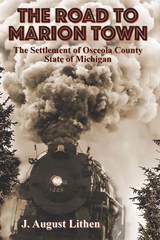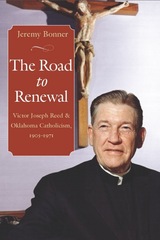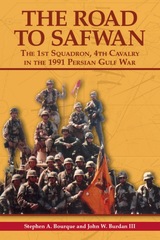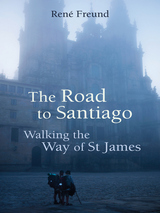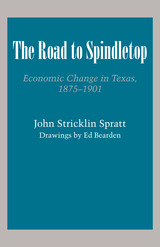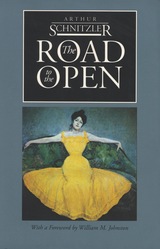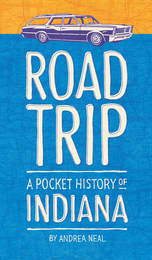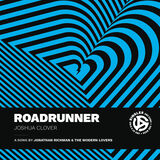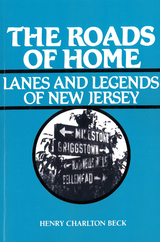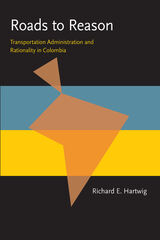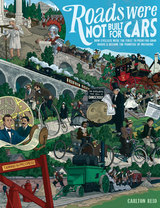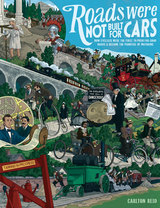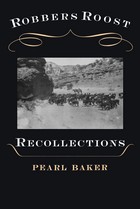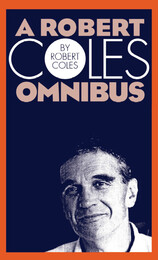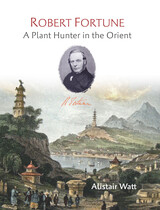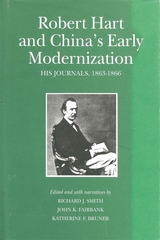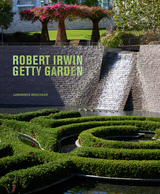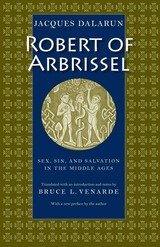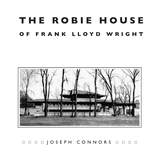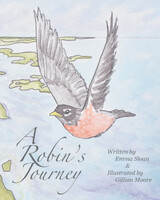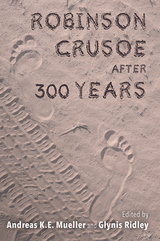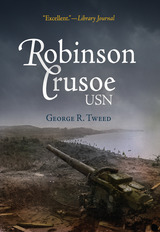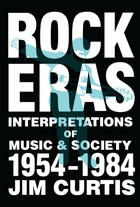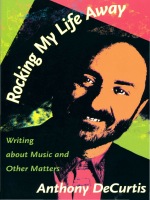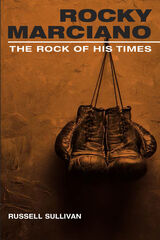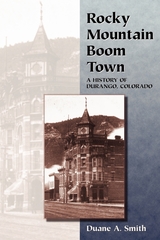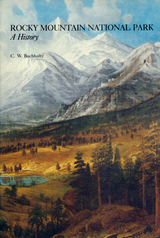Road Pricing: Technologies, economics and acceptability
John Walker
The Institution of Engineering and Technology, 2018 Road pricing is increasingly being implemented around the world to combat congestion, curb carbon and other polluting emissions, compensate for falling revenues from fuel duty, improve the efficiency of the existing transport infrastructure, and fund new transport projects.
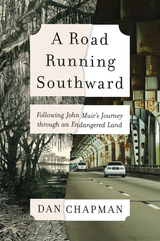 A Road Running Southward: Following John Muir's Journey through an Endangered Land
Dan Chapman
Island Press, 2022 "Engaging hybrid - part lyrical travelogue, part investigative journalism and part jeremiad, all shot through with droll humor." --The Atlanta Journal Constitution
In 1867, John Muir set out on foot to explore the botanical wonders of the South, keeping a detailed journal of his adventures as he traipsed from Kentucky southward to Florida. One hundred and fifty years later, on a similar whim, veteran Atlanta reporter Dan Chapman, distressed by sprawl-driven environmental ills in a region he loves, recreated Muir’s journey to see for himself how nature has fared since Muir’s time. Channeling Muir, he uses humor, keen observation, and a deep love of place to celebrate the South’s natural riches. But he laments that a treasured way of life for generations of Southerners is endangered as long-simmering struggles intensify over misused and dwindling resources. Chapman seeks to discover how Southerners might balance surging population growth with protecting the natural beauty Muir found so special.
Each chapter touches upon a local ecological problem—at-risk species in Mammoth Cave, coal ash in Kingston, Tennessee, climate change in the Nantahala National Forest, water wars in Georgia, aquifer depletion in Florida—that resonates across the South. Chapman delves into the region’s natural history, moving between John Muir’s vivid descriptions of a lush botanical paradise and the myriad environmental problems facing the South today. Along the way he talks to locals with deep ties to the land—scientists, hunters, politicians, and even a Muir impersonator—who describe the changes they’ve witnessed and what it will take to accommodate a fast-growing population without destroying the natural beauty and a cherished connection to nature.
A Road Running Southward is part travelogue, part environmental cri de coeur, and paints a picture of a South under siege. It is a passionate appeal, a call to action to save one of the loveliest and most biodiverse regions of the world by understanding what we have to lose if we do nothing.
 Road Sides: An Illustrated Companion to Dining and Driving in the American South
By Emily Wallace
University of Texas Press, 2019 An illustrated glovebox essential, Road Sides explores the fundamentals of a well-fed road trip through the American South, from A to Z. There are detours and destinations, accompanied by detailed histories and more than one hundred original illustrations that document how we get where we’re going and what to eat and do along the way. Learn the backstory of food-shaped buildings, including the folks behind Hills of Snow, a giant snow cone stand in Smithfield, North Carolina, that resembles the icy treats it sells. Find out how kudzu was used to support a burgeoning highway system, and get to know Edith Edwards—the self-proclaimed Kudzu Queen—who turns the obnoxious vine into delicious teas and jellies. Discover the roots of kitschy roadside attractions, and have lunch with the state-employed mermaids of Weeki Wachee Springs in Florida. Road Sides is for everyone—the driver in search of supper or superlatives (the biggest, best, and even worst), the person who cannot resist a local plaque or snack and pulls over for every historical marker and road stand, and the kid who just wants to gawk at a peach-shaped water tower.
The Road since Structure: Philosophical Essays, 1970-1993, with an Autobiographical Interview
Thomas S. Kuhn
University of Chicago Press, 2000 Thomas Kuhn will undoubtedly be remembered primarily for The Structure of Scientific Revolutions, a book that introduced one of the most influential conceptions of scientific progress to emerge during the twentieth century. The Road Since Structure, assembled with Kuhn's input before his death in 1996, follows the development of his thought through the later years of his life: collected here are several essays extending and rethinking the perspectives of Structure as well as an extensive, fascinating autobiographical interview in which Kuhn discusses the course of his life and philosophy.
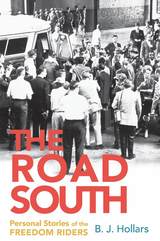 The Road South: Personal Stories of the Freedom Riders
B. J. Hollars
University of Alabama Press, 2018 Revisits the inspiring and heroic stories of the Freedom Riders, through their own words.
In May 1961, despite multiple Supreme Court rulings, segregation remained alive and well within the system of interstate travel. All across the American South, interstate buses as well as their travel facilities were divided racially. This blatant disregard for law and morality spurred the Congress of Racial Equality to send thirteen individuals—seven black, six white—on a harrowing bus trip throughout the South as a sign of protest.
These original riders were met with disapproval, arrests and violence along the way, but that did not stop the movement. That summer, more than four hundred Freedom Riders continued their journey—many of them concluding their ride at Mississippi’s notorious Parchman Farm, where they endured further abuses and indignities. As a result of the riders sacrifice, by November of 1961, the Interstate Commerce Commission finally put an end to interstate commerce segregation, and in the process, elevated the riders to become a source of inspiration for other civil rights campaigns such as voter registration rights and school desegregation.
While much has been written on the Freedom Rides, far less has been published about the individual riders. Join award-winning author B. J. Hollars as he sets out on his own journey to meet them, retracing the historic route and learning the stories of as many surviving riders as he could. The Road South: Personal Stories of the Freedom Riders offers an intimate look into the lives and legacies of the riders. Throughout the book these civil rights veterans’ poignant, personal stories offer timely insights into America’s racial past and hopeful future.
Weaving the past with the present, Hollars aims to demystify the legendary journey, while also confronting more modern concerns related to race in America. The Road South is part memoir and part research-based journalism. It transcends the traditional textbook version of this historical journey to highlight the fascinating stories of the many riders—both black and white—who risked their lives to move the country forward.
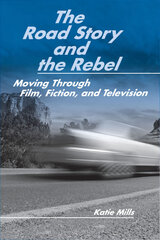 The Road Story and the Rebel: Moving Through Film, Fiction, and Television
Katie Mills
Southern Illinois University Press, 2006 In The Road Story and the Rebel: Moving Through Film, Fiction, and Television, Beat studies scholar Katie Mills examines how road stories, which have offered declarations of independence to generations of rebellious Americans, have been transformed by media, technology, and social movements. The genre, which includes literature, films, television shows, and several types of digital media, has evolved, says Mills, as each new generation questions its own identity and embraces the thrill of “automobility” (autonomy and mobility) thus providing audiences a means to consider radically altered notions of independence, even as the genre cycles between innovation and commodification. This cultural history reveals the unique qualities of road stories and follows the evolution from the Beats’ postwar literary adventures to today’s postmodern reality television shows. Tracing the road story as it moves to both LeRoi Jones’s critique of the Beats’ romanticization of blacks as well as to the mainstream in the 1960s with CBS’s Route 66, Mills also documents the rebel subcultures of novelist Ken Kesey and the Merry Pranksters, who used film and LSD as inspiration on a cross-country bus trip, and she examines the sexualization of male mobility and biker mythology in the films Scorpio Rising,The Wild Angels, and Easy Rider. Mills addresses how the filmmakers of the 1970s—Coppola, Scorsese, and Bogdanovich—flourished in New Hollywood with road films that reflected mainstream audiences and how feminists Joan Didion and Betty Friedan subsequently critiqued them. A new generation of women and minority storytellers gain clout and bring genre remapping to the national consciousness, Mills explains, as the road story evolves from such novels as Song of Solomon to films like Thelma and Louise and television’s Road Rules 2. The Road Story and the Rebel, which includes twenty illustrations, effectively explores the cultural significance of sixty years of rebellion in film, literature, television, and digital media. Spanning media platforms and marginalized communities, the text offers new interpretations of canonical works and reintroduces forgotten works, revealing the genre to be more political and philosophical than previously understood.
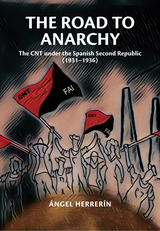 The Road to Anarchy: The CNT under the Spanish Second Republic (1931–1936)
Angel Herrerin
Sussex Academic Press, 2022 The Road to Anarchy; is the result of an exhaustive investigation into the anarcho-syndicalist Confederacion Nacional del Trabajo (CNT) during the democratic years of the Second Republic. By analysing the course of the CNT in terms of its role in the labour conflict and the internal life and approach of the organisation (its ideology, its practice, its internal conflicts, the role of the individual, and the weight of history) this book dismantles the long-held view that the CNT orchestrated three insurrections against the Republic. Key is analysis not only of the violence of the anarchists, but also that of the state. Two crucial themes emerge: the 'political' struggle within the organisation, and its involvement in the revolution of October 1934 and the events of the spring of 1936. Angel Herrerin investigates the controversial relations of the anarchists with other political formations, such as the republicans, the socialists, Communists, and Catalans, with whom the anarchists fought on the republican side during the Civil War. Special attention is paid to the crucial relationship with the socialist trade unions, the Union General de Trabajadores (UGT), as this evolved from one of competition for trade-union dominance to the acceptance of anarcho-syndicalist practices by the socialists and collaboration between the two organisations. The book is based on wide-ranging archival research, including the Institute of Social History in Amsterdam, the National Historical Archive in Spain, the Foreign Office Archives in France and other national archives related to the repression of the CNT, such as those of the Army and Civil Guard in Spain. The study of the CNT in this timeframe is long overdue; the last similar study was undertaken by the US Democratic Congressman John Brademas in the 1950s, a renowned scholar of Spain's social revolution.
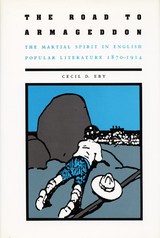 The Road to Armageddon: The Martial Spirit in English Popular Literature, 1870–1914
Cecil D. Eby
Duke University Press, 1988 The Lost Generation has held the imagination of those who succeeded them, partly because the idea that modern war could be romantic, generous, and noble died with the casualties of that war. From this remove, it seems almost perverse that Britons, Germans, and Frenchmen of every social class eagerly rushed to the fields of Flanders and to misery and death.
In The Road to Armageddon Cecil Eby shows how the widely admired writers of English popular fiction and poetry contributed, at least in England, to a romantic militarism coupled with xenophobia that helped create the climate that made World War I seem almost inevitable.
Between the close of the Franco-Prussian War of 1871 and the opening guns of 1914, the works of such widely read and admired writers as H. G. Wells, Rudyard Kipling, J. M. Barrie, and Rupert Brooke, as well as a host of now almost forgotten contemporaries, bombarded their avid readers with strident warnings of imminent invasions and prophecies of the collapse of civilization under barbarian onslaught and internal moral collapse.
Eby seems these narratives as growing from and in turn fueling a collective neurosis in which dread of coming war coexisted with an almost loving infatuation with it. The author presents a vivid panorama of a militant mileau in which warfare on a scale hitherto unimaginable was largely coaxed into being by works of literary imagination. The role of covert propaganda, concealed in seemingly harmless literary texts, is memorably illustrated.
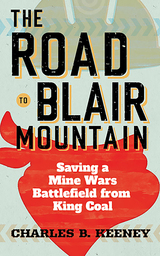 The Road to Blair Mountain: Saving a Mine Wars Battlefield from King Coal
Charles B. Keeney
West Virginia University Press, 2021 “Keeney delivers a riveting and propulsive story about a nine-year battle to save sacred ground that was the site of the largest labor uprising in American history. . . . He unveils a powerful playbook on successful activism that will inspire countless others for generations to come.” —Eric Eyre, Pulitzer Prize winner and author of Death in Mud Lick: A Coal Country Fight against the Drug Companies That Delivered the Opioid Epidemic
In 1921 Blair Mountain in southern West Virginia was the site of the country’s bloodiest armed insurrection since the Civil War, a battle pitting miners led by Frank Keeney against agents of the coal barons intent on quashing organized labor. It was the largest labor uprising in US history. Ninety years later, the site became embroiled in a second struggle, as activists came together to fight the coal industry, state government, and the military- industrial complex in a successful effort to save the battlefield—sometimes dubbed “labor’s Gettysburg”—from destruction by mountaintop removal mining.
The Road to Blair Mountain is the moving and sometimes harrowing story of Charles Keeney’s fight to save this irreplaceable landscape. Beginning in 2011, Keeney—a historian and great-grandson of Frank Keeney—led a nine-year legal battle to secure the site’s placement on the National Register of Historic Places. His book tells a David-and-Goliath tale worthy of its own place in West Virginia history. A success story for historic preservation and environmentalism, it serves as an example of how rural, grassroots organizations can defeat the fossil fuel industry.
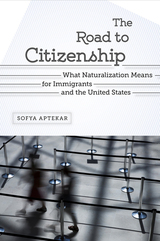 The Road to Citizenship: What Naturalization Means for Immigrants and the United States
Aptekar, Sofya
Rutgers University Press, 2015 Between 2000 and 2011, eight million immigrants became American citizens. In naturalization ceremonies large and small these new Americans pledged an oath of allegiance to the United States, gaining the right to vote, serve on juries, and hold political office; access to certain jobs; and the legal rights of full citizens.
In The Road to Citizenship, Sofya Aptekar analyzes what the process of becoming a citizen means for these newly minted Americans and what it means for the United States as a whole. Examining the evolution of the discursive role of immigrants in American society from potential traitors to morally superior “supercitizens,” Aptekar’s in-depth research uncovers considerable contradictions with the way naturalization works today. Census data reveal that citizenship is distributed in ways that increasingly exacerbate existing class and racial inequalities, at the same time that immigrants’ own understandings of naturalization defy accepted stories we tell about assimilation, citizenship, and becoming American. Aptekar contends that debates about immigration must be broadened beyond the current focus on borders and documentation to include larger questions about the definition of citizenship.
Aptekar’s work brings into sharp relief key questions about the overall system: does the current naturalization process accurately reflect our priorities as a nation and reflect the values we wish to instill in new residents and citizens? Should barriers to full membership in the American polity be lowered? What are the implications of keeping the process the same or changing it? Using archival research, interviews, analysis of census and survey data, and participant observation of citizenship ceremonies, The Road to Citizenship demonstrates the ways in which naturalization itself reflects the larger operations of social cohesion and democracy in America.
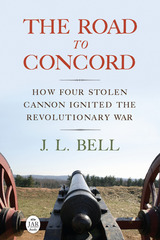 The Road to Concord: How Four Stolen Cannon Ignited the Revolutionary War
J. L. Bell
Westholme Publishing, 2016 With a Clash Between American Rebels and Royal Authorities Heating Up, Radicals Smuggled Cannon Out of Boston—and the British Came Looking for Them
In the early spring of 1775, on a farm in Concord, Massachusetts, British army spies located four brass cannon belonging to Boston’s colonial militia that had gone missing months before. British general Thomas Gage had been searching for them, both to stymie New England’s growing rebellion and to erase the embarrassment of having let cannon disappear from armories under redcoat guard. Anxious to regain those weapons, he drew up plans for his troops to march nineteen miles into unfriendly territory. The Massachusetts Patriots, meanwhile, prepared to thwart the general’s mission. There was one goal Gage and his enemies shared: for different reasons, they all wanted to keep the stolen cannon as secret as possible. Both sides succeeded well enough that the full story has never appeared until now.
The Road to Concord: How Four Stolen Cannon Ignited the Revolutionary War by historian J. L. Bell reveals a new dimension to the start of America’s War for Independence by tracing the spark of its first battle back to little-known events beginning in September 1774. The author relates how radical Patriots secured those four cannon and smuggled them out of Boston, and how Gage sent out spies and search parties to track them down. Drawing on archives in the United States, United Kingdom, and Canada, the book creates a lively, original, and deeply documented picture of a society perched on the brink of war.
 The Road to Dallas: The Assassination of John F. Kennedy
David Kaiser
Harvard University Press, 2008 Neither a random event nor the act of a lone madman—the assassination of President John F. Kennedy was an appalling and grisly conspiracy. This is the unvarnished story.
With deft investigative skill, David Kaiser shows that the events of November 22, 1963, cannot be understood without fully grasping the two larger stories of which they were a part: the U.S. government’s campaign against organized crime, which began in the late 1950s and accelerated dramatically under Robert Kennedy; and the furtive quest of two administrations—along with a cadre of private interest groups—to eliminate Fidel Castro.
The seeds of conspiracy go back to the Eisenhower administration, which recruited top mobsters in a series of plots to assassinate the Cuban leader. The CIA created a secretive environment in which illicit networks were allowed to expand in dangerous directions. The agency’s links with the Mafia continued in the Kennedy administration, although the President and his closest advisors—engaged in their own efforts to overthrow Castro—thought this skullduggery had ended. Meanwhile, Cuban exiles, right-wing businessmen, and hard-line anti-Communists established ties with virtually anyone deemed capable of taking out the Cuban premier. Inevitably those ties included the mob.
The conspiracy to kill JFK took shape in response to Robert Kennedy’s relentless attacks on organized crime—legal vendettas that often went well beyond the normal practices of law enforcement. Pushed to the wall, mob leaders merely had to look to the networks already in place for a solution. They found it in Lee Harvey Oswald—the ideal character to enact their desperate revenge against the Kennedys.
Comprehensive, detailed, and informed by original sources, The Road to Dallas adds surprising new material to every aspect of the case. It brings to light the complete, frequently shocking, story of the JFK assassination and its aftermath.
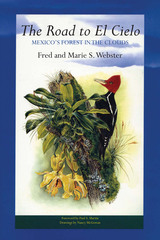 The Road to El Cielo: Mexico's Forest in the Clouds
By Fred and Marie S. Webster
University of Texas Press, 2002 Hidden high in the Sierra de Guatemala mountain range of northeastern Mexico in the state of Tamaulipas is the northernmost tropical cloud forest of the Western Hemisphere. Within its humid oak-sweetgum woodlands, tropical and temperate species of plants and animals mingle in rare diversity, creating a mecca for birders and other naturalists. Fred and Marie Webster first visited Rancho del Cielo, cloud forest home of Canadian immigrant Frank Harrison, in 1964, drawn by the opportunity to see such exotic birds as tinamous, trogons, motmots, and woodcreepers only 500 miles from their Austin, Texas, home. In this book, they recount their many adventures as researchers and tour leaders from their base at Rancho del Cielo, interweaving their reminiscences with a history of the region and of the struggle by friends from both sides of the border to have some 360,000 acres of the mountain declared an area protected from exploitation—El Cielo Biosphere Reserve. Their firsthand reporting, enlivened with vivid tales of the people, land, and birds of El Cielo, adds an engagingly personal chapter to the story of conservation in Mexico.
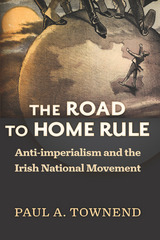 The Road to Home Rule: Anti-imperialism and the Irish National Movement
Paul A. Townend
University of Wisconsin Press, 2016 In the 1870s and 1880s, as the United Kingdom avidly built its empire in Asia and Africa, its rampant expansionism came under the scrutiny of its first and oldest colony, Ireland. Some Irish considered themselves loyal subjects and proud participants in the imperial enterprise, but others drew sharp analogies between the crown's ongoing conquests of distant lands and its centuries-old oppression of their homeland. The Irish were aware of how the British army had brutally suppressed Afghans, Egyptians, Zulus, and Boers—and how returning troops were then redeployed to quash dissent in Ireland. In Irish eyes, misrule by British officials and absentee landlords mirrored imperial oppression across the globe.
Paul Townend shows that a growing critique of British imperialism shaped a rapidly evolving Irish political consciousness and was a crucial factor giving momentum to the Home Rule and Land League campaigns. Examining newspaper accounts, the rich political cartoons of the era, and the rhetoric and actions of Irish nationalists, he argues that anti-imperialism was a far more important factor in the formation of the independence movement than has been previously recognized in historical scholarship.
 The Road to Love Canal: Managing Industrial Waste before EPA
By Craig E. Colten and Peter N. Skinner
University of Texas Press, 1995 The toxic legacy of Love Canal vividly brought the crisis in industrial waste disposal to public awareness across the United States and led to the passage of the Superfund legislation in 1980. To discover why disasters like Love Canal have occurred and whether they could have been averted with knowledge available to waste managers of the time, this book examines industrial waste disposal before the formation of the Environmental Protection Agency in 1970. Colten and Skinner build their study around three key questions. First, what was known before 1970 about the hazards of certain industrial wastes and their potential for causing public health problems? Second, what were the technical capabilities for treating or containing wastes during that time? And third, what factors other than technical knowledge guided the actions of waste managers before the enactment of explicit federal laws? The authors find that significant information about the hazards of industrial wastes existed before 1970. Their explanations of why this knowledge did not prevent the toxic legacy now facing us will be essential reading for environmental historians and lawyers, public health personnel, and concerned citizens.
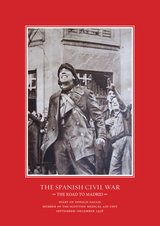 The Road to Madrid: Diary of Donald Gallie, Member of the Scottish Medical Aid Unit, Serving in the Spanish Civil War, September–December 1936
Nina Stevens
Sussex Academic Press, 2022 When a failed right-wing military coup provoked civil war in Spain, in July 1936, the Spanish government made a worldwide plea for help. In Britain, Aid Spanish Committees sprang up nationwide. Nowhere was empathy more keenly felt for the working people of Spain than among the people of Glasgow, which became the hub of the Scottish Aid for Spain movement. Glasgow was also home to an enterprise which was to make a significant contribution to the Spanish Republic the Scottish Ambulance Unit (SAU). The Unit was the brainchild of a wealthy Glaswegian philanthropist, Sir Daniel Macaulay Stevenson (18511944).
The Unit's valiant and tireless work soon earned it an excellent reputation among
Republican forces and as news of its remarkable work spread, volunteers became affectionately known as Los Brujos The Wizards. However, the off-duty activities of some of the SAU's members earned it an altogether different kind of reputation, and the Unit was soon to become immersed in scandal which tarnished its good name. Donald Gallie was a member of the first SAU team to arrive in Madrid (there would be three successive expeditions). He was 24 years old when Civil War broke out. His family shared a strong sense of commitment, and this, together with Donald's love of travel and adventure, is what impelled him to volunteer for service. His skills as mechanic would prove invaluable in the aid and transport given to casualties. His Diary is a remarkable document, and its publication a significant event in the historiography of the Spanish Civil War.
The Road to Marion Town: The Settlement of Osceola County, State of Michigan
J. August Lithen
Parkhurst Brothers, Inc., 2018 Written in the style of a man who knows James Michener (1907-1997) well, The Road to Mariontown is meticulously researched, engaging and entertaining. The book presents a richly detailed history of Osceola County and early Michigan. This long-view history of Osceola County, Michigan, focuses on geologic history, native cultures, exploration by European and American Whites, Entrepreneurial development, governmental formation, railroad-building, and a rich social history. Lithen’s history—twelve years in the research and writing—is a labor of love unparalleled in writing of the area; taking the reader on a journey through time that concludes with with the devastating village of Marion fire of 1904.
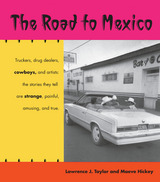 The Road to Mexico
Lawrence J. Taylor and Maeve Hickey
University of Arizona Press, 1997 The road between Tucson, Arizona, and Magdalena de Kino, Sonora, runs straight and true. Slicing through miles of rolling desert and faraway blue mountains, it could be just another fast way to get from here to there. But if the traveler has a taste for adventure and time to spare, this road can be a rich and unforgettable ride.
Equipped with camera, pen, and a lively curiosity, photographer Maeve Hickey and writer Lawrence J. Taylor set out to capture whatever might come their way on the road to Mexico. They roamed and rambled, they stayed well off the beaten track, and they talked to nearly everyone they met, from wisecracking waitresses to landed gentry to street urchins dressed in rags. Their book brings to life the calf ropers and casinos, the saints and sinners, the mariachis and miracles in a no-man's-land that sometimes seems to belong neither to the United States nor to Mexico.
Following the footsteps of earlier travelers-traders, warriors, missionaries, and explorers-these modern pilgrims take a hands-on approach to their journey. Throughout, both writer and photographer convey the sizzle and spice of a land where Indian, Mexican, and Anglo worlds have collided, coexisted, and melted into each other for centuries. Their eye for the hidden telling detail carries the reader straight into the action, and their zest for excitement spurs any traveler to drop everything, grab a bag, and hit the road to Mexico.
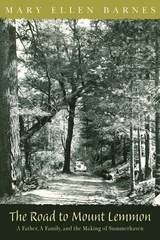 The Road to Mount Lemmon: A Father, A Family, and the Making of Summerhaven
Mary Ellen Barnes
University of Arizona Press, 2009 As you wind your way up the Catalina Highway, it doesn’t matter whether you’re a first-time visitor or a native Tucsonan; you know you’re on the way to someplace special.
The Santa Catalina Mountains first captivated Tony Zimmerman on a 1937 hunting trip. Regard for the alpine beauty must have been in his genes—he was the son of Swiss German immigrants—and by 1940 the Tucson schoolteacher had begun taking his family to Mount Lemmon to spend the summer. Back then, the road up the mountain was a rough two-track dirt road from Oracle, and Summerhaven was nothing but a sleepy cluster of summer cabins. But Tony Zimmerman was to help change all of that.
The Road to Mount Lemmon is a beguiling memoir of the Catalina Mountains told by the daughter of one of the pioneers in the life and development of Mount Lemmon’s communities. Mary Ellen Barnes tells how her father Tony resigned from teaching in 1943 to devote his career to the development of this mountain oasis. He not only sold real estate for long time landowner Randolph Jenks, he even bought the village’s tiny two-room store, installing a sawmill to build a larger store, and built the Mount Lemmon Inn. And as she spins Tony’s personal saga, she also gives readers a glimpse of the Catalinas before Tucson became a boom town, recalling idyllic adventures in wild country and the cowboys, rangers, ranchers, and loggers who worked there.
Barnes tells Tony’s story as if sharing it with family, evoking her father’s personality on every page. The Road to Mount Lemmon is an intimate view of a mountain community over the course of nearly sixty years—a view that few people have shared but one all can appreciate.
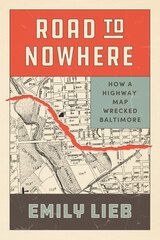 Road to Nowhere: How a Highway Map Wrecked Baltimore
Emily Lieb
University of Chicago Press, 2025 Traces the birth, plunder, and scavenging of Rosemont, a Black middle-class neighborhood in Baltimore.
In the mid-1950s Baltimore’s Rosemont neighborhood was alive and vibrant with smart rowhouses, a sprawling park, corner grocery stores, and doctor’s offices. By 1957, a proposed expressway threatened to gut this Black, middle-class community from stem to stern.
That highway was never built, but it didn’t matter—even the failure to build it destroyed Rosemont economically, if not physically. In telling the history of the neighborhood and the notional East–West Expressway, Emily Lieb shows the interwoven tragedies caused by racism in education, housing, and transportation policy. Black families had been attracted to the neighborhood after Baltimore’s Board of School Commissioners converted several white schools into “colored” ones, which had also laid the groundwork for predatory real-estate agents who bought low from white sellers and sold high to determined Black buyers. Despite financial discrimination, Black homeowners built a thriving community before the city council formally voted to condemn some nine hundred homes in Rosemont for the expressway, leading to deflated home values and even more predatory real estate deals.
Drawing on land records, oral history, media coverage, and policy documents, Lieb demystifies blockbusting, redlining, and prejudicial lending, highlighting the national patterns at work in a single neighborhood. The result is an absorbing story about the deliberate decisions that produced racial inequalities in housing, jobs, health, and wealth—as well as a testament to the ingenuity of the residents who fought to stay in their homes, down to today.
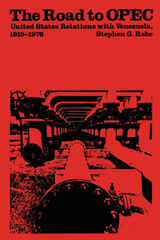 The Road to OPEC: United States Relations with Venezuela, 1919-1976
By Stephen G. Rabe
University of Texas Press, 1982 On September 10, 1960, Venezuela spearheaded the formation of the Organization of Petroleum Exporting Countries (other original members included Saudi Arabia, Iran, Iraq, and Kuwait). However, in a world abundantly supplied with oil, the United States could and did ignore Venezuelan suggestions that OPEC and the consuming nations work together to control production and to increase prices. Then, in late 1973, OPEC sent shudders throughout the world economy, and an energy crisis struck with full force. Emboldened by the power of their oil cartel, Venezuelan leaders denounced the old economic relationship with the United States, nationalized U.S. oil and steel holdings, and fashioned a foreign economic policy that differed sharply from Washington's. The Road to OPEC is the story of the fiery debates among U.S. oil companies, the Department of State, and the Venezuelan government over oil policies—clashes that led Venezuela to establish OPEC and to nationalize U.S.-owned properties. In addition, this is the first study of twentieth-century Venezuelan-U.S. relations. Its focus on oil diplomacy is placed within the context of key U.S. policies toward Latin America and such programs as the Open Door, the Good Neighbor, and the Alliance for Progress. The author also provides insight into both the politics of the contemporary energy crisis and the growing split between raw-material producers and their industrial customers. The Road to OPEC is based on extensive archival research, as well as the author's successful use of the Freedom of Information Act to declassify files of such agencies as the National Security Council and the CIA.
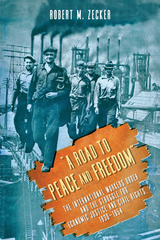 "A Road to Peace and Freedom": The International Workers Order and the Struggle for Economic Justice and Civil Rights, 1930-1954
Robert M. Zecker
Temple University Press, 2017 The International Workers Order was an American consortium of ethnic mutual self-insurance societies that advocated for unemployment insurance, Social Security and vibrant industrial unions. This interracial leftist organization guaranteed the healthcare of its 180,000 white, black, Hispanic and Arabic working-class members. But what accounted for the popularity—and eventual notoriety—of this Order?
Mining extensive primary sources, Robert Zecker gives voice to the workers in “A Road to Peace and Freedom.” He describes the group's economic goals, commitment to racial justice, and activism, from lobbying to end segregation and lynching in America to defeating fascism abroad. Zecker also illustrates the panoply of entertainment, sports, and educational activities designed to cultivate the minds and bodies of members.
However, the IWO was led by Communists, and the Order was targeted for red-baiting during the Cold War, subject to government surveillance, and ultimately "liquidated." Zecker explains how the dismantling of the IWO and the general suppression of left-wing dissenting views on economic egalitarianism and racial equality had deleterious effects for the entire country. Moreover, Zecker shows why the sobering lesson of the IWO remains prescient today.
 The Road to Rebellion: Class Formation and Kansas Populism, 1865-1900
Scott G. McNall
University of Chicago Press, 1988 In the late 1800s an unprecedented coalition of American farmers rose to challenge the course of national politics. Aspiring to a society in which justice and equality were the norm, the farmers galvanized thousands of voters, causing two dominant political parties to reshape their agendas. Yet by 1900, the movement was virtually dead. Scott G. McNall analyzes why America's largest mass-democratic movement failed. He focuses his inquiry on Kansas, the center of the agrarian rebellion that led to the creation of the Farmer's Alliance and, later, to the founding of the People's party. Integrating new historical accounts with original analyses of census data, Alliance membership records, and speech transcripts, McNall restores these Kansas voices, revealing their struggle against an entrenched class system, indifferent political parties, and economic hardship.
McNall rejects the traditional view that blames the failure of the Alliance on a turn to mass-based electoral politics, but rather sees the move into national politics by the Farmer's Alliance as part of a rational strategy to better wage their fight for economic justice. The Kansas populists failed, he argues, because of their inability to embrace a broad, working-class base, to provide an effective alternative vision, and ultimately to create a distinct class organization. Debates about how classes come into being, or how democracy is to be realized, cannot be settled in the abstract. McNall's recreation of this heroic struggle is a model in the analysis of class formation. At the same time, The Road to Rebellion is dynamic social history, which holds vital lessons for structuring and realizing alternative political agendas today.
The Road to Santiago: Walking the Way of St James
René Freund
Haus Publishing, 2016 Each year, over 200,000 people pilgrimage to the Cathedral of Santiago de Compostela in Spain. Often called the Way of St. James, this journey has been an important Christian tradition for centuries. The Road to Santiago is one man’s incredible story of walking almost a thousand miles to experience it.
As René Freund learns, when you reach the edge of the European continent having walked along the Way of St. James—which pilgrims of former times thought to be the end of the world—only then do you realize that the old pilgrim’s saying is true: the journey does not end in Santiago. The journey begins in Santiago. In this vivid travelogue, Freund not only introduces us to the overwhelming natural beauty he encountered along the way, but also shares his experience of reaching his physical and psychological limits during the arduous journey.
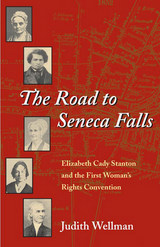 The Road to Seneca Falls: Elizabeth Cady Stanton and the First Woman's Rights Convention
Judith Wellman
University of Illinois Press, 2004 Feminists from 1848 to the present have rightly viewed the Seneca Falls convention as the birth of the women's rights movement in the United States and beyond. In The Road To Seneca Falls, Judith Wellman offers the first well documented, full-length account of this historic meeting in its contemporary context.
The convention succeeded by uniting powerful elements of the antislavery movement, radical Quakers, and the campaign for legal reform under a common cause. Wellman shows that these three strands converged not only in Seneca Falls, but also in the life of women's rights pioneer Elizabeth Cady Stanton. It is this convergence, she argues, that foments one of the greatest rebellions of modern times.
Rather than working heavy-handedly downward from their official "Declaration of Sentiments," Wellman works upward from richly detailed documentary evidence to construct a complex tapestry of causes that lay behind the convention, bringing the struggle to life. Her approach results in a satisfying combination of social, community, and reform history with individual and collective biographical elements.
The Road to Seneca Falls challenges all of us to reflect on what it means to be an American trying to implement the belief that "all men and women are created equal," both then and now. A fascinating story in its own right, it is also a seminal piece of scholarship for anyone interested in history, politics, or gender.
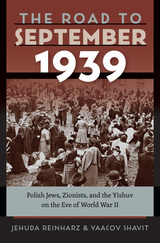 The Road to September 1939: Polish Jews, Zionists, and the Yishuv on the Eve of World War II
Jehuda Reinharz and Yaacov Shavit
Brandeis University Press, 2018 In European and Holocaust historiography, it is generally believed that neither the Zionist movement nor the Yishuv were mindful of the plight of European Jews in the face of the Nazi threat during the 1930s. Drawing on a wide variety of memoirs, letters, and institutional reports by people from all walks of life, this volume sheds new light on a troubled period in Jewish history. Jehuda Reinharz and Yaacov Shavit trace Jewish responses to developments in Eastern and Central Europe, as well as reactions to British policy on the question of a Jewish homeland, to show that Zionists in the Yishuv worked tirelessly on the international stage on behalf of their coreligionists in Europe. Nevertheless, their efforts were all too often shattered by the realities of their powerlessness and lack of resources. Piercing to the heart of conversations about how or whether to save Jews in an increasingly hostile Europe, this volume provides a nuanced assessment of what could and could not be achieved in the years just prior to World War II and Holocaust.
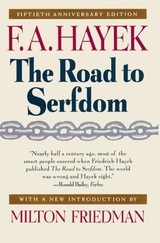 The Road to Serfdom
F. A. Hayek
University of Chicago Press, 1994 A classic work in political philosophy, intellectual and cultural history, and economics, The Road to Serfdom has inspired and infuriated politicians, scholars, and general readers for half a century. Originally published in England in the spring of 1944—when Eleanor Roosevelt supported the efforts of Stalin, and Albert Einstein subscribed lock, stock, and barrel to the socialist program—The Road to Serfdom was seen as heretical for its passionate warning against the dangers of state control over the means of production. For F. A. Hayek, the collectivist idea of empowering government with increasing economic control would inevitably lead not to a utopia but to the horrors of nazi Germany and fascist Italy.
First published by the University of Chicago Press on September 18, 1944, The Road to Serfdom garnered immediate attention from the public, politicians, and scholars alike. The first printing of 2,000 copies was exhausted instantly, and within six months more than 30,000 were sold. In April of 1945, Reader's Digest published a condensed version of the book, and soon thereafter the Book-of-the-Month Club distributed this condensation to more than 600,000 readers. A perennial best-seller, the book has sold over a quarter of a million copies in the United States, not including the British edition or the nearly twenty translations into such languages as German, French, Dutch, Swedish, and Japanese, and not to mention the many underground editions produced in Eastern Europe before the fall of the iron curtain.
After thirty-two printings in the United States, The Road to Serfdom has established itself alongside the works of Alexis de Tocqueville, John Stuart Mill, and George Orwell for its timeless meditation on the relation between individual liberty and government authority. This fiftieth anniversary edition, with a new introduction by Milton Friedman, commemorates the enduring influence of The Road to Serfdom on the ever-changing political and social climates of the twentieth century, from the rise of socialism after World War II to the Reagan and Thatcher "revolutions" in the 1980s and the transitions in Eastern Europe from communism to capitalism in the 1990s.
F. A. Hayek (1899-1992), recipient of the Medal of Freedom in 1991 and co-winner of the Nobel Memorial Prize in Economics in 1974, was a pioneer in monetary theory and the principal proponent of libertarianism in the twentieth century.
On the first American edition of The Road to Serfdom:
"One of the most important books of our generation. . . . It restates for our time the issue between liberty and authority with the power and rigor of reasoning with which John Stuart Mill stated the issue for his own generation in his great essay On Liberty. . . . It is an arresting call to all well-intentioned planners and socialists, to all those who are sincere democrats and liberals at heart to stop, look and listen."—Henry Hazlitt, New York Times Book Review, September 1944
"In the negative part of Professor Hayek's thesis there is a great deal of truth. It cannot be said too often—at any rate, it is not being said nearly often enough—that collectivism is not inherently democratic, but, on the contrary, gives to a tyrannical minority such powers as the Spanish Inquisitors never dreamt of."—George Orwell, Collected Essays
 The Road to Serfdom: Text and Documents--The Definitive Edition
F. A. Hayek
University of Chicago Press, 2007 An unimpeachable classic work in political philosophy, intellectual and cultural history, and economics, The Road to Serfdom has inspired and infuriated politicians, scholars, and general readers for half a century. Originally published in 1944—when Eleanor Roosevelt supported the efforts of Stalin, and Albert Einstein subscribed lock, stock, and barrel to the socialist program—The Road to Serfdom was seen as heretical for its passionate warning against the dangers of state control over the means of production. For F. A. Hayek, the collectivist idea of empowering government with increasing economic control would lead not to a utopia but to the horrors of Nazi Germany and Fascist Italy.
First published by the University of Chicago Press on September 18, 1944, The Road to Serfdom garnered immediate, widespread attention. The first printing of 2,000 copies was exhausted instantly, and within six months more than 30,000 books were sold. In April 1945, Reader’s Digest published a condensed version of the book, and soon thereafter the Book-of-the-Month Club distributed this edition to more than 600,000 readers. A perennial best seller, the book has sold 400,000 copies in the United States alone and has been translated into more than twenty languages, along the way becoming one of the most important and influential books of the century.
With this new edition, The Road to Serfdom takes its place in the series The Collected Works of F. A. Hayek. The volume includes a foreword by series editor and leading Hayek scholar Bruce Caldwell explaining the book's origins and publishing history and assessing common misinterpretations of Hayek's thought. Caldwell has also standardized and corrected Hayek's references and added helpful new explanatory notes. Supplemented with an appendix of related materials ranging from prepublication reports on the initial manuscript to forewords to earlier editions by John Chamberlain, Milton Friedman, and Hayek himself, this new edition of The Road to Serfdom will be the definitive version of Hayek's enduring masterwork.
The Road to Spindletop: Economic Change in Texas, 1875–1901
By John Stricklin Spratt; drawings by Ed Bearden
University of Texas Press, 1955 This book is an economic history of Texas at the end of the nineteenth century. In 1875, Texas was an agrarian state with limited industry. A generation later, agriculture was heavily commercialized, thousands of miles of railroads carried people and goods around the state, and urban populations increased rapidly. Even before the Spindletop gusher that irrevocably changed the state’s future, Texas had already moved far from its days as a Mexican and American frontier.
The Road to the Open
Arthur Schnitzler
Northwestern University Press, 1991 Turn-of-the-century Vienna was the scene of tremendous social and artistic upheaval. Arthur Schnitzler's novel The Road to the Open brilliantly captures the complex world of Freud, Mahler, Strauss, and Klimt, dealing masterfully with the basic issues of Austrian anti-Semitism, the Viennese intellectual community, post-Wagnerian music, and the psychology of Vienna's middle class.
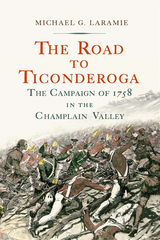 The Road to Ticonderoga: The Campaign of 1758 in the Champlain Valley
Michael G. Laramie
Westholme Publishing, 2023 The British campaign to capture Fort Carillon on the Ticonderoga Peninsula in 1758 resulted in the largest battle of the French and Indian War. Crafted by Prime Minister William Pitt, the scope and scale of the British effort was staggering, calling for their northern colonies to raise 20,000 men to rendezvous with the British Regulars at Albany. The directive would test the patience, resources, and will of the colonial governments as well as that of the newly appointed the British commander-in-chief, General James Abercrombie. For the defenders of New France matters were dire. Reports were arriving that Abercrombie’s numbers were over twice the entire fighting strength of Canada. For the French field commander, the Marquis de Montcalm, there were few options. The Marquis had long opposed defending frontier forts, calling for abandoning these posts at the first sign of threat in order to conserve the colony’s resources. The French Governor disagreed and dispatched Montcalm and his white-coated French regulars with orders to defend Fort Carillon. With his army the only thing that stood between the British and the interior of Canada, there appeared to be a single path before the Marquis. Whether the Governor liked it or not, a rearguard action followed by a retreat down Lake Champlain was the only answer that would leave the army of Canada in position to fight again. Yet, within the span of a few days Montcalm would set these views aside, and suddenly risk both his army and the fate of Canada on a single risky battle.
Based on journals, letters, and accounts of the participants on both sides, The Road to Ticonderoga: The Campaign of 1758 in the Champlain Valley by Michael G. Laramie recounts this unexpected tale of victory and defeat on the North American frontier. Here we learn how the unexpected death of a dynamic leader, George Howe, elder brother of Richard and William, nearly crushed “the soul of General Abercrombie’s army,” leading to misinterpreted orders and hesitation on the part of the British. At the same time, the French commander perilously underestimated the ability of his own forces while overestimating his enemy’s before his fateful and unexpected decision to make his stand at Ticonderoga. With lessons and repercussions for future warfare in North America, The Road to Ticonderoga shows how a series of small mistakes can cascade into a catastrophe under weak leadership—or be exploited by a strong one.
 The Road to War in Serbia: Trauma and Catharsis
Nebojša Popov
Central European University Press, 2000 The Yugoslav crisis, with its armed conflict, ethnic cleansing and the reverberating ideas and mindsets, has been going on for more than ten years. The Road to War in Serbia is the first serious assessment to explore the roots of the conflict in the former Yugoslavia. Based on years of research, the authors - all eminent scholars in the field who have lived through these social conflicts - highlight key issues which have to date remained unknown or which have been previously neglected. The issues dealt with include the institutional frameworks of ethnicity and nationalism; the input of the church, science, literature and sports; specific catalysts of the conflict and the role of the political actors, students, the ruling party and the media. The Road to War in Serbia will be of great interest to all readers who want to understand why and how the violent option of settling disputes and conflicts on the territory of Yugoslavia is being accepted.
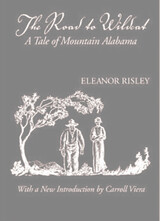 The Road to Wildcat: A Tale of Mountain Alabama
Eleanor Risley
University of Alabama Press, 2004 A remarkable chronicle of southern mountain life in the early 20th century
The Road to Wildcat recounts the travels in North Alabama in the mid-1920s of Eleanor Risley (suffering from diabetes), her asthmatic husband, Pierre, their dog, John, and a Chinese wheelbarrow named Sisyphus that held their travel goods. Advised to make the walking tour for improvement of their health, the group left Fairhope in south Alabama and walked hundreds of miles in the southern Appalachians for months, sleeping out under the stars at night, or in a canvas tent or an abandoned building, cooking their fresh-caught foods over campfires, and accepting the generosity and advice of the mountain people they met, some of them moonshiners and outlaws.
During their sojourn across the rural wilderness, they enjoyed fiddlin’ dances in rickety halls, joined Sacred Harp singers, learned about the grapevine telegraph, saw the dreadful effects of inbreeding, and attended “Snake Night” at Posey Holler (a religious revival that included snake handling). Published in segments in the Atlantic Monthly in 1928 and 1929 and then reorganized into book form, the travelogue is a colorful record of the culture, customs, and dialect of the southern mountaineers of that era.
Road Trip: A Pocket History of Indiana
Andrea Neal
Indiana Historical Society Press, 2016 The bicentennial of Indiana's statehood in 2016 is the perfect time for Hoosiers of all stripes to hit the road and visit sites that speak to the nineteenth state's character. In her book, Andrea Neal has selected the top 100 events/historical figures in Indiana history, some well known like George Rogers Clark, and others obscured by time or memory such as the visit of Marquis de Lafayette to southern Indiana.
These highly readable essays and the photographs that accompany them feature a tourist site or landmark that in some way brings the subject to life. This will enable interested Hoosiers to travel the entire state to experience history firsthand. Related activities and sites include nature hikes, museums, markers, monuments, and memorials. The sites appear in chronological order, beginning with the impact of the Ice Age on Indiana and ending with the legacy of the bicentennial itself.
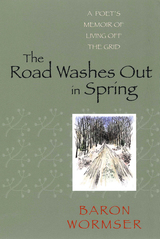 The Road Washes Out in Spring: A Poet’s Memoir of Living Off the Grid
Baron Wormser
University Press of New England, 2008 For nearly twenty-five years, poet Baron Wormser and his family lived in a house in Maine with no electricity or running water. They grew much of their own food, carried water by hand, and read by the light of kerosene lamps. They considered themselves part of the “back to the land” movement, but their choice to live off the grid was neither statement nor protest: they simply had built their house too far from the road and could not afford to bring in power lines. Over the years, they settled in to a life that centered on what Thoreau called “the essential facts.” In this graceful meditation, Wormser similarly spurns ideology in favor of observation, exploration, and reflection. “When we look for one thread of motive,” he writes, “we are, in all likelihood, deceiving ourselves.” His refusal to be satisfied with the obvious explanation, the single thread of motive, makes him a keen and sympathetic observer of his neighbors and community, a perceptive reader of poetry and literature, and an honest and unselfconscious analyst of his own responses to the natural world. The result is a series of candid personal essays on community and isolation, nature, civilization, and poetry.
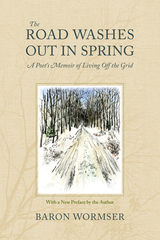 The Road Washes Out in Spring: A Poet’s Memoir of Living Off the Grid
Baron Wormser
Brandeis University Press, 2023 A new edition of an evergreen back-to-nature book in the tradition of Thoreau.
For nearly twenty-five years, poet Baron Wormser and his family lived in a house in Maine with no electricity or running water. They grew much of their own food, carried water by hand, and read by the light of kerosene lamps. They considered themselves part of the “back to the land” movement, but their choice to live off the grid was neither a statement nor a protest: they simply had built their house too far from the road and could not afford to bring in power lines. Over the years, they settled into a life that centered on what Thoreau would have called “the essential facts.” In this graceful meditation, Wormser similarly spurns ideology in favor of observation, exploration, and reflection. “When we look for one thread of motive,” he writes, “we are, in all likelihood, deceiving ourselves.” His refusal to be satisfied with the obvious explanation, the single thread of motive, makes him a keen and sympathetic observer of his neighbors and community, a perceptive reader of poetry and literature, and an honest and unselfconscious analyst of his own responses to the natural world. The result is a series of candid personal essays on community and isolation, nature, civilization, and poetry. Lovely and rich, The Road Washes Out in Spring is an immersive read. A new preface by the author rounds out this new edition.
 Road-Book America: Contemporary Culture and the New Picaresque
Rowland A. Sherrill
University of Illinois Press, 2000 In this wide-ranging and sophisticated study, Rowland Sherrill explores the resurgence and transformation of an old literary form--the picaresque narrative--into a new form that he shows to be both responsive and instructive to late twentieth-century American life.
Road-Book America discloses how the old picaresque tradition, embodied in such novels as Henry Fielding's Tom Jones and Daniel Defoe's Moll Flanders, opens to include a number of new American texts, both fiction and nonfiction, that decisively share the characterizing form. Sherrill's discussion encompasses hundreds of American narratives published in the past four decades, including such examples of the genre as William Least Heat-Moon's Blue Highways, John Steinbeck's Travels with Charley, James Leo Herlihy's Midnight Cowboy, Bill Moyers's Listening to America, and E. L. Doctorow's Billy Bathgate.
Sketching the socially marginal, ingenuous, traveling characters common to both old and new versions, Sherrill shows how the "new American picaresque" transforms the satirical aims of the original into an effort to map and catalog the immensity and variety of America.
Open, resilient, perennially hopeful, and endowed with a protean adaptability, the protagonist of the new American picaresque follows a therapeutic path for the alienated modern self. Mining the relevance of the reformulated picaresque for American life, Road-Book America shows how this old form, adaptable as the picaro himself, lays the groundwork for spiritual renewal and a restoration of cultural confidence in some old ways of being American.
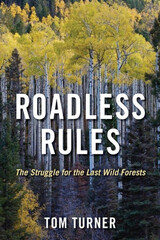 Roadless Rules: The Struggle for the Last Wild Forests
Tom Turner
Island Press, 2009 Roadless Rules is a fast-paced and insightful look at one of the most important, wide-ranging, and controversial efforts to protect public forests ever undertaken in the United States. In January 2000, President Clinton submitted to the Federal Register the Roadless Area Conservation Rule, prohibiting road construction and timber harvesting in designated roadless areas. Set to take effect sixty days after Clinton left office, the rule was immediately challenged by nine lawsuits from states, counties, off-road-vehicle users, and timber companies. The Bush administration refused to defend the rule and eventually sought to replace it with a rule that invited governors to suggest management policies for forests in their states. That rule was attacked by four states and twenty environmental groups and declared illegal. Roadless Rules offers a fascinating overview of the creation of the Clinton roadless rule and the Bush administration’s subsequent replacement rule, the controversy generated, the response of the environmental community, and the legal battles that continue to rage more than seven years later. It explores the value of roadless areas and why the Clinton rule was so important to environmentalists, describes the stakeholder groups involved, and takes readers into courtrooms across the country to hear critical arguments. Author Tom Turner considers the lessons learned from the controversy, arguing that the episode represents an excellent example of how the system can work when all elements of the environmental movement work together—local groups and individuals determined to save favorite places, national organizations that represent local interests but also concern themselves with national policies, members of the executive branch who try to serve the public interest but need support from outside, and national organizations that use the legal system to support progress achieved through legislation or executive action.
Roadrunner: A Song by Jonathan Richman and the Modern Lovers
Joshua Clover
Duke University Press, 2021 Jonathan Richman and the Modern Lovers' 1972 song “Roadrunner” captures the freedom and wonder of cruising down the highway late at night with the radio on. Although the song circles Boston's beltway, its significance reaches far beyond Richman's deceptively simple declarations of love for modern moonlight, the made world, and rock & roll. In Roadrunner, cultural theorist and poet Joshua Clover charts both the song's emotional power and its elaborate history, tracing its place in popular music from Chuck Berry to M.I.A. He also locates “Roadrunner” at the intersection of car culture, industrialization, consumption, mobility, and politics. Like the song itself, Clover tells a story about a particular time and place—the American era that rock & roll signifies—that becomes a story about love and the modern world.
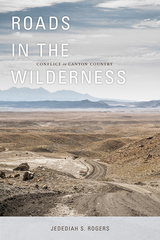 Roads in the Wilderness: Conflict in Canyon Country
Jedediah S. Rogers
University of Utah Press, 2013
Winner of the Wallace Stegner Prize in American Environmental or Western History
The canyon country of southern Utah and northern Arizona—a celebrated desert of rock and sand punctuated by gorges and mesas—is a region hotly contested among vying and disparate interests, from industrial developers to wilderness preservation advocates. Roads are central to the conflicts raging in an area perceived as one of the last large roadless places in the continental United States. The canyon country in fact contains an extensive network of dirt trails and roads, many originally constructed under the authority of a one-sentence statute in an 1866 mining law, later known as R.S. 2477. While well-groomed and paved roads came to signify the industrialization of the modern age, twentiethcentury conservationists have regarded roads as intrusive human imprints on the nation’s wild lands. Roads connect rural communities, spur economic growth, and in some cases blend harmoniously into the landscape, but they also fracture and divide, disturb wildlife and habitat, facilitate industrial development, and spoil wilderness.
Rogers reflects on the meaning of roads amid environmental conflicts that continue to grip the canyon country. Transporting readers from road controversies like the infamous Burr Trail battle to the contentious web of roads in Grand Staircase–Escalante National Monument to off-roading in Arch Canyon, Rogers demonstrates how the conflicts are deeply rooted in history and culture. The first permanent Anglo-American settlers in the region were Mormon pioneers and current views about land and resource use in southern Utah often derive from stories about how those pioneer ancestors defied wilderness to found their communities in the desert. Roads in the Wilderness will be of interest to environmentalists, historians, and those who live in the American West, challenging readers to think about the canyon country and the stories embedded in the land.
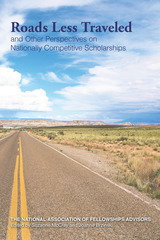 Roads Less Traveled and Other Perspectives on Nationally Competitive Scholarships
Suzanne McCray
University of Arkansas Press, 2017 Applying for nationally competitive scholarships can be a daunting process for students. Thousands apply each year for scholarships with familiar names like the Rhodes, Marshall, Gates Cambridge, Schwarzman, Fulbright, Truman, Goldwater, Udall, and Madison, or for one of many STEM opportunities like National Science Foundation Graduate Research Fellowships or National Defense Science and Engineering Fellowship.
For many, the applications present an unfamiliar territory, so students seek out informed advisors who can help them navigate the terrain. This volume of essays is a great way for anyone advising students through an application to become an expert. Roads Less Traveled and Other Perspectives on Nationally Competitive Scholarships provides critical information from scholarship foundations about the best ways to guide students—from considering a career path, to completing the application, to preparing for an interview. Experienced advisors also share helpful tips on practical topics like writing letters of endorsement or assisting those who want to study abroad, and they provide programmatic advice on how to broaden the pool of applicants, address those with financial needs, and make all who apply feel the process has value beyond winning. Roads Less Traveled and Other Perspectives on Nationally Competitive Scholarships is a must for anyone advising students on scholarships.
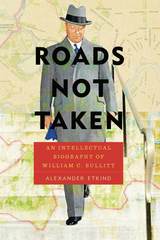 Roads Not Taken: An Intellectual Biography of William C. Bullitt
Alexander Etkind
University of Pittsburgh Press, 2017 A journalist, diplomat, and writer, William Christian Bullitt (1891–1967) negotiated with Lenin and Stalin, Churchill and de Gaulle, Chiang Kai-shek and Goering. He took part in the talks that ended World War I and those that failed to prevent World War II. While his former disciples led American diplomacy into the Cold War, Bullitt became an early enthusiast of the European Union. From his early (1919) proposal of disassembling the former Russian Empire into dozens of independent states, to his much later (1944) advice to land the American troops in the Balkans rather than in Normandy, Bullitt developed a dissenting vision of the major events of his era. A connoisseur of American politics, Russian history, Viennese psychoanalysis, and French wine, Bullitt was also the author of two novels and a number of plays. A friend of Sigmund Freud, Bullitt coauthored with him a sensational biography of President Wilson. A friend of Bullitt, Mikhail Bulgakov depicted him as the devil figure in The Master and Margarita. Taking seriously Bullitt’s projects and foresights, this book portrays him as an original thinker and elucidates his role as a political actor. His roads were not taken, but the world would have been different if Bullitt’s warnings had been heeded. His experience suggests powerful though lost alternatives to the catastrophic history of the twentieth century.
Based on Bullitt’s unpublished papers and diplomatic documents from the Russian archives, this new biography presents Bullitt as a truly cosmopolitan American, one of the first politicians of the global era. It is human ideas and choices, Bullitt’s projects and failures among them, that have brought the world to its current state.
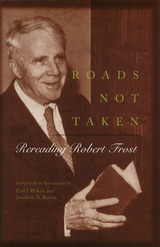 Roads Not Taken: Rereading Robert Frost
Edited & Intro by Earl J. Wilcox & Jonathan N. Barron
University of Missouri Press, 2000
In Roads Not Taken, Earl J. Wilcox and Jonathan N. Barron bring a new freshness and depth to the study of one of America's greatest poets. While some critics discounted Frost as a poet without technical skill, rhetorical complexity, or intellectual depth, over the past decade scholars have begun to view Robert Frost's work from many new perspectives. Critical hermeneutics, culture studies, feminism, postmodernism, and textual editing all have had their impact on readings of the poet's life and work. This collection of essays is the first to account for the variety of these new perceptions.
Appealing to a wide literary community, and in keeping with Frost's own poetic goals, these twelve essays fall into four distinct categories: gender, biography and cultural studies, the intertext, and poetics and theory.
All the contributors, many of whom have written books on Frost, are widely recognized scholars. Their diverse viewpoints and collective expertise make this volume of essays the most significant contribution to Frost criticism to be published in over twenty years.
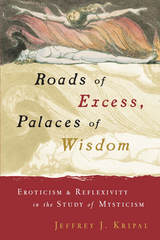 Roads of Excess, Palaces of Wisdom: Eroticism and Reflexivity in the Study of Mysticism
Jeffrey J. Kripal
University of Chicago Press, 2001 William Blake once wrote that "The road of excess leads to the palace of wisdom." Inspired by these poetic terms, Jeffrey J. Kripal reveals how the works of scholars of mysticism are often rooted in their own mystical experiences, "roads of excess," which can both lead to important insights into these scholars' works and point us to our own "palaces of wisdom."
In his new book, Kripal addresses the twentieth-century study of mysticism as a kind of mystical tradition in its own right, with its own unique histories, discourses, sociological dynamics, and rhetorics of secrecy. Fluidly combining autobiography and biography with scholarly exploration, Kripal takes us on a tour of comparative mystical thought by examining the lives and works of five major historians of mysticism—Evelyn Underhill, Louis Massignon, R. C. Zaehner, Agehananda Bharati, and Elliot Wolfson—as well as relating his own mystical experiences. The result, Kripal finds, is seven "palaces of wisdom": the religious power of excess, the necessity of distance in the study of mysticism, the relationship between the mystical and art, the dilemmas of male subjectivity and modern heterosexuality, a call for ethical criticism, the paradox of the insider-outsider problem in the study of religion, and the magical power of texts and their interpretation.
An original and penetrating analysis of modern scholarship and scholars of mysticism, Roads of Excess, Palaces of Wisdom is also a persuasive demonstration of the way this scholarly activity is itself a mystical phenomenon.
Roads of Home
Beck, Henry
Rutgers University Press, 1983 "None of this is orderly, store-bought legend or folklore. This is the way people talk, sought out and recorded by one who loves both the people and the talk."--The New York Times
Long regarded as folklife classics, Henry Charlton Beck's books are vivid recreations of the back roads, small towns, and legends that give New Jersey its special character. Father Henry Charlton Beck, who lived in New Jersey nearly all his life, was the author of numerous books on New Jersey folklife, state editor of the Camden Courier-Post, and writer for the Newark Star-Ledger. He is considered New Jersey's first folklorist and his painstaking work has left us with a rich collection of tales.
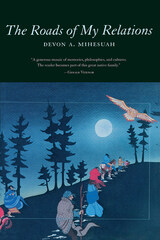 The Roads of My Relations
Devon A. Mihesuah
University of Arizona Press, 2001 "I've traveled a lot of roads, but never alone. My relations are with me," says Billie McKenney, one of the matriarchs of the complex family of Choctaws searching for peace as the white world rapidly encroaches on their tribal land, politics, and values. In her first collection of stories, Native American writer Devon A. Mihesuah chronicles the lives of several generations of a close-knit Choctaw family as they are forced from their traditional homeland in nineteenth-century Mississippi and endure unspeakable sorrows during their journey before settling in southeastern Oklahoma. Blending family lore, stark realism, and vivid imagination, The Roads of My Relations relays a strong sense of Choctaw culture and world view in absorbing tales of history and legend. Unfolding through the voices and actions of family members, confused half-bloods, and unlikely heroes—not all of them living or even human—the stories tell of the horrors of forced removal, the turbulence of post Civil War Indian Territory, the terrifying violence suffered at the hands of immortal Crow witches, and the family's ultimate survival against forces of evil. Time-traveling ghosts, mysterious medicine men, and eerie shape-shifters share the pages with proud matriarchs, mischievous schoolgirls, and loving siblings. Together, these interwoven stories express the strength and persistence of a tribe whose identity and pride have survived the disruptions of colonialism. With The Roads of My Relations, Devon A. Mihesuah has created a universal and timeless exploration of heritage, spirituality, and the importance of preserving and passing on tradition.
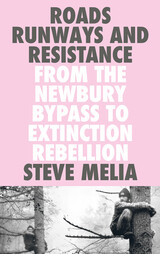 Roads, Runways and Resistance: From the Newbury Bypass to Extinction Rebellion
Steve Melia
Pluto Press, 2021 From the anti-roads protests of the 1990s to HS2 and Extinction Rebellion, conflict and protest have shaped the politics of transport. In 1989, Margaret Thatcher's government announced 'the biggest road-building programme since the Romans.' This is the inside story of the thirty tumultuous years that have followed. Roads, Runways and Resistance draws on over 50 interviews with government ministers, advisors and protestors - many of whom, including 'Swampy', speak here for the first time about the events they describe. It is a story of transport ministers undermined by their own Prime Ministers, protestors attacked or quietly supported by the police, and smartly-dressed protestors who found a way onto the roof of the Houses of Parliament. Today, as a new wave of road building and airport expansion threatens to bust Britain's carbon budgets, climate change protestors find themselves on a collision course with the government. Melia asks, what difference did the protests of the past make? And what impacts might today's protest movements have on the transport of the future?
 Roads to Dystopia: Sociological Essays on the Postmodern Condition
Stanford Lyman
University of Arkansas Press, 2001 If the postmodern condition is a dystopia characterized by alienation and despair, argues distinguished sociologist Stanford Lyman, postmodern epistemologies compound the problem by denigrating Enlightenment philosophies that still offer agency and hope to those who struggle to be free. In this, his sixth volume in the Studies in American Sociology series, Lyman examines this contradiction as it has shaped American discourses on race and community, asking why Gunnar Myrdal's "American Dilemma" is still unresolved; how Chinese workers have fared in the labor movement and in labor history; what searches for "the lost tribes of Israel" have meant socially and historically; how cinema has offered metaphors for social action but presented failed utopias on screen; and how we have not yet established a basic definition of "the good life." In each of these instances, Lyman seeks new routes in the quest for justice.
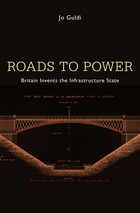 Roads to Power: Britain Invents the Infrastructure State
Jo Guldi
Harvard University Press, 2012 Roads to Power tells the story of how Britain built the first nation connected by infrastructure, how a libertarian revolution destroyed a national economy, and how technology caused strangers to stop speaking.
In early eighteenth-century Britain, nothing but dirt track ran between most towns. By 1848 the primitive roads were transformed into a network of highways connecting every village and island in the nation—and also dividing them in unforeseen ways. The highway network led to contests for control over everything from road management to market access. Peripheries like the Highlands demanded that centralized government pay for roads they could not afford, while English counties wanted to be spared the cost of underwriting roads to Scotland. The new network also transformed social relationships. Although travelers moved along the same routes, they occupied increasingly isolated spheres. The roads were the product of a new form of government, the infrastructure state, marked by the unprecedented control bureaucrats wielded over decisions relating to everyday life.
Does information really work to unite strangers? Do markets unite nations and peoples in common interests? There are lessons here for all who would end poverty or design their markets around the principle of participation. Guldi draws direct connections between traditional infrastructure and the contemporary collapse of the American Rust Belt, the decline of American infrastructure, the digital divide, and net neutrality. In the modern world, infrastructure is our principal tool for forging new communities, but it cannot outlast the control of governance by visionaries.
Roads to Reason: Transportation Administration and Rationality in Colombia
Richard E. Hartwig
University of Pittsburgh Press, 1983 Hartwig views the Columbian Ministry of Public Works, applying a theoretical model of rationality and responsibility to view how policy failures were caused by faulty definitions of problems and mistaken approaches in building Andean Highways from 1922-1974. This book will interest those involved in policy administration, organization theory, and policy planning in both developed and developing countries.
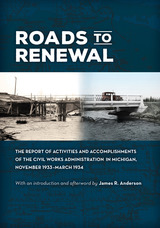 Roads to Renewal: The Report of Activities and Accomplishments of the Civil Works Administration in Michigan, November 1933–March 1934
James R. Anderson
Michigan State University Press, 2020 This publication makes available to historians and general readers a little-known document mapping the achievement of a crucial initiative in the plans for recovery from the harshest blows of the Great Depression, in one of America’s hardest-hit states. It presents a historically unique case history of the Federal Civil Works Administration, established by Franklin D. Roosevelt’s New Deal. The CWA addressed the issues of unemployment and destitution brought on by the Depression, specifically in Michigan. With a contextualizing introduction and afterword by historian James R. Anderson, the republication of this report—with its wealth of data and statistics, and its compelling information about the extent of the crisis and of the government’s initiatives—brings to light fascinating aspects of how critical (and impactful) such interventions were in the context of unprecedented economic challenges.
Roads Were Not Built for Cars: How cyclists were the first to push for good roads & became the pioneers of motoring
Carlton Reid
Island Press, 2015 In Roads Were Not Built for Cars, Carlton Reid reveals the pivotal—and largely unrecognized—role that bicyclists played in the development of modern roadways. Reid introduces readers to cycling personalities, such as Henry Ford, and the cycling advocacy groups that influenced early road improvements, literally paving the way for the motor car. When the bicycle morphed from the vehicle of rich transport progressives in the 1890s to the “poor man’s transport” in the 1920s, some cyclists became ardent motorists and were all too happy to forget their cycling roots. But, Reid explains, many motor pioneers continued cycling, celebrating the shared links between transport modes that are now seen as worlds apart. In this engaging and meticulously researched book, Carlton Reid encourages us all to celebrate those links once again.
Roads Were Not Built for Cars: How cyclists were the first to push for good roads & became the pioneers of motoring
Carlton Reid
Island Press, 2015 In Roads Were Not Built for Cars, Carlton Reid reveals the pivotal—and largely unrecognized—role that bicyclists played in the development of modern roadways. Reid introduces readers to cycling personalities, such as Henry Ford, and the cycling advocacy groups that influenced early road improvements, literally paving the way for the motor car. When the bicycle morphed from the vehicle of rich transport progressives in the 1890s to the “poor man’s transport” in the 1920s, some cyclists became ardent motorists and were all too happy to forget their cycling roots. But, Reid explains, many motor pioneers continued cycling, celebrating the shared links between transport modes that are now seen as worlds apart. In this engaging and meticulously researched book, Carlton Reid encourages us all to celebrate those links once again.
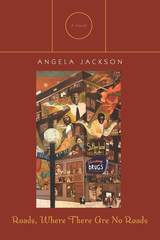 Roads, Where There Are No Roads: A Novel
Angela Jackson
Northwestern University Press, 2017 Winner, 2018 John Gardner Fiction prize
In this highly anticipated sequel to her acclaimed first novel, Where I Must Go, Angela Jackson continues the remarkable story of Magdalena Grace. As a black student at the predominantly white Eden University, Maggie found herself deeply involved in conflict. Now, out in the wider world, she and her beloved Treemont Stone evolve into agents of change as they become immersed in the historical events unfolding around them—the movements advocating for civil rights, black consciousness, black feminism, the rights of the poor, and an end to the war in Vietnam. Rendered in prose so lyrical and luminous as to suggest a dream, Roads, Where There Are No Roads is a love story in the greatest sense, celebrating love between a man and a woman, between family members, and among the members of a community whose pride pushes them to rise up and resist. This gorgeously written novel will resonate with readers today as incredibly relevant, uplifting hearts and causing eyes to water with sorrow and delight.
A Roadside Guide to the Geology of Great Smoky Mountains National Park
Harry L. Moore
University of Tennessee Press, 1988 Guiding the reader on five popular driving tours and five key hiking trails, this nontechnical guidebook indicates not-to-be-missed points of interest and describes the geological evolution associated with them. Tour maps are complemented by annotated road log commentaries and copious drawings and photographs to aid in identifying geological phenomena even when these are obscured by the mountains' lush vegetation. A helpful introduction, focusing on the geologic history of the Smokies, illuminates basic terms and concepts, while a glossary, list of suggested readings, and detailed index further enhance the book's utility. Unique in providing a crisp, comprehensive summary of the Smoky Mountains' geology, A Roadside Guide serves as a basic planning guide for scenic road trips and hiking trips in the Smokies.
 Roadside Use of Native Plants
Edited by Bonnie L. Harper-Lore and Maggie Wilson
Island Press, 2000 Originally published by the U.S. Department of Transportation's Federal Highway Administration (FHWA), Office of Natural Environment to promote the planting and care of native plants along highway rights-of-way, this unique handbook provides managers of roadsides and adjacent lands with the information and background they need to make site-specific decisions about what kinds of native plants to use, and addresses basic techniques and misconceptions about using native plants. It brings together in a single volume a vast array of detailed information that has, until now, been scattered and difficult to find.The book opens with eighteen short essays on principles of ecological restoration and management from leading experts in the field including Reed F. Noss, J. Baird Callicott, Peggy Olwell, and Evelyn Howell. Following that is the heart of the book, more than 500 pages of comprehensive state-by-state listings that offer: a color map for each state with natural vegetations zones clearly marked comprehensive lists of native plants, broken down by type of plant (grasses, forbs, trees, etc.) and including both scientific and common names, with each list having been verified for completeness and accuracy by the state's natural heritage program contact names, addresses, and phone numbers for obtaining current information on invasive and noxious species to be avoided resources for more information, including contact names and addresses for local experts in each state The appendix adds definitions, bibliography, and policy citations to clarify any debates about the purpose and the direction of the use of native plants on roadsides.Roadside Use of Native Plants is a one-of-a-kind reference whose utility extends far beyond the roadside, offering a toolbox for a new aesthetic that can be applied to all kinds of public and private land. It can help lead the way to a cost-effective ecological approach to managing human-designed landscapes, and is an essential book for anyone interested in establishing or restoring native vegetation.
 Roadways for People: Rethinking Transportation Planning and Engineering
Lynn Peterson with Elizabeth Doerr, Foreword by Janette Sadik-Khan
Island Press, 2022 “Seventy years of a car-only approach—not car-centric, it’s car-only—is actually not just non-driver hostile, it’s driver hostile. No one benefits.” —Beth Osborne, Director, Transportation for America
The car-only approach in transportation planning and engineering has led to the construction of roadways that have torn apart and devalued communities, especially Black and Brown communities. Forging a new path to repair this damage requires a community solutions-based approach to planning, designing, and building our roadways. When Lynn Peterson began working as a transportation engineer, she was taught to evaluate roadway projects based only on metrics related to driver safety, allowable speed for the highest number of cars, project schedule, and budget. Involving the community and collaborating with peers were never part of the discussion. Today, Peterson is a recognized leader in transportation planning and engineering, known for her approach that is rooted in racial equity, guided by a process of community engagement, and includes collaboration with other professionals.
In Roadways for People, Lynn Peterson draws from her personal experience and interviews with leaders in the field to showcase new possibilities within transportation engineering and planning. She incorporated a community-solutions based approach in her work at Metro, TriMet, and while running the Washington State Department of Transportation, where she played an instrumental role in the largest transportation bill in that state’s history. The community solutions-based approach moves away from the narrow standards of traditional transportation design and focuses instead on a process that involves consistent feedback, learning loops, and meaningful and regular community engagement. This approach seeks to address the transportation needs of the most historically marginalized members of the community.
Roadways for People is written to empower professionals and policymakers to create transportation solutions that serve people rather than cars. Examples across the U.S.—from Portland, Oregon to Baltimore, Maryland—show what is possible with a community-centered approach. As traditional highway expansions are put on pause around the country, professionals and policymakers have an opportunity to move forward with a better approach. Peterson shows them how.
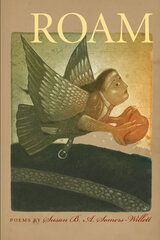 Roam
Susan B. A. Somers-Willet
Southern Illinois University Press, 2006 Roam explores the loss of a parent to cancer and the resulting uprootedness that loss can create. In searching for a sense of home and belonging, this collection of free verse looks both inward and outward, to landscapes rural and urban, and speaks in haunting and musical lyrics. Unexpected voices emerge from history and myth—those of Joan of Arc, Ophelia, Circe, Daedalus and Icarus, and Achilles’ mother, Thetis—and mingle with the author’s own voice. From the naming of the first woman, Eve, to the naming of the first European child born in the Americas, Virginia Dare, these characters seek full houses and, instead, discover empty ones. In a voice that is southern, feminist, and unflinching in its assessments of the self, Susan B. A. Somers-Willett treats personal loss without ceremony or nostalgia. The poems of Roam look homeward while acknowledging that one can never return to such elusive comforts. Her lyrics reveal the dangers and delights of an ever-changing, ever-traveling sense of self.
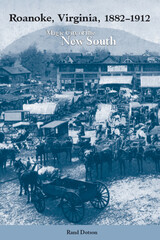 Roanoke, Virginia, 1882–1912: Magic City of the New South
Rand Dotson
University of Tennessee Press, 2008
"This is a thoughtful, deeply researched, and particularly well-written book. Dotson maintains control over a significant body of research, never letting himself get overwhelmed by the details. He strikes a fine balance between discussions of social history, economic change, and local politics." —Louis Kyriakoudes, author of The Social Origins of the Urban South: Race, Gender, and Migration in Nashville and Middle Tennessee, 1890–1930
Roanoke, Virginia, 1882–1917, tells the story of a city that for a brief period was widely hailed as a regional model for industrialization as well as the ultimate success symbol for the rehabilitation of the former Confederacy. In a region where modernization seemed to move at a glacial pace, those looking for signs of what they were triumphantly calling the “New South” pointed to Roanoke.
No southern city grew faster than Roanoke did during the 1880s. A hardscrabble Appalachian tobacco depot originally known by the uninspiring name of Big Lick, it became a veritable boomtown by the end of the decade as a steady stream of investment and skilled manpower flowed in from north of the Mason-Dixon line. The first scholarly treatment of Roanoke's early history, the book explains how native businessmen convinced a northern investment company to make their small town a major railroad hub. It then describes how that venture initially paid off, as the influx of thousands of people from the North and the surrounding Virginia countryside helped make Roanoke - presumptuously christened the “Magic City” by New South proponents - the state's third-largest city by the turn of the century.
Rand Dotson recounts what life was like for Roanoke's wealthy elites, working poor, and African American inhabitants. He also explores the social conflicts that ultimately erupted as a result of well-intended “reforms” initiated by city leaders. Dotson illustrates how residents mediated the catastrophic Depression of 1893 and that year's infamous Roanoke Riot, which exposed the façade masking the city's racial tensions, inadequate physical infrastructure, and provincial mentality of the local populace. Dotson then details the subsequent attempts of business boosters and progressive reformers to attract the additional investments needed to put their city back on track. Ultimately, Dotson explains, Roanoke's early struggles stemmed from its business leaders' unwavering belief that economic development would serve as the panacea for all of the town's problems.
This insightful social history of Roanoke is a significant work, sure to attract readers with an interest in urbanization, race relations, and progressive reform.
Rand Dotson is Senior Acquisitions Editor at Louisiana State University Press and an instructor in the LSU History Department. His articles have appeared in The Virginia Magazine of History and Biography, The Smithfield Review, and The Dictionary of Virginia Biography.
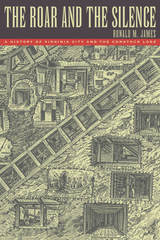 The Roar and the Silence: A History of Virginia City and the Comstock Lode
Ronald M. James
University of Nevada Press, 1998 Nevada’s Comstock Mining District has been the focus of legend since it first burst into international prominence in the late 1850s, and its principal settlement, Virginia City, endures in the popular mind as the West’s quintessential mining camp. But the authentic history of the Comstock is far more complex and interesting than its colorful image. Contrary to legend, Virginia City spent only its first few years as a ramshackle mining camp. The mining boom quickly turned it into a thriving urban center, at its peak one of the largest cities west of the Mississippi, replete with most of the amenities of any large city of its time. The lure of the area’s fabulous wealth attracted a remarkably heterogenous population from around the world and offered employment to dozens of trades and thousands of people, both men and women, representing every one of the region’s diverse ethnic groups. Ronald James’s brilliant account of the Comstock’s long and eventful history—the first comprehensive study of the subject in over a century—examines every aspect of the region and employs information gleaned from hundreds of written sources, interviews, archeological research, computer analysis, folklore, gender studies, physical geography, and architectural and art history, as well as over fifty rare photographs, many of them previously unpublished.
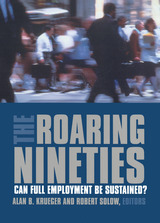 The Roaring Nineties: Can Full Employment Be Sustained?
Alan B. Krueger
Russell Sage Foundation, 2001 The positive social benefits of low unemployment are many—it helps to reduce poverty and crime and fosters more stable families and communities. Yet conventional wisdom—born of the stagflation of the 1970s—holds that sustained low unemployment rates run the risk of triggering inflation. The last five years of the 1990s—in which unemployment plummeted and inflation remained low—called this conventional wisdom into question. The Roaring Nineties provides a thorough review of the exceptional economic performance of the late 1990s and asks whether it was due to a lucky combination of economic circumstances or whether the new economy has somehow wrought a lasting change in the inflation-safe rate of unemployment. Led by distinguished economists Alan Krueger and Robert Solow, a roster of twenty-six respected economic experts analyzes the micro- and macroeconomic factors that led to the unexpected coupling of low unemployment and low inflation. The more macroeconomically oriented chapters clearly point to a reduction in the inflation-safe rate of unemployment. Laurence Ball and Robert Moffitt see the slow adjustment of workers' wage aspirations in the wake of rising productivity as a key factor in keeping inflation at bay. And Alan Blinder and Janet Yellen credit sound monetary policy by the Federal Reserve Board with making the best of fortunate circumstances, such as lower energy costs, a strong dollar, and a booming stock market. Other chapters in The Roaring Nineties examine how the interaction between macroeconomic and labor market conditions helped sustain high employment growth and low inflation. Giuseppe Bertola, Francine Blau, and Lawrence M. Kahn demonstrate how greater flexibility in the U.S. labor market generated more jobs in this country than in Europe, but at the expense of greater earnings inequality. David Ellwood examines the burgeoning shortage of skilled workers, and suggests policies—such as tax credits for businesses that provide on-the-job-training—to address the problem. And James Hines, Hilary Hoynes, and Alan Krueger elaborate the benefits of sustained low unemployment, including budget surpluses that can finance public infrastructure and social welfare benefits—a perspective often lost in the concern over higher inflation rates. While none of these analyses promise that the good times of the 1990s will last forever, The Roaring Nineties provides a unique analysis of recent economic history, demonstrating how the nation capitalized on a lucky confluence of economic factors, helping to create the longest peacetime boom in American history. Copublished with The Century Foundation
 Roast Beef, Medium: The Business Adventures of Emma McChesney
Edna Ferber
University of Illinois Press, 1913
Edna Ferber, Pulitzer Prize-winning author of Show Boat and Giant, achieved her first great success with a series of stories she published in American Magazine between 1911 and 1913. The stories featured Emma McChesney: smart, savvy, stylish, divorced mother, and Midwest traveling sales representative for T. A. Buck's Featherloom skirts and petticoats. With one hand on her sample case and the other fending off advances from salesmen, hotel clerks, and other predators, Emma holds on tightly to her reputation: honest, hardworking, and able to outsell the slickest salesman.
Like her compact bag of traveling necessities, Emma has her life boiled down to essentials: her work and her seventeen-year-old son, Jock. Her experience has taught her that it's best to stick to roast beef, medium--avoiding both physical and moral indigestion--rather than experiment with fancy sauces and exotic dishes. Yet she never shies away from a challenge, and her sharp instincts and common sense serve her well in dealing with the likes of Ed Meyer, a smooth-talking, piano-playing salesman; Blanche LeHay, prima donna of the Sam Levin Crackerjack Belles; and T. A. Buck Jr., the wet-behind-the-ears son of the founder of Featherloom.
Roast Beef, Medium is the first of three volumes chronicling the travels and trials of Emma McChesney. The illustrations by James Montgomery Flagg, one of the most highly regarded book illustrators of the period, enhance both the humor and the vivid characterization in this wise and high-spirited tale.
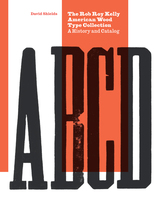 The Rob Roy Kelly American Wood Type Collection: A History and Catalog
David Shields
University of Texas Press, 2022 2023 50 Books | 50 Covers Award, The American Institute of Graphic Arts (AIGA)
2024 Honorable Mention, Design Awards, Graphis
2024 Finalist, Typography Competition, Communication Arts Magazine
A beautifully illustrated exploration of the Rob Roy Kelly American Wood Type Collection.
The Rob Roy Kelly Wood Type Collection is a comprehensive collection of wood type manufactured and used for printing in nineteenth-century America. Comprising nearly 150 typefaces of various sizes and styles, it was amassed by noted design educator and historian Rob Roy Kelly starting in 1957 and is now held by the University of Texas. Although Kelly himself published a 1969 book on wood type and nineteenth-century typographic history, there has been little written about the creation of the wood type forms, the collection, or Kelly. In this book, David Shields rigorously updates and expands upon Kelly’s historical information about the types, clarifying the collection’s exact composition and providing a better understanding of the stylistic development of wood type forms during the nineteenth century. Using rich materials from the period, Shields provides a stunning visual context that complements the textual history of each typeface. He also highlights the non-typographic material in the collection—such as borders, rules, ornaments, and image cuts—that have not been previously examined. Featuring over 300 color illustrations, this written history and catalog is bound to spark renewed interest in the collection and its broader typographic period.
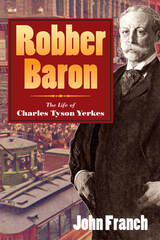 Robber Baron: The Life of Charles Tyson Yerkes
John Franch
University of Illinois Press, 2006 Robber Baron is the first biography of the streetcar magnate Charles Tyson Yerkes (1837-1905), who stands alongside J.P. Morgan and Andrew Carnegie as one of the most colorful and controversial public figures in Gilded Age America. John Franch draws upon every available source to tell the story of the man who was the mastermind behind Chicago’s Loop Elevated and the London Underground, the namesake of the University of Chicago’s observatory, and the inspiration for Frank Cowperwood, the ruthless protagonist of Theodore Dreiser's Trilogy of Desire: The Financier, The Titan, and The Stoic. Despite various philanthropic efforts, Yerkes and his unscrupulous tactics were despised by the press and public, and he left Chicago a bitter man. While Yerkes’s enduring public works testify to his success and desire to leave a lasting impression on his world, Robber Baron also uncovers the cost of this boundless ambition.
Robbers Roost Recollections
Pearl Baker
Utah State University Press, 1991 A enchanting memoir of a ranch family's life in southern Utah in the early 1900s—at Robbers Roost, the infamous ranch where Butch Cassidy and his gang would hide out while eluding the law.
 Robert Altman's Nashville: An Archival Exploration
Justin Wyatt
University of Michigan Press, 2026 Nashville (1975) is a beguiling work of art. It illustrates director Robert Altman’s ability to blend small, quotidian moments; large scenes of spectacle; and insights into American life that are both disturbing and sharply observed. As a snapshot of American society firmly rooted in a specific time and place, the film presents a compelling landscape of American dreams, failures, and lies. One of the most influential works in New Hollywood, Nashville was added to the National Film Registry in 1992 and has been on the BFI 100 Greatest Films list voted by critics and directors.
This book explores Robert Altman’s classic film from a variety of critical perspectives inspired by the archival materials from the Altman archive in the Screen Arts Mavericks and Makers collection at the University of Michigan Special Collections Research Center. Each chapter is centered around materials on Nashville from the Altman archive: stills, contact sheets, advertising artwork (used and unused), Jean Pagliuso photo shoots, Joan Tewkesbury script drafts, contracts, reviews, internal accounting memos, and the Altman scrapbooks. (Each of his films has a scrapbook of reviews, interviews, and notes from fans.) Using these sources as a starting point, the book seeks to explain the relevance and importance of Nashville after more than half a century.
 Robert Altman’s Subliminal Reality
Robert T. Self
University of Minnesota Press, 2002 The most complete and compelling analysis available of Altman’s films With his complex and unconventional films, Robert Altman often draws an impassioned response from critics but bafflement and indifference from the general public. Some audiences have dismissed his movies as insignificant, unsatisfying, and unreadable. Ironically, Altman might agree: he makes films in order to challenge filmgoers’s expectations of straightforward narratives and easily understood endings. In Robert Altman’s Subliminal Reality, Robert T. Self sheds light on Altman’s work and provides the most comprehensive analysis of his films to date. With close readings of classics like MASH, McCabe and Mrs. Miller, and Nashville, as well as more recent films like The Player, Short Cuts, and Cookie’s Fortune, Self asserts the value of Altman’s work not only to film theory and the entertainment industry but to American culture itself. In his analysis, Self identifies Altman’s films particularly as they address issues of form, identity, and industry. He explains how Altman critiques moviemaking forms by using an open, fragmented mode of storytelling and by turning conventional Hollywood genres inside out. He examines Altman’s characterization of social and individual identity as fragile and fragmentary and his depiction of antiheroic characters debilitated by their socially constructed gender roles. Finally, Self shows how Altman challenges the entertainment industry itself, questioning its methods and motives and critiquing its role in our cultural alienation. Self frames his study of Altman’s work with a discussion of the director’s efforts to create a "subliminal reality" in his narratives—to touch audiences on an unconscious level and to recognize the unspoken, and unspeakable, dimensions in human interactions. According to Self, this striving for "subliminal reality" makes Altman’s films not only exemplary of the potential of art cinema narration but instrumental in keeping such narrative alive.
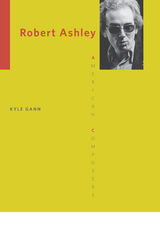 Robert Ashley
Kyle Gann
University of Illinois Press, 2012 This book explores the life and works of the pioneering opera composer Robert Ashley, one of the leading American composers of the post-Cage generation. Ashley's innovations began in the 1960s when he, along with Alvin Lucier, Gordon Mumma, and David Behrman, formed the Sonic Arts Union, a group that turned conceptualism toward electronics. He was also instrumental in the influential ONCE Group, a theatrical ensemble that toured extensively in the 1960s.During his tenure as its director, the ONCE Festival in Ann Arbor presented most of the decade's pioneers of the performing arts. Particularly known for his development of television operas beginning with Perfect Lives, Ashley spun a long series of similar text/music works, sometimes termed "performance novels." These massive pieces have been compared with Wagner's Ring Cycle for the vastness of their vision, though the materials are completely different, often incorporating noise backgrounds, vernacular music, and highly structured, even serialized, musical structures. Drawing on extensive research into Ashley's early years in Ann Arbor and interviews with Ashley and his collaborators, Kyle Gann chronicles the life and work of this musical innovator and provides an overview of the avant-garde milieu of the 1960s and 1970s to which he was so central. Gann examines all nine of Ashley's major operas to date in detail, along with many minor works, revealing the fanatical structures that underlie Ashley's music as well as private references hidden in his opera librettos.
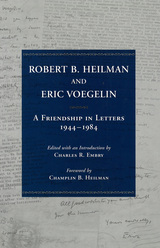 Robert B. Heilman and Eric Voegelin: A Friendship in Letters, 1944-1984
Edited & Intro by Charles R. Embry & Foreword by Champlin B. Heilman
University of Missouri Press, 2004 This collection of letters exchanged between Robert B. Heilman and Eric Voegelin records a friendship that lasted more than forty years. These scholars, both giants in their own fields, shared news of family and events, academic gossip, personal and professional vicissitudes, academic successes, and, most important, ideas.
Heilman and Voegelin first became acquainted around 1941, when Voegelin delivered a guest lecture for the political science department at Louisiana State University. At that time, Heilman was teaching in the English department at LSU along with Robert Penn Warren and Cleanth Brooks. What began as simple exchanges after Voegelin moved to LSU soon grew into full-fledged correspondence—beginning with an eight-page letter by Voegelin commenting on Heilman’s manuscripton Shakespeare’s King Lear. Their correspondence lasted until four months before Voegelin’s death in January 1985.
These letters represent Voegelin’s most prolonged correspondence with a native-born American scholar and provide readers with an insight into Voegelin as a literary critic. While Voegelin’s analysis of Henry James’s The Turn of the Screw is well known, these letters reveal the context from which the analysis grew. Additional comments by Voegelin on Mann, Eliot, Shakespeare, Homer, Proust, Flaubert, and other significant writers are uncovered throughout his exchanges with Heilman.
Readers will appreciate not only Heilman’s elegant style but also his efforts to clarify for himself the meaning and implications of Voegelin’s developing philosophy. Heilman’s questions are often ones that readers of Voegelin continue to ask today. In his queries, as well as in the exposition of his theories of tragedy and melodrama, human nature, and expressionist drama, Heilman displays a canny perception of the philosophical issues and problems of modernity that sustained their interdisciplinary discussion. The letters exchanged by Robert B. Heilman and Eric Voegelin demonstrate the warm friendship these two scholars shared and illuminate many of the turns and transformations in their work as they developed as thinkers.
 The Robert Bellah Reader
Robert N. Bellah
Duke University Press, 2006 Perhaps best known for his coauthored bestselling books Habits of the Heart and The Good Society, Robert N. Bellah is a truly visionary leader in the social study of religion. For more than four decades, he has examined the role of religion in modern and premodern societies, attempting to discern how religious meaning is formed and how it shapes ethical and political practices. The Robert Bellah Reader brings together twenty-eight of Bellah’s seminal essays. While the essays span a period of more than forty years, nearly half of them were written in the past decade, many in the past few years. The Reader is organized around four central concerns. It seeks to place modernity in theoretical and historical perspective, drawing from major figures in social science, historical and contemporary, from Aristotle and Rousseau through Durkheim and Weber to Habermas and Mary Douglas. It takes the United States to be in some respects the type-case of modernity and in others the most atypical of modern societies, analyzing its common faith in individual freedom and democratic self-government, and its persistent paradoxes of inequality, exclusion, and empire. The Reader is also concerned to test the axiomatic modern assumption that rational cognition and moral evaluation, fact and value, are absolutely divided, arguing instead that they overlap and interact much more than conventional wisdom in the university today usually admits. Finally, it criticizes modernity’s affirmation that faith and knowledge stand even more utterly at odds, arguing instead that their overlap and interaction, obvious in every premodern society, animate the modern world as well. Through such critical and constructive inquiry this Reader probes many of our deepest social and cultural quandaries, quandaries that put modernity itself, with all its immense achievements, at mortal risk. Through the practical self-understanding such inquiry spurs, Bellah shows how we may share responsibility for the world we have made and seek to heal it.
Robert Bresson: Cinematic Style as Philosophy
Robert B. Pippin
University of Chicago Press, 2026 A philosophical engagement with Bresson’s many films, attentive to more than their religiosity.
Over a forty-year career, Robert Bresson developed one of the most distinctive cinematic styles in the history of filmmaking. Criticizing conventional movies as “filmed theater,” Bresson proposed instead a way of writing with images, which he called “cinematographs.” Robert B. Pippin argues here for a way of understanding how these stylistic innovations express a range of philosophical commitments, explorations of the possible sources of meaning in late modern life, and the implications of the absence of such sources.
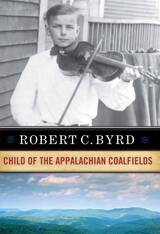 Robert C. Byrd: Child of the Appalachian Coalfields
Robert C. Byrd
West Virginia University Press, 2010 This autobiography follows United States Senator Robert C. Byrd’s experiences from his boyhood in the early 1920s to his election in 2000, which won him an unprecedented eighth term in the Senate. Along the way, Senator Byrd offers commentary on national and international events that occurred throughout his long life in public service. Senator Byrd’s journey from the hardscrabble coalfields to the marbled halls of Congress has inspired generations of people in West Virginia and throughout the nation. From reading the stories of the Founding Fathers as a young boy by the light of a kerosene lamp to the swearing of an oath for more than a half-century to guard the United States Constitution, Senator Byrd’s life is legendary. Byrd always stands by his principles, earning the affection of the people of his home state and the respect of Americans from all walks of life. With his beloved Erma ever by his side, Robert C. Byrd has never forgotten his roots, harkening back to those early lessons that he learned as a child of the Appalachian coalfields.
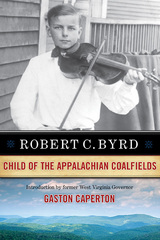 Robert C. Byrd: Child of the Appalachian Coalfields
ROBERT C. BYRD
West Virginia University Press, 2015 This autobiography follows West Virginia senator Robert C. Byrd’s experiences from his boyhood in the early 1920s to his election in 2000, which won him an unprecedented eighth term in the Senate. Within these pages, Senator Byrd offers commentary on national and international events that occurred throughout his long life in public service. His journey from the hardscrabble coalfields to the marbled halls of Congress has inspired generations of people in West Virginia and throughout the nation. From reading the stories of the Founding Fathers as a young boy by the light of a kerosene lamp to the swearing of an oath for more than a half-century to guard the US Constitution, Senator Byrd’s life is legendary. Until his death on June 28, 2010, Byrd stood by his principles, earning the affection of the people of his home state and the respect of Americans from all walks of life. With his beloved Erma ever by his side, Robert C. Byrd never forgot his roots, harkening back to those early lessons that he learned as a child of the Appalachian coalfields. This new paperback edition includes a foreword by Gaston Caperton, governor of West Virginia from 1989–1997.
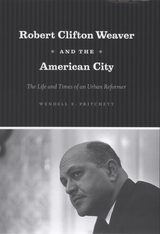 Robert Clifton Weaver and the American City: The Life and Times of an Urban Reformer
Wendell E. Pritchett
University of Chicago Press, 2008 From his role as Franklin Roosevelt’s “negro advisor” to his appointment under Lyndon Johnson as the first secretary of Housing and Urban Development, Robert Clifton Weaver was one of the most influential domestic policy makers and civil rights advocates of the twentieth century. This volume, the first biography of the first African American to hold a cabinet position in the federal government, rescues from obscurity the story of a man whose legacy continues to affect American race relations and the cities in which they largely play out.
Tracing Weaver’s career through the creation, expansion, and contraction of New Deal liberalism, Wendell E. Pritchett illuminates his instrumental role in the birth of almost every urban initiative of the period, from public housing and urban renewal to affirmative action and rent control. Beyond these policy achievements, Weaver also founded racial liberalism, a new approach to race relations that propelled him through a series of high-level positions in public and private agencies working to promote racial cooperation in American cities. But Pritchett shows that despite Weaver’s efforts to make race irrelevant, white and black Americans continued to call on him to mediate between the races—a position that grew increasingly untenable as Weaver remained caught between the white power structure to which he pledged his allegiance and the African Americans whose lives he devoted his career to improving.
 Robert de Cotte and the Perfection of Architecture in Eighteenth-Century France
Robert Neuman
University of Chicago Press, 1994 Robert de Cotte (1656/7-1735), Principal Architect to the King of France, was among the most prominent European architects of his day. In a period that witnessed the ascendancy of Paris over Rome as the international center of fashion, princes and nobles in Germany, Italy, and Spain eagerly commissioned him to design buildings in the French court style. Robert Neuman provides the first comprehensive examination of fifty or so building projects by de Cotte, which include such extant works as the Hôtel d'Estrées, Paris; Schloss Poppelsdorf, Bonn; and his universally acknowledged masterpiece, the Palais Rohan, Strasbourg.
After describing de Cotte's training and the professional context in which he worked, Neuman offers a thorough survey of de Cotte's output. For each commission, he recreates the actual design process, showing how de Cotte manipulated an accepted vocabulary of architectural forms to meet the patron's specific requirements. De Cotte's own drawings, many reproduced here for the first time, and quotations from a wide variety of contemporary writings vividly supplement the case histories. Beautifully illustrated, Neuman's much-needed book reveals de Cotte as an innovative and strikingly modern architect.
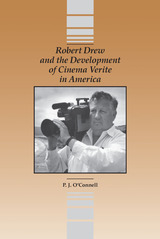 Robert Drew and the Development of Cinema Verite in America
P.J. O'Connell
Southern Illinois University Press, 1992 Author P. J. O’Connell traces Robert Drew’s influence on cinema verite through extensive interviews with Drew and with some of the founding fathers of American cinema verite filmmaking—Donn Alan Pennebaker, Gregory Shuker, and Richard Leacock. Robert Drew’s contributions to documentary film have been both technical and conceptual. Realizing that his equipment was too heavy and intrusive, Drew persuaded Time-Life Broadcasting to sponsor the development of new, lightweight, portable synchronous sound equipment that freed documentary filmmakers from the bulky, tripod-mounted, AC-powered equipment of the past. His new technology allowed him to capture intense moments as they happened, and to make viewers feel personally involved in the events he presented. While making more than twenty documentaries in the early 1960s, Drew continued to initiate innovations that were not thought possible a generation before him. P. J. O’Connell is the executive producer of public affairs at Penn State Television and an affiliate assistant professor in the School of Communication at Penn State University.
 Robert E. Sherwood: The Playwright in Peace and War
Harriet Hyman Alonso
University of Massachusetts Press, 2007 One of the nation's first film critics, an acclaimed speechwriter on his own and for President Franklin D. Roosevelt, a propagandist during World War II, and a leading producer on Broadway, Robert E. Sherwood scripted some of the most popular plays and films of his day, including Waterloo Bridge, The Best Years of Our Lives, Idiot's Delight, Abe Lincoln in Illinois, and Rebecca. His work brought him four Pulitzer Prizes and an Oscar. In his personal life, however, he was driven by a deep conviction that war was a societal evil that must be eradicated and human rights a moral responsibility that all governments should protect. At times, his belief in pacifism and his commitment to defending freedom and justice came into conflict with each other, causing frustration and emotional trauma which found their way into his writings and actions.
In this book, Harriet Hyman Alonso unravels Sherwood's inner struggle and portrays his political journey. Relying largely on his letters, diaries, plays, films, essays, and biography of Roosevelt and Harry Hopkins, she traces Sherwood's obsession with the world of politics and its effects on his life and art, from his experience as a soldier in World War I to the Cold War. She also describes his participation in the Algonquin Round Table, his friendships and working relationships with such notables as Alfred Lunt, Lynn Fontanne, Edna Ferber, Spencer Tracy, Harry Hopkins, and Franklin D. Roosevelt, his two marriages and uneasy relationship with his daughter, and his leadership role in the Broadway community.
Alonso brings together history, theater and film studies, and peace studies in this interdisciplinary political biography. In the process, she illuminates major currents in U.S. foreign policy, society, and culture from 1896 to 1955—the years of the remarkable life of Robert E. Sherwood.
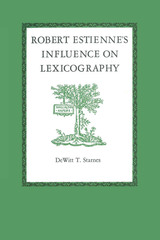 Robert Estienne's Influence on Lexicography
By DeWitt T. Starnes
University of Texas Press, 1963 Towering above printers of his time and their successors for many years afterward was the figure of Robert Estienne, the great French lexicographer of the sixteenth century, whose contribution to knowledge and its dissemination is the subject of this authoritative book. The span of Robert Estienne's life (1503–1559) encompassed the historical epochs and events which shaped his career: the Renaissance, the Reformation, and the invention of printing by movable type. His keen interest in the revival of ancient literatures and languages and his training in the art of printing pointed the road he would travel, and the climate of opinion in the Reformation determined his destiny. Robert Estienne promoted classical learning by printing the works of good authors; to spread knowledge of ancient literature he compiled dictionaries and grammars which were adopted by most of the universities of Europe. His dictionary of proper names of Biblical and classical origin, the Dictionarium historicum ac poeticum, became one of the great source books for later compilers of dictionaries and for authors. His influence on English writers was pervasive. Ben Jonson showed familiarity with his texts; Spenser and Milton sometimes set trarislations of his phraseology directly into their poetry. Perpetuation of the few errors he made is one sure proof that his dictionaries were used and copied. An exemplar of learning in the classics and scripture, he searched in ancient manuscripts to avoid repeating the numerous errors that had crept into Bible translations over hundreds of years. For his efforts he was called a heretic by docteurs de theologie in the Sorbonne, but was protected by the royal favor of Francis I of France. Between attacks of theologians on the one side and the King's protection on the other, he became a "controversial" figure and after many years of calumny and persecution finally took refuge in Geneva. Estienne established a family tradition of printing correct and beautiful books, and the printing establishments which made the name of Estienne celebrated throughout the world continued for 162 years.
Robert Fortune: A Plant Hunter in the Orient
Alistair Watt
Royal Botanic Gardens, Kew, 2016 Scottish plant collector Robert Fortune became famous among botanists for working and traveling in China and Japan from 1843 to 1861, a time when China forbade Europeans from traveling beyond the confines of a few coastal treaty ports.
This is the first full biography of Fortune, and it uses substantial un-studied materials, detailing his travels, collections, and more, and featuring the first maps ever produced that track his collecting itineraries in China. Alistair Watt, a plant hunter himself, brings Fortune to life, showing us how he traveled in disguise in China, and clearing up some misconceptions about his role as a scout for a possible tea industry in the United States. The result is a rounded portrait of an extraordinary man, his times, and his lasting contribution to horticultural knowledge.
Robert Frank's 'The Americans': The Art of Documentary Photography
Jonathan Day
Intellect Books, 2011 In the mid-1950s, Swiss-born New Yorker Robert Frank embarked on a ten-thousand-mile road trip across America, capturing thousands of photographs of all levels of a rapidly changing society. The resultant photo book, The Americans, represents a seminal moment in both photography and in America's understanding of itself. To mark the book’s fiftieth anniversary, Jonathan Day revisits this pivotal work and contributes a thoughtful and revealing critical commentary. Though the importance of The Americans has been widely acknowledged, it still retains much of its mystery. This comprehensive analysis places it thoroughly in the context of contemporary photography, literature, music, and advertising from its own period through the present.
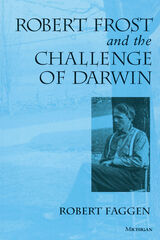 Robert Frost and the Challenge of Darwin
Robert Faggen
University of Michigan Press, 2001 Robert Frost and the Challenge of Darwin gives us a new and compelling portrait of the poet-thinker as a modern Lucretius--moved to examine the questions raised by Darwin, and willing to challenge his readers with the emerging scientific notions of what it meant to be human.
Combining both intellectual history and detailed analysis of Frost's poems, Robert Faggen shows how Frost's reading of Darwin reflected the significance of science in American culture from Emerson and Thoreau, through James and pragmatism. He provides fresh and provocative readings of many of Frost's shorter lyrics and longer pastoral narratives as they illustrate the impact of Darwinian thought on the concept of nature, with particular exploration of man's relationship to other creatures, the conditions of human equality and racial conflict, the impact of gender and sexual differences, and the survival of religion.
The book shows that Frost was neither a pessimist lamenting the uncertainties of the Darwinian worldview, nor a humanist opposing its power. Faggen draws on Frost's unpublished notebooks to reveal a complex thinker who willingly engaged with the difficult moral and epistemological implications of natural science, and showed their consonance with myths and traditions stretching back to Milton, Lucretius, and the Old Testament. Frost emerges as a thinker for whom poetry was not only artistic expression, but also a forum for the trial of ideas and their impact on humanity.
Robert Frost and the Challenge of Darwin provides a deeper understanding not only of Frost and modern poetry, but of the meaning of Darwin in the modern world, the complex interrelations of literature and science, and the history of American thought.
"A forceful, appealing study of the Frost-Darwin relation, which has gone little noted by previous scholars, and a fresh explanation of Frost's ambivalent relation to modernism, which he scorned but also influenced" --William Howarth, Princeton University
Robert Faggen is Associate Professor of Literature, Claremont McKenna College and Adjunct Associate Professor, Claremont Graduate School.
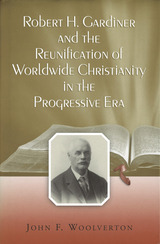 Robert H. Gardiner and the Reunification of Worldwide Christianity in the Progressive Era
John F. Woolverton
University of Missouri Press, 2005
In his time, Robert Hallowell Gardiner III (1855–1924) was the heart and soul of the Progressive Era’s movement to establish cooperation among all Christian churches. Gardiner’s legacy today is the World Council of Churches. From his home on the Kennebec River and from the Maine town that bears his family’s name, Gardiner carried on an extensive letter-writing campaign on behalf of the reunion of worldwide Christianity. John F. Woolverton incorporates Gardiner’s eleven thousand letters, as well as his published speeches and articles and family records, to present the first biography of a man who was a seminal figure in the early twentieth-century Christian ecumenical movement.
Gardiner was remarkable in that, as a layperson in the traditionally clergy-dominated, hierarchical Episcopal Church, he was able to bring along his own often reluctant denomination, as well as the Eastern and Russian Orthodox churches, major American and European Protestant bodies, and for a time the Roman Catholic Church itself. In addition, in the 1890s Gardiner was a leader in Boston’s famous Social Gospel, moving on to the Young Manhood Movement of the 1910s. He was an outspoken advocate for giving women a voice and vote in the church, as well as a leader in the major 1916 revision of Christian education in his denomination.
In his study, Woolverton analyzes Gardiner’s commitment as an internationalist to multilateral peace efforts on the threshold of World War I. He also discusses Gardiner’s relationships with well-known figures from that era: U.S. Senator George Wharton Pepper, Francis Stetson, John R. Mott, Newman Smyth, Mary Kingsbury Simkhovitch, John J. Wynne, Cardinal James Gibbons, Episcopal Bishop Charles Henry Brent, and Vida D. Scudder.
Woolverton shows how, despite the ravages of war, Gardiner was able to build a vast network of cooperating political and religious leaders. American historians of the Progressive Era, church historians, and theological students will welcome this valuable addition to the historical literature on the social gospel.
Robert Hart and China’s Early Modernization: His Journals, 1863–1866
Robert Hart, Richard J. Smith, John King Fairbank, and Katherine F. Bruner
Harvard University Press, 1991 As the Ch’ing government’s Inspector General of the Maritime Customs Service, Robert Hart was the most influential Westerner in China for half a century. These journal entries continue the sequence begun in Entering China’s Service and cover the years when Hart was setting up Customs procedures, establishing a modus operandi with the Ch’ing bureaucracy, and inspecting the treaty ports. They culminate in Hart’s return visit to Europe with the Pin-ch’un Mission and his marriage in Northern Ireland.
Richard Smith, John King Fairbank, and Katherine Bruner interleave the segments of Hart’s journals with lively narratives describing the contemporary Chinese scene and recounting Hart’s responses to the many challenges of establishing a Western-style organization within a Chinese milieu.
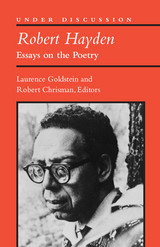 Robert Hayden: Essays on the Poetry
Laurence Goldstein and Robert Chrisman, Editors
University of Michigan Press, 2013 This collection of essays by leading critics and poets charts Robert Hayden’s growing reputation as a major writer of some of the twentieth century’s most important poems on African-American themes, including the famed “Middle Passage” and “Frederick Douglass.” The essays illuminate the themes and techniques that established Hayden as a modernist writer with affinities to T. S. Eliot, Federico Garcia Lorca, and W. B. Yeats, as well as to traditions of African-American writings that include such figures as Countee Cullen and Langston Hughes. Robert Hayden: Essays on the Poetryis the first and only book to collect significant essays on this distinguished poet. Covering sixty years of commentary, book reviews, essays, and Hayden’s own published materials, this volume is an invaluable contribution to our understanding of the poet’s vision of experience, artistry, and influence. The book includes forty different works that examine the life and poetry of Hayden, the first African-American to serve as Consultant in Poetry to the Library of Congress (the post now called Poet Laureate) and to receive the Grand Prix de la Poesie at the First World Festival of Negro Arts, Dakar, Senegal, in 1966.
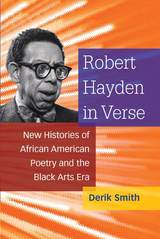 Robert Hayden in Verse: New Histories of African American Poetry and the Black Arts Era
Derik Smith
University of Michigan Press, 2018 This book sheds new light on the work of Robert Hayden (1913–80) in response to changing literary scholarship. While Hayden’s poetry often reflected aspects of the African American experience, he resisted attempts to categorize his poetry in racial terms. This fresh appreciation of Hayden’s work recontextualizes his achievements against the backdrop of the Black Arts Movement and traces his influence on contemporary African American poets. Placing Hayden at the heart of a history of African American poetry and culture spanning the Harlem Renaissance to the Hip-Hop era, the book explains why Hayden is now a canonical figure in 20th-century American literature.
In deep readings that focus on Hayden’s religiousness, class consciousness, and historical vision, author Derik Smith inverts earlier scholarly accounts that figure Hayden as an outsider at odds with the militancy of the Black Arts movement. Robert Hayden in Verse offers detailed descriptions of the poet’s vigorous contributions to 1960s discourse about art, modernity, and blackness to show that the poet was, in fact, an earnest participant in Black Arts-era political and aesthetic debates.
Robert Irwin Getty Garden
Lawrence Weschler
J. Paul Getty Trust, The, 2020 A beautifully illustrated, accessible volume about one of the Getty Center’s best-loved sites. Among the most beloved sites at the Getty Center, the Central Garden has aroused intense interest from the moment artist Robert Irwin was awarded the commission. First published in 2002, Robert Irwin Getty Garden is comprised of a series of discussions between noted author Lawrence Weschler and Irwin, providing a lively account of what Irwin has playfully termed “a sculpture in the form of a garden aspiring to be art.” The text revolves around four garden walks: extended conversations in which the artist explains the critical choices he made—from plant materials to steel—in the creation of a living work of art that has helped to redefine what a modern garden can and should be. This updated edition features new photography of the Central Garden in a smaller, more accessible format.
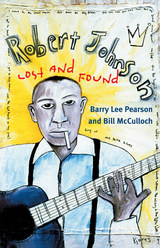 Robert Johnson: Lost and Found
Barry Lee Pearson and Bill McCulloch
University of Illinois Press, 2002 Even with just forty-one recordings to his credit, Robert Johnson (1911-38) is a towering figure in the history of the blues. His vast influence on twentieth-century American music, combined with his mysterious death at the age of twenty-seven, still encourage the speculation and myth that have long obscured the facts about his life. The most famous legend depicts a young Johnson meeting the Devil at a dusty Mississippi crossroads at midnight and selling his soul in exchange for prodigious guitar skills. Barry Lee Pearson and Bill McCulloch examine the full range of writings about Johnson and weigh the conflicting accounts of Johnson's life story against interviews with blues musicians and others who knew the man. Their extensive research uncovers a life every bit as compelling as the fabrications and exaggerations that have sprung up around it. In examining the bluesman's life and music, and the ways in which both have been reinvented and interpreted by other artists, critics, and fans, Robert Johnson: Lost and Found charts the cultural forces that have mediated the expression of African American artistic traditions.
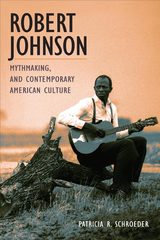 Robert Johnson, Mythmaking, and Contemporary American Culture
Patricia R. Schroeder
University of Illinois Press, 2004 Mississippi bluesman Robert Johnson died young and left behind just twenty-nine recorded songs. But the legacy, legends, and lore surrounding him loom large in American music history. Merging literary analysis with cultural criticism and biographical study, Patricia R. Schroeder explores Johnson's ongoing role as a cultural icon. Schroeder's detailed analysis engages key images and myths about the blues musician (such as the Faustian crossroads exchange of his soul for guitar virtuosity). Navigating the many competing interpretations that swirl around him, Schroeder reveals the cultural purposes served by the stories and the storytellers. The result is a fascinating examination of the relationships among Johnson's life, its subsequent portrayals, and the forces that drove the representations. Offering penetrating insights into both Johnson and the society that perpetuates him, Robert Johnson, Mythmaking, and Contemporary American Culture is essential reading for blues fans and cultural critics interested in a foundational musical figure.
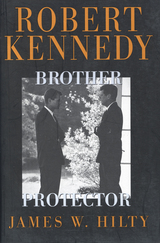 Robert Kennedy: Brother Protector
James Hilty
Temple University Press, 2000 For most of his life, Robert Kennedy stood in the shadow cast by his older brother, John; only after President Kennedy's assassination did the public gain a complete sense of Robert ("Bobby," we called him) as a committed advocate for social justice and a savvy politician in his own right. In this comprehensive biography, James W. Hilty offers a detailed and nuanced account of how Robert was transformed from a seemingly unpromising youngster, unlikely to match the accomplishments of his older brother, to the forceful man who ran "the family business," orchestrating the Kennedy quest for political power.
The centerpiece of the book is the remarkable political partnership that formed between Robert and John. As the manager of John's political campaigns Robert proved himself "hard as nails" (in his father's admiring words), relentless in securing his brother's victory and unforgiving in overseeing his brother's presidency. Hilty marshals a great deal of evidence to show that while they did not always see eye to eye -- Lyndon Johnson's selection as John's running mate being a notable disagreement -- Robert and John discussed virtually every issue, gauging the likely political effects of every position. Robert was so close to the President that insiders called him "number one and a-half"; their consultations were so intimate that they spoke in a kind of code, barely intelligible to those around them. In Hilty's evocative but unsentimental recounting of the political crises of the Kennedy Administration, Robert and John prove to have been more calculating and astute leaders than today's pundits allow. Theirs was a partnership that was unprecedented and, thanks to an act signed into law by Lyndon Johnson, is never to be equaled.
The Kennedy family's story seems to have been lived in the public eye and Americans apparently never tire of the photographs and familiar anecdotes. Most of the written accounts, however, either highlight the multiple tragedies and scandals, preserve the latter-day Camelot myth, or follow the elusive traces of some conspiracy.
In contrast, Hilty's concern is for historical perspective -- for accuracy, plausibility, and thoroughness. With facts and reasoned conclusions, he challenges the stories about the Kennedys in relation to Marilyn Monroe, J. Edgar Hoover, and Martin Luther King, Jr. that have passed into American folklore. He develops a portrait of Robert Kennedy as a complex public figure, a man of centrist political allegiances and firm moral convictions who easily adapted to the crusader's role in working for Joseph McCarthy or pursuing James Hoffa for racketeering. Hilty's great care in sifting through the evidence and weighing competing theories gives us a sense of Kennedy as a public servant whose dedication to social justice intensified after he was in office and further deepened after his brother's assassination.
Even as he took charge of family matters and supported Jacqueline during the long ordeal of the state funeral, Robert's own crushing pain was evident to the world. It was then that "Bobby" ceased being a disparaging term and became a mark of respect and affection.
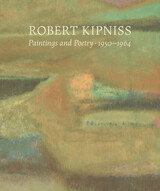 Robert Kipniss: Paintings and Poetry, 1950–1964
Marshall N. Price
The Artist Book Foundation, 2013 A comprehensive look at a memorable period in the celebrated painter and printmaker’s life and career, Robert Kipniss: Paintings and Poetry, 1950–1964 is the result of his many arduous months revisiting his more-than-half-a-century-ago writings, poems that were stashed away and essentially forgotten. “Some of the poems are straightforward, some are infused with surreal irony, and some are angry,” says Kipniss in his candid and honest preface. Thoughtful and articulate from conception to completion, his never-before-published poems are choreographed with his early paintings in this monograph’s contemplation of these influential and foundational fourteen years. “When I stopped writing [in 1961] my vision was no longer divided between word-thinking and picture-thinking: these approaches had merged and in expressing myself I was more whole,” reflects Kipniss in his retrospective musings.
This written and visual account of previously unpublished poems and critically acclaimed early paintings includes two astute and illustrative essays that further engage the reader in the evolution of the artist’s prolific oeuvre. His prints, drawings, and paintings are remarkable for their eloquence and refinement, earning him international recognition for his expansive landscapes and smalltown vistas, as well as quiet interiors and intimate still lifes. Thoughtful and articulate from conception to completion, his never-before-published poems are choreographed with his early paintings.
Readers of this seminal volume are all the richer for catching a glimpse of an intensely personal segment of this accomplished artist’s private history. In an unambiguous assessment, Kipniss elaborates, “The most significant insight that arose in this undertaking...came when I began to collate reproductions of my paintings of the 1950s. I could clearly see that my work in the two mediums were from very differing parts of my psyche, and that while they were both in themselves completely engaged, they were not in any way together.”
Kipniss’s work can be found in the permanent collections of The Metropolitan Museum of Art, New York, the Whitney Museum of American Art, New York, The British Museum, London, the Albertina, Vienna, Austria, the Bibliothèque Nationale de France, Paris, the Los Angeles County Museum of Art, Los Angeles, The Museum of Fine Arts, Boston and the Morgan Library, New York, among others.
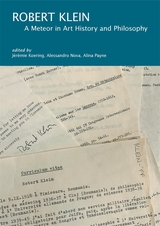 Robert Klein: A Meteor in Art History and Philosophy
Jérémie Koering, Alessandro Nova, and Alina Payne
Harvard University Press Although Robert Klein (1918–1967), well known for his erudition and the originality of his research, was an important, even paradigmatic figure for the field of art history in the twentieth century, no sustained study has yet been dedicated to his work.
Klein undertook to rethink Renaissance art and its history from the Aristotelian notion of technē as early as the 1950s, long before anyone was interested in this other genealogy of Renaissance art. For him, the Mannerist work is intended to create awe and wonder, inviting the viewer to question the technical process, a combination of intelligence and manual skill, that made it possible to realize in this specific form.
As his newly discovered papers and unpublished manuscripts testify, technē and Mannerism are far from being Klein’s only preoccupations. Other concepts have been studied with great originality by Klein, such as mnemonic art, paragone, dream, and responsibility.
This book, proceeding from a conference organized by Villa I Tatti, Kunsthistorisches Institut in Florence, and the Institut national d’histoire de l’art (INHA) in Paris, sheds light on Klein’s investigations as well as on the intellectual journey of an important art historian and philosopher of the past century.
 Robert Koehler’s The Strike: The Improbable Story of an Iconic 1886 Painting of Labor Protest
James M. Dennis
University of Wisconsin Press, 2011 Every work of art has a story behind it. In 1886 the German American artist Robert Koehler painted a dramatic wide-angle depiction of an imagined confrontation between factory workers and their employer. He called this oil painting The Strike. It has had a long and tumultuous international history as a symbol of class struggle and the cause of workers’ rights. First exhibited just days before the tragic Chicago Haymarket riot, The Strike became an inspiration for the labor movement. In the midst of the campaign for an eight-hour workday, it gained international attention at expositions in Paris, Munich, and the 1893 Chicago World’s Fair. Though the painting fell into obscurity for decades in the early twentieth century, The Strike lived on in wood-engraved reproductions in labor publications. Its purchase, restoration, and exhibition by New Left activist Lee Baxandall in the early 1970s launched it to international fame once more, and collectors and galleries around the world scrambled to acquire it. It is now housed in the Deutsches Historisches Museum in Berlin, Germany. Art historian James M. Dennis has crafted a compelling “biography” of Koehler’s painting: its exhibitions, acclaim, neglect, and rediscovery. He introduces its German-born creator and politically diverse audiences and traces the painting’s acceptance and rejection through the years, exploring how class and sociopolitical movements affected its reception. Dennis considers the significance of key figures in the painting, such as the woman asserting her presence in the center of action. He compellingly explains why The Strike has earned its identity as the iconic painting of the industrial labor movement.
 Robert Louis Stevenson: Writer of Boundaries
Edited by Richard Ambrosini and Richard Dury
University of Wisconsin Press, 2006 Robert Louis Stevenson: Writer of Boundaries reinstates Stevenson at the center of critical debate and demonstrates the sophistication of his writings and the present relevance of his kaleidoscopic achievements. While most young readers know Robert Louis Stevenson (1850–1894) as the author of Treasure Island, few people outside of academia are aware of the breadth of his literary output. The contributors to Robert Louis Stevenson: Writer of Boundaries look, with varied critical approaches, at the whole range of his literary production and unite to confer scholarly legitimacy on this enormously influential writer who has been neglected by critics.
As the editors point out in their Introduction, Stevenson reinvented the “personal essay” and the “walking tour essay,” in texts of ironic stylistic brilliance that broke completely with Victorian moralism. His first full-length work of fiction, Treasure Island, provocatively combined a popular genre (subverting its imperialist ideology) with a self-conscious literary approach. Stevenson, one of Scotland’s most prolific writers, was very effectively excluded from the canon by his twentieth-century successors and rejected by Anglo-American Modernist writers and critics for his play with popular genres and for his non-serious metaliterary brilliance. While Stevenson’s critical recognition has been slowly increasing, there have been far fewer published single-volume studies of his works than those of his contemporaries, Henry James and Joseph Conrad.
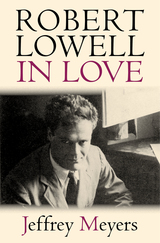 Robert Lowell in Love
Jeffrey Meyers
University of Massachusetts Press, 2016 Robert Lowell was known not only as a great poet but also as a writer whose devotion to his art came at a tremendous personal cost. In this book, his third on Robert Lowell, Jeffrey Meyers examines the poet's impassioned, troubled relationships with the key women in his life: his mother, Charlotte Winslow Lowell; his three wives—Jean Stafford, Elizabeth Hardwick, and Caroline Blackwood; nine of his many lovers; his close women friends—Mary McCarthy, Elizabeth Bishop, and Adrienne Rich; and his most talented students, Anne Sexton and Sylvia Plath.
Lowell's charismatic personality, compelling poetry, and literary fame attracted lovers and friends who were both frightened and excited by his aura of brilliance and danger. He loved the idea of falling in love, and in his recurring manic episodes he needed women at the center of his emotional and artistic life. Each affair became an intense dramatic episode. Though he idealized his loves and encouraged their talents, his frenetic affairs and tortured marriages were always conducted on his own terms. Robert Lowell in Love tells the story of the poet in the grip of love and gives voice to the women who loved him, inspired his poetry, and suffered along with him.
Robert Lowell: Nihilist as Hero
Vereen M. Bell
Harvard University Press, 1983 Here is a bold new vision of one of America’s most distinguished and controversial poets. Vereen Bell gives us a subtly reasoned account of the pattern of Robert Lowell’s poetic life, of his struggle to live in “the world as is.” Bell contends that Lowell’s poetry is characterized above all by its chronic and systematic pessimism, but that, paradoxically, Lowell’s reluctance to accept the consequences of his own unsparing vision is what gives his poetry its vigor, richness, and tonal complexity. The Lowell that is revealed is spiritually disconsolate but at the same time unable to suppress a deep-seated idealism.
Drawing on his thorough knowledge of the complete Lowell canon, Bell devotes particular attention to eight of the volumes, concentrating on the last phase of Lowell’s career, from Notebook (and its revision, History) through Day by Day. His readings bring a new understanding of Lowell’s art.
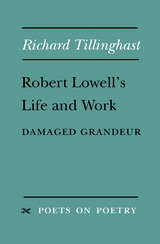 Robert Lowell's Life and Work: Damaged Grandeur
Richard Tillinghast, Editor
University of Michigan Press, 1995 Robert Lowell was regarded by many as the greatest American poet of his generation. "Somehow or other...in the middle of our worst century so far," his contemporary and friend Elizabeth Bishop wrote, "we have produced a magnificent poet." The scion of a distinguished New England family, Lowell crafted his poetry to comment on the nation's fate and even to influence the course of American politics. Along with Anne Sexton, John Berryman, and Sylvia Plath, he was a pioneer in the movement later known as Confessional Poetry, and his political gestures were often timely and controversial: his refusal of President Johnson's invitation to the White House came to symbolize the opposition of writers and intellectuals to the Vietnam War. Since Lowell's death in 1977, his reputation has suffered a decline; yet arguably no poet living today writes with the same authority, the same sense of grandeur.
Robert Lowell's Life and Work: Damaged Grandeur is a critical memoir by acclaimed poet Richard Tillinghast, a friend and student of Lowell's in the 1960s. Tillinghast shows how Lowell's gift for the grand gesture was tragically intertwined with the manic-depressive illness that afflicted him throughout his adult life- hence the "damaged grandeur" of the title. This book offers a radical re- examination of Lowell's poetic career and argues for the restoration of this complex and troubled poet to a pre-eminent position in American letters.
Richard Tillinghast's books of poetry include Our Flag was Still There, Sewanee in Ruins, The Knife and Other Poems, and Sleep Watch. He writes regularly for The New York Times, Atlantic Monthly, and The New Republic. He is Professor Emeritus of English, University of Michigan, and is the recipient of a fellowship from the John Simon Guggenheim Foundation.
Robert M. Hutchins: Portrait of an Educator
Mary Ann Dzuback
University of Chicago Press, 1991 As president of the University of Chicago from 1929 to 1951, Robert Maynard Hutchins came to be one of the most prominent and controversial figures in American higher education. To this day, his vision of what the university should be has given shape to twentieth-century debates over the content and function of education in the United States. In her critical biography, the first to focus on Hutchins' University of Chicago decades, Mary Ann Dzuback gives a full and fascinating account of this complex man—his development, his achievements and failures, and finally, his legacy.
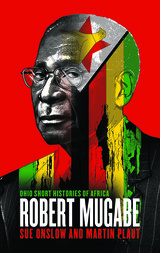 Robert Mugabe
Sue Onslow
Ohio University Press, 2018 Zimbabwe’s President Robert Mugabe sharply divides opinion and embodies the contradictions of his country’s history and political culture. As a symbol of African liberation and a stalwart opponent of white rule, he was respected and revered by many. This heroic status contrasted sharply, in the eyes of his rivals and victims, with repeated cycles of gross human rights violations. Mugabe presided over the destruction of a vibrant society, capital flight, and mass emigration precipitated by the policies of his government, resulting in his demonic image in Western media. This timely biography addresses the coup, led by some of Mugabe’s closest associates, that forced his resignation after thirty-seven years in power. Sue Onslow and Martin Plaut explain Mugabe’s formative experiences as a child and young man; his role as an admired Afro-nationalist leader in the struggle against white settler rule; and his evolution into a political manipulator and survivalist. They also address the emergence of political opposition to his leadership and the uneasy period of coalition government. Ultimately, they reveal the complexity of the man who stamped his personality on Zimbabwe’s first four decades of independence.
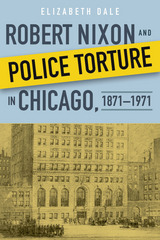 Robert Nixon and Police Torture in Chicago, 1871–1971
Elizabeth Dale
Northern Illinois University Press, 2016 In 2015, Chicago became the first city in the United States to create a reparations fund for victims of police torture, after investigations revealed that former Chicago police commander Jon Burge tortured numerous suspects in the 1970s, ’80s, and ’90s. But claims of police torture have even deeper roots in Chicago. In the late 19th century, suspects maintained that Chicago police officers put them in sweatboxes or held them incommunicado until they confessed to crimes they had not committed. In the first decades of the 20th century, suspects and witnesses stated that they admitted guilt only because Chicago officers beat them, threatened them, and subjected them to “sweatbox methods.” Those claims continued into the 1960s.
In Robert Nixon and Police Torture in Chicago, 1871–1971, Elizabeth Dale uncovers the lost history of police torture in Chicago between the Chicago Fire and 1971, tracing the types of torture claims made in cases across that period. To show why the criminal justice system failed to adequately deal with many of those allegations of police torture, Dale examines one case in particular, the 1938 trial of Robert Nixon for murder. Nixon’s case is famous for being the basis for the novel Native Son, by Richard Wright. Dale considers the part of Nixon’s account that Wright left out of his story: Nixon’s claims that he confessed after being strung up by his wrists and beaten and the legal system’s treatment of those claims. This original study will appeal to scholars and students interested in the history of criminal justice, and general readers interested in Midwest history, criminal cases, and the topic of police torture.
Robert of Arbrissel: Sex, Sin, and Salvation in the Middle Ages
Jacques Dalarun
Catholic University of America Press, 2006 This book tells the fascinating story of Robert of Arbrissel (ca. 1045-1116). Robert was a parish priest, longtime student, reformer, hermit, wandering preacher, and, most famously, founder of the abbey of Fontevraud
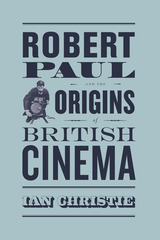 Robert Paul and the Origins of British Cinema
Ian Christie
University of Chicago Press, 2019 The early years of film were dominated by competition between inventors in America and France, especially Thomas Edison and the Lumière brothers . But while these have generally been considered the foremost pioneers of film, they were not the only crucial figures in its inception. Telling the story of the white-hot years of filmmaking in the 1890s, Robert Paul and the Origins of British Cinema seeks to restore Robert Paul, Britain’s most important early innovator in film, to his rightful place.
From improving upon Edison’s Kinetoscope to cocreating the first movie camera in Britain to building England’s first film studio and launching the country’s motion-picture industry, Paul played a key part in the history of cinema worldwide. It’s not only Paul’s story, however, that historian Ian Christie tells here. Robert Paul and the Origins of British Cinema also details the race among inventors to develop lucrative technologies and the jumbled culture of patent-snatching, showmanship, and music halls that prevailed in the last decade of the nineteenth century. Both an in-depth biography and a magnificent look at early cinema and fin-de-siècle Britain, Robert Paul and the Origins of British Cinema is a first-rate cultural history of a fascinating era of global invention, and the revelation of one of its undervalued contributors.
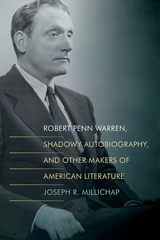 Robert Penn Warren, Shadowy Autobiography, and Other Makers of American Literature
Joseph R. Millichap
University of Tennessee Press, 2021 Toward the end of his career, Robert Penn Warren wrote, “It may be said that our lives are our own supreme fiction.” Although lauded for his writing in multiple genres, Warren never wrote an autobiography. Instead, he created his own “shadowy autobiography” in his poetry and prose, as well as his fiction and nonfiction. As one of the most thoughtful scholars on Robert Penn Warren and the literature of the South, Joseph Millichap builds on the accepted idea that Warren’s poetry and fiction became more autobiographical in his later years by demonstrating that that same progression is replicated in Warren’s literary criticism. This meticulously researched study reexamines in particular Warren’s later nonfiction in which autobiographical concerns come into play—that is, in those fraught with psychological crisis such as Democracy and Poetry.
Millichap reveals the interrelated literary genres of autobiography, criticism, and poetry as psychological modes encompassing the interplay of Warren’s life and work in his later nonfiction. He also shows how Warren’s critical engagement with major American authors often centered on the ways their creative work intersected with their lives, thus generating both autobiographical criticism and the working out of Warren’s own autobiography under these influences. Millichap’s latest book focuses on Warren’s critical responses to William Faulkner, John Crowe Ransom, Herman Melville, Nathaniel Hawthorne, John Greenleaf Whittier, and Theodore Dreiser. In addition, the author carefully considers the black and female writers Warren assessed more briefly in American Literature: The Makers and the Making.
Robert Penn Warren, Shadowy Autobiography, and Other Makers of American Literature presents the breadth of Millichap’s scholarship, the depth of his insight, and the maturity of his judgment, by giving us to understand that in his writing, Robert Penn Warren came to know his own vocation as a poet and critic—and as an American.
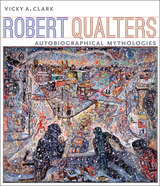 Robert Qualters: Autobiographical Mythologies
Vicky A. Clark
University of Pittsburgh Press, 2014 Teeming with convulsive energy, raw brush strokes, and Fauvist colors, the paintings of Robert Qualters reflect the multifaceted and kinetic spirit of the artist himself. In these pages, the art historian Vicky A. Clark presents the first in-depth study of the art and life of this iconic Pittsburgh artist. Complemented by over eighty color images, Clark follows Qualters’s development from early childhood sketches through his recent autobiographical work. As she reveals, Qualters is truly a quotidian raconteur, who infuses allegory, narrative, and memory into his paintings of urban landscapes, neighborhoods, lunch counters, and amusement parks. Here, we witness coming of age and sexuality, economic hardship, working-class identities, death and rebirth, and many other themes, both personal and universal.
As Clark shows, Qualters’s oeuvre is the culmination of a lifelong artistic journey, recalling a host of influences from Japanese prints to Matisse, Bruegel, and Rembrandt. Throughout his career, and despite the popularity of his contemporaries, many of whom adopted abstract painting, Qualters has maintained a distinctly representational style, keeping a close link to his audience through the power of visual storytelling.
Robert Qualters was named Pennsylvania Artist of the Year for 2014, part of the Governor's Awards for the Arts in Pennsylvania, sponsored by the Pennsylvania Council on the Arts.
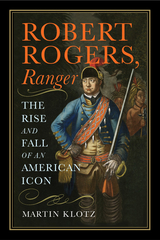 Robert Rogers, Ranger: The Rise and Fall of an American Icon
Martin Klotz
Westholme Publishing, 2024 Robert Rogers, commander of Rogers’ Rangers during the French and Indian War, was the war’s best-known colonial military hero and, in the ensuing peace, one of the best-known Americans of any description, rivaling Benjamin Franklin in popularity. He was revered in the colonies as an example of the self-made man based on merit, in contrast to the hide-bound, hierarchical British military establishment. Yet this American icon ultimately alienated his peers,fought as a loyalist in the Revolutionary War, ruined himself financially, and died in obscurity in London, estranged from the country of his birth. Rogers is known today for his role in developing the mystique of the modern Ranger, but what explains his meteoric rise and his long, depressing fall?
Robert Rogers, Ranger: The Rise and Fall of an American Icon by Martin Klotz is a fresh look at the life of this famous, yet highly flawed man. Rogers undeniably had great personal strengths. He was brave nearly to the point of fearlessness. He was physically robust, always the one to cover the retreat, carry the wounded, or go for help when no one else could carry on. He was an intrepid explorer who wrote with eloquence about the splendors of the American frontier. He was bold and unconventional, good at thinking outside the box. He was an outstanding scout and intelligence gatherer who provided invaluable service to a British army inexperienced in woodland warfare. At the same time Rogers had enormous weaknesses that undermined his ability to lead effectively. His boldness was never tempered by judgment, and he was prone to grandiose schemes that came to nothing or, worse, to disaster. His constant self-promotion—including embellishing and lying about his battlefield successes—contributed to his popularity but damaged his reputation with peers and superiors. He succumbed to alcoholism and gambling, was profligate, especially with money—his debts were enormous—and routinely skirted the edges of the law. Rogers never found a comfortable place in America. Instead, his aristocratic patrons in London, who knew him mostly from his own self-description, gave him his most valuable opportunities, including commanding an important military and trading center on the colonial frontier and establishing the Queen’s Rangers to fight alongside Crown forces during the Revolution. But when the British cause failed in America, Rogers became an anathema on both sides of the Atlantic. A fascinating inquiry into an eighteenth-century life, Robert Rogers, Ranger presents this American legend as he lived, crossing the line between fame and misfortune.
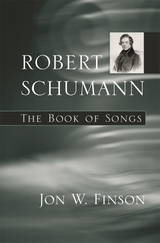 Robert Schumann: The Book of Songs
Jon W. Finson
Harvard University Press, 2008 Arguably no other nineteenth-century German composer was as literate or as finely attuned to setting verse as Robert Schumann. Jon W. Finson challenges long-standing assumptions about Schumann's Lieder, engaging traditionally held interpretations. He argues against the belief that the "Year of Song" simply reflects Schumann's personal life. Finson also devotes attention to the form and metric structure of German poetry that is almost entirely new to the discussion of Schumann's songs.
Arranged in part thematically, rather than merely by strict compositional chronology, this book speaks to the heart of Schumann's music. Finson's sustained attention to performance, such as questions of whether two singers might divide performance of cycles or whether miscellanies form coherent entities, allows the reader to engage Schumann's songs in novel ways.
Finson brings original research and the most recent scholarship to the musically literate public and the expert alike. This represents the definitive work on Schumann's songs and the standard reference for any Schumann enthusiast.
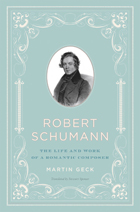 Robert Schumann: The Life and Work of a Romantic Composer
Martin Geck
University of Chicago Press, 2012 Robert Schumann (1810–56) is one of the most important and representative composers of the Romantic era. Born in Zwickau, Germany, Schumann began piano instruction at age seven and immediately developed a passion for music. When a permanent injury to his hand prevented him from pursuing a career as a touring concert pianist, he turned his energies and talents to composing, writing hundreds of works for piano and voice, as well as four symphonies and an opera. Here acclaimed biographer Martin Geck tells the fascinating story of this multifaceted genius, set in the context of the political and social revolutions of his time. The image of Schumann the man and the artist that emerges in Geck’s book is complex. Geck shows Schumann to be not only a major composer and music critic—he cofounded and wrote articles for the controversial Neue Zeitschrift für Musik—but also a political activist, the father of eight children, and an addict of mind-altering drugs. Through hard work and determination bordering on the obsessive, Schumann was able to control his demons and channel the tensions that seethed within him into music that mixes the popular and esoteric, resulting in compositions that require the creative engagement of reader and listener. The more we know about a composer, the more we hear his personality in his music, even if it is above all on the strength of his work that we love and admire him. Martin Geck’s book on Schumann is not just another rehashing of Schumann’s life and works, but an intelligent, personal interpretation of the composer as a musical, literary, and cultural personality.
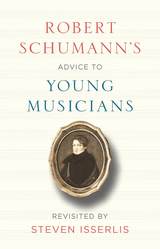 Robert Schumann's Advice to Young Musicians: Revisited by Steven Isserlis
Robert Schumann
University of Chicago Press, 2017 If everybody were to play first violin, we could not have an orchestra. Therefore respect each musician in his own place.
There is no end to learning.
Originally published in1850, Advice to Young Musicians: Musical Rules for Home and in Life offered composer Robert Schumann’s (1810–56) combination of practical advice and poetic words of wisdom for young people beginning their musical education. Presented in aphorisms and short paragraphs, the book’s insights remain as valuable today as when it was written. Recognizing the continued resonance of Schumann’s words, world-renowned cellist Steven Isserlis, himself a writer of children’s books and many articles for young musicians, set out to rescue the work from history. Here, in this beautiful gift edition, he revisits Schumann’s work and contributes his own contemporary counsel for musicians and music lovers.
For this edition, Isserlis retranslated Schumann’s text and arranged it into four thematic sections: “On being a musician,” “Playing,” “Practicing,” and “Composing.” Each page is decoratively designed, and accompanying Schumann’s original quotation are Isserlis’s thoughtful and often humorous glosses. The book concludes with Isserlis’s own reflections on his life as a musician and performer: “My Own Bits of Advice (For What They’re Worth).” The result is a unique and thought-provoking book that will be treasured by aspiring musicians of any age.
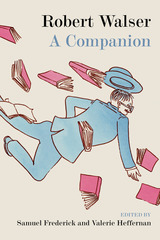 Robert Walser: A Companion
Edited by Samuel Frederick and Valerie Heffernan
Northwestern University Press, 2018 The Swiss writer Robert Walser (1878-1956) is now recognized as one of the most important European authors of the modernist period, having garnered high praise from such prominent voices as Susan Sontag, W. G. Sebald, and J. M. Coetzee. Robert Walser: A Companion is the first comprehensive guide to Walser’s work in English. The twelve essays in this collection examine Walser’s literary output, historical milieu, and idiosyncratic writing process, addressing aspects of his biography; discussing the various genres in which he wrote (the novel, short prose, drama, lyric poetry, and letters); and analyzing his best-known novels and short stories alongside lesser-known but no less fascinating poems, plays, and prose pieces. An essential addition to the scholarship about this eccentric, prolific, and influential writer’s work, Robert Walser: A Companion will be of interest both to established scholars and to those coming to Walser for the first time.
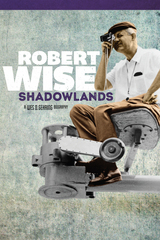 Robert Wise: Shadowlands
Wes D. Gehring
Indiana Historical Society Press, 2012 Born in Winchester, Indiana, Robert Wise spent much of his youth sitting in darkened movie theaters enthralled by the swashbuckling heroics of screen legend Douglas Fairbanks Sr. Through these viewings, Wise developed a passion for film—a passion he followed for the rest of his life, making movies in Hollywood. Nationally known film historian Wes D. Gehring explores Wise’s life from his days in the Hoosier State to the beginning of his movie career at RKO studios working as the editor of Orson Welles’s classic movie Citizen Kane. Wise is best known for producing and directing two of the most memorable movie musicals in cinema history, West Side Story (co-director Jerome Robbins) and The Sound of Music, for which he won four Academy Awards—two Best Picture and Best Directors Oscars. But, as Gehring notes, other than Howard Hawks, Wise was arguably Hollywood’s most versatile director of various celebrated genre films.
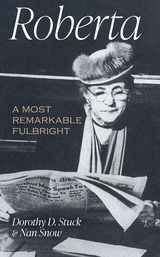 Roberta: A Most Remarkable Fulbright
Dorothy Stuck
University of Arkansas Press, 1997 Obscured in history by her internationally renowned son, Sen. J. William Fulbright, Roberta Waugh Fulbright was, nonetheless, an extraordinary person deserving of tribute. Here, finally and fittingly, is her biography-a sensitive portrait of a complex woman who was one Arkansas’s dominant figures. Traditional mother of six children, gardener, thinker, and provocative conversationalist, Roberta Fulbright became a sudden widow at age forty-nine. She eventually took charge of the inherited, fragmented, business holdings, originally assembled by her husband, Jay, and molded them into a multi-enterprise family firm. As such, she emerged as an influential newspaper publisher and columnist, bank president, savvy business owner, and conscientious civic crusader. Through her own self-confidence and canny business sense, she became a formidable competitor in Fayetteville’s male-dominated business establishment. Her resolve was reflected in her signature column in the Northwest Arkansas Times, “As I See It”: So long as a woman does poorly and the lords of creation can say, “Oh, it’s nothing but a fool woman,” they are fairly content, for they must, every mother’s son of them, have a woman to do much of the work. But let a woman do WELL and she is all but burned at the stake. I will say for the benefit of those who may be interested, I did not choose business as a career, it was thrust upon me. I did choose it in preference to going broke or dissipating my heritage and that of my children. Intensely interested in politics, Fulbright challenged a corrupt local political machine and, later took on governor, producing a chain of events leading to he4r son’s election to Congress. In her column, she extolled the virtues of women’s talents, and she campaigned for an equal right for women in public life. In doing so, she was a moving force for acknowledgement of women in nontraditional roles, long before feminism became a movement. Stuck and Snow have produced a brisk, lively story, drawing from a genealogical records, numerous interviews of family members, business associates, and friends, and the almost two million words written by Fulbright in her column. Renowned southern historian Willard B. Gatewood Jr. has said of this work: “I really appreciate [the authors’] treatment of [Roberta] as a person— inquisitive, assertive, benevolent, etc. They have captured superbly the family matriarch, incessant thinker and talker, the indulgent grandmother, and gifted gardener. This is truly a good ‘read’ and represents a highly significant achievement.”
 Roberto Michels’ First Lectures in Political Sociology
Roberto MichelsTranslated by Alfred de GraziaIntroduction by Alfred de Grazia
University of Minnesota Press, 1949 Roberto Michels' First Lectures in Political Sociology was first published in 1949. Minnesota Archive Editions uses digital technology to make long-unavailable books once again accessible, and are published unaltered from the original University of Minnesota Press editions. A number of papers on key ideas in the social sciences are made available to Americans for the first time in this book. Representative of Western European culture, Roberto Michels, author of the famous Political Parties and many other works, asks and gives answers to a number of questions basic to the further study of political behavior, socialeconomic institutions, and public law. There parade before the reader of this volume the really great European contributors to social science of the last century: Saint-Simon, Karl Marx, Gabriel Tarde, Gaetano Mosca, Vilfredo Pareto, Max Weber, Werner Sombart, Georges Sorel, and many other critics and scholars. At every step the sociologist, the economist, the psychologist, and the political scientist — for Michels was all of these—intermingle and reinforce each other. German born, Roberto Michels studied at Paris, Munich, Leipzig, Halle, and Turin, and taught successively in some of Europe's greatest universities. In 1927 he lectured in America at the University of Chicago and elsewhere.
The Robie House of Frank Lloyd Wright
Joseph Connors
University of Chicago Press, 1984 The Robie House in Chicago is one of the world's most famous houses, a masterpiece from the end of Frank Lloyd Wright's early period and a classic example of the Prairie House. This book is intended as a companion for the visitor to the house, but it also probes beneath the surface to see how the design took shape in the mind of the architect. Wright's own writings, rare working drawings from the period, and previously unpublished photographs of the house in construction help the reader look over the shoulder of the architect at work. Beautiful new photographs of the Robie House and related Wright houses have been specially taken to illustrate the author's points, and a bibliography on Wright is provided.
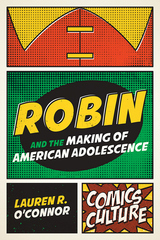 Robin and the Making of American Adolescence
Lauren R. O'Connor
Rutgers University Press, 2021 Holy adolescence, Batman! Robin and the Making of American Adolescence offers the first character history and analysis of the most famous superhero sidekick, Robin. Debuting just a few months after Batman himself, Robin has been an integral part of the Dark Knight’s history—and debuting just a few months prior to the word “teenager” first appearing in print, Robin has from the outset both reflected and reinforced particular images of American adolescence. Closely reading several characters who have “played” Robin over the past eighty years, Robin and the Making of American Adolescence reveals the Boy (and sometimes Girl!) Wonder as a complex figure through whom mainstream culture has addressed anxieties about adolescents in relation to sexuality, gender, and race. This book partners up comics studies and adolescent studies as a new Dynamic Duo, following Robin as he swings alongside the ever-changing American teenager and finally shining the Bat-signal on the latter half of “Batman and—.”
A Robin's Journey
Emma Sloan
Michigan Publishing, 2023 This book was created for the course titled “Nature, Culture, & Landscape” taught by Sara Adlerstein at the University of Michigan, School for Environment & Sustainability. The objective was to create a book that uses the topic of urban gardening to teach young readers about the importance of environmental stewardship—respecting and caring for Earth and the diversity of life it sustains.
Robinson Crusoe after 300 Years
Andreas K. E. Mueller
Bucknell University Press, 2021 There is no shortage of explanations for the longevity of Defoe’s Robinson Crusoe, which has been interpreted as both religious allegory and frontier myth, with Crusoe seen as an example of the self-sufficient adventurer and the archetypal colonizer and capitalist. Defoe’s original has been reimagined multiple times in legions of Robinsonade or castaway stories, but the Crusoe myth is far from spent. This wideranging collection brings together eleven scholars who suggest new and unfamiliar ways of thinking about this most familiar of works, and who ask us to consider the enduring appeal of “Crusoe,” more recognizable today than ever before.
Robinson Crusoe, USN: The Adventures of George R. Tweed Rm1c on Japanese-Held Guam
George R. Tweed
Westholme Publishing, 2010 An Inspiring Story of Survival and Friendship
At the same time as the attack on Pearl Harbor, Japan captured American Guam. Given the choice of surrendering or being taken prisoner, George R. Tweed escaped into the countryside. Aided by Chamorro natives who risked their lives to keep him safe, Tweed survived for two and a half years until he was eventually rescued by the U.S. Navy. In Robinson Crusoe, USN, first published in 1945, Tweed recounts his remarkable experiences and the debt of gratitude he held for those who help keep him alive.
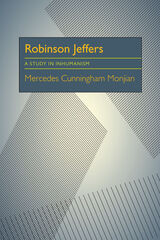 Robinson Jeffers: A Study in Inhumanism
Mercedes Cunningham Monjian
University of Pittsburgh Press, 1958
Robinson Jeffers’ name has been so inseparably linked with California that it is difficult to think of his origins being elsewhere. Jeffers was both in 1887 in Pittsburgh, Pennsylvania. His father was a professor at Western Theological Seminary and a scholar of ancient languages who taught his son to read Greek before he started school. In 1902, Jeffers enrolled in the University of Western Pennsylvania, now the University of Pittsburgh, but his family moved to California soon thereafter, and he graduated from Occidental College at the age of eighteen.
Inhumanism was the label Jeffers first used in the preface to The Double Axe and Other Poems to explain the doctrine that permeates all of his poetry. Defining humanism as “a system of thinking in which man, his interests, and development, are made dominant, his addition of the negative prefix was his attempt to subdue human interests and development to something greater, contrasting them against the magnificent beauty and immense worth of the natural world.
In addition to discussing Jeffers’ life and philosophy, Monjian analyzes the form and style of his poetry, calling it “a singular style, slashing its way across the page with violence of image and a free, crashing rhythm.” She ends the book: “Whatever the future holds for this poet, our own age is still awed by the magnificent talent and effort of a burdened mind struggling to free humanity from the shackles of an impoverished self-love, and the myths to which he believes it gave birth.”
 Robo Sacer: Necroliberalism and Cyborg Resistance in Mexican and Chicanx Dystopias
David S. Dalton
Vanderbilt University Press, 2023 Winner of the Premio Alambique, Alambique: Revista Académica de Ciencia Ficción y Fantasía, 2025
Robo Sacer engages the digital humanities, critical race theory, border studies, biopolitical theory, and necropolitical theory to interrogate how technology has been used to oppress people of Mexican descent—both within Mexico and in the United States—since the advent of the North American Free Trade Agreement (NAFTA) in 1994. As the book argues, robo-sacer identity emerges as transnational flows of bodies, capital, and technology become an institutionalized state of exception that relegates people from marginalized communities to the periphery.
And yet the same technology can be utilized by the oppressed in the service of resistance. The texts studied here represent speculative stories about this technological empowerment. These texts theorize different means of techno-resistance to key realities that have emerged within Mexican and Chicano/a/x communities under the rise and reign of neoliberalism. The first three chapters deal with dehumanization, the trafficking of death, and unbalanced access to technology. The final two chapters deal with the major forms of violence—feminicide and drug-related violence—that have grown exponentially in Mexico with the rise of neoliberalism. These stories theorize the role of technology both in oppressing and in providing the subaltern with necessary tools for resistance.
Robo Sacer builds on the previous studies of Sayak Valencia, Irmgard Emmelhainz, Guy Emerson, Achille Mbembe, and of course Giorgio Agamben, but it differentiates itself from them through its theorization on how technology—and particularly cyborg subjectivity—can amend the reigning biopolitical and necropolitical structures of power in potentially liberatory ways. Robo Sacer shows how the cyborg can denaturalize constructs of zoē by providing an outlet through which the oppressed can tell their stories, thus imbuing the oppressed with the power to combat imperialist forces.
 Robot Ghosts and Wired Dreams: Japanese Science Fiction from Origins to Anime
Christopher Bolton
University of Minnesota Press, 2007 Since the end of the Second World War—and particularly over the last decade—Japanese science fiction has strongly influenced global popular culture. Unlike American and British science fiction, its most popular examples have been visual—from Gojira (Godzilla) and Astro Boy in the 1950s and 1960s to the anime masterpieces Akira and Ghost in the Shell of the 1980s and 1990s—while little attention has been paid to a vibrant tradition of prose science fiction in Japan. Robot Ghosts and Wired Dreams remedies this neglect with a rich exploration of the genre that connects prose science fiction to contemporary anime. Bringing together Western scholars and leading Japanese critics, this groundbreaking work traces the beginnings, evolution, and future direction of science fiction in Japan, its major schools and authors, cultural origins and relationship to its Western counterparts, the role of the genre in the formation of Japan’s national and political identity, and its unique fan culture. Covering a remarkable range of texts—from the 1930s fantastic detective fiction of Yumeno Kyûsaku to the cross-culturally produced and marketed film and video game franchise Final Fantasy—this book firmly establishes Japanese science fiction as a vital and exciting genre. Contributors: Hiroki Azuma; Hiroko Chiba, DePauw U; Naoki Chiba; William O. Gardner, Swarthmore College; Mari Kotani; Livia Monnet, U of Montreal; Miri Nakamura, Stanford U; Susan Napier, Tufts U; Sharalyn Orbaugh, U of British Columbia; Tamaki Saitô; Thomas Schnellbächer, Berlin Free U. Christopher Bolton is assistant professor of Japanese at Williams College. Istvan Csicsery-Ronay Jr. is professor of English at DePauw University. Takayuki Tatsumi is professor of English at Keio University.
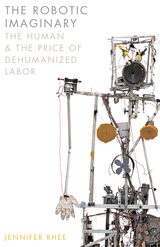 The Robotic Imaginary: The Human and the Price of Dehumanized Labor
Jennifer Rhee
University of Minnesota Press, 2018 Tracing the connections between human-like robots and AI at the site of dehumanization and exploited labor
The word robot—introduced in Karel Čapek’s 1920 play R.U.R.—derives from rabota, the Czech word for servitude or forced labor. A century later, the play’s dystopian themes of dehumanization and exploited labor are being played out in factories, workplaces, and battlefields. In The Robotic Imaginary, Jennifer Rhee traces the provocative and productive connections of contemporary robots in technology, film, art, and literature. Centered around the twinned processes of anthropomorphization and dehumanization, she analyzes the coevolution of cultural and technological robots and artificial intelligence, arguing that it is through the conceptualization of the human and, more important, the dehumanized that these multiple spheres affect and transform each other.
Drawing on the writings of Alan Turing, Sara Ahmed, and Arlie Russell Hochschild; such films and novels as Her and The Stepford Wives; technologies like Kismet (the pioneering “emotional robot”); and contemporary drone art, this book explores anthropomorphic paradigms in robot design and imagery in ways that often challenge the very grounds on which those paradigms operate in robotics labs and industry. From disembodied, conversational AI and its entanglement with care labor; embodied mobile robots as they intersect with domestic labor; emotional robots impacting affective labor; and armed military drones and artistic responses to drone warfare, The Robotic Imaginary ultimately reveals how the human is made knowable through the design of and discourse on humanoid robots that are, paradoxically, dehumanized.
Robots and Automated Manufacture
J. Billingsley
The Institution of Engineering and Technology, 1985 To serve its purpose, an industrial robot must be harnessed to a manufacturing task, be it welding, assembly, adjustment or the inspection of food products. Complex tasks are likely to require offline programming, both for economy of equipment use and to permit computer simulations for collision avoidance. Vision and other sensory systems are helping to extend the capabilities of robots, while advanced programming techniques are making their use more accessible to the shop floor.
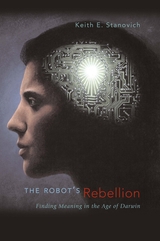 The Robot's Rebellion: Finding Meaning in the Age of Darwin
Keith E. Stanovich
University of Chicago Press, 2004 The idea that we might be robots is no longer the stuff of science fiction; decades of research in evolutionary biology and cognitive science have led many esteemed scientists to the conclusion that, according to the precepts of universal Darwinism, humans are merely the hosts for two replicators (genes and memes) that have no interest in us except as conduits for replication. Richard Dawkins, for example, jolted us into realizing that we are just survival mechanisms for our own genes, sophisticated robots in service of huge colonies of replicators to whom concepts of rationality, intelligence, agency, and even the human soul are irrelevant.
Accepting and now forcefully responding to this decentering and disturbing idea, Keith Stanovich here provides the tools for the "robot's rebellion," a program of cognitive reform necessary to advance human interests over the limited interest of the replicators and define our own autonomous goals as individual human beings. He shows how concepts of rational thinking from cognitive science interact with the logic of evolution to create opportunities for humans to structure their behavior to serve their own ends. These evaluative activities of the brain, he argues, fulfill the need that we have to ascribe significance to human life.
We may well be robots, but we are the only robots who have discovered that fact. Only by recognizing ourselves as such, argues Stanovich, can we begin to construct a concept of self based on what is truly singular about humans: that they gain control of their lives in a way unique among life forms on Earth—through rational self-determination.
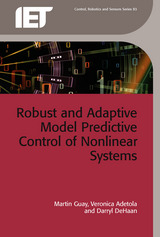 Robust and Adaptive Model Predictive Control of Nonlinear Systems
Martin Guay
The Institution of Engineering and Technology, 2016 Most physical systems possess parametric uncertainties or unmeasurable parameters and, since parametric uncertainty may degrade the performance of model predictive control (MPC), mechanisms to update the unknown or uncertain parameters are desirable in application. One possibility is to apply adaptive extensions of MPC in which parameter estimation and control are performed online. This book proposes such an approach, with a design methodology for adaptive robust nonlinear MPC (NMPC) systems in the presence of disturbances and parametric uncertainties. One of the key concepts pursued is the concept of set-based adaptive parameter estimation, which provides a mechanism to estimate the unknown parameters as well as an estimate of the parameter uncertainty set. The knowledge of non-conservative uncertain set estimates is exploited in the design of robust adaptive NMPC algorithms that guarantee robustness of the NMPC system to parameter uncertainty.
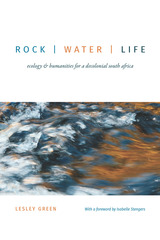 Rock | Water | Life: Ecology and Humanities for a Decolonial South Africa
Lesley Green
Duke University Press, 2020 In Rock | Water | Life Lesley Green examines the interwoven realities of inequality, racism, colonialism, and environmental destruction in South Africa, calling for environmental research and governance to transition to an ecopolitical approach that could address South Africa's history of racial oppression and environmental exploitation. Green analyzes conflicting accounts of nature in environmental sciences that claim neutrality amid ongoing struggles for land restitution and environmental justice. Offering in-depth studies of environmental conflict in contemporary South Africa, Green addresses the history of contested water access in Cape Town; struggles over natural gas fracking in the Karoo; debates about decolonizing science; the potential for a politics of soil in the call for land restitution; urban baboon management; and the consequences of sending sewage to urban oceans.
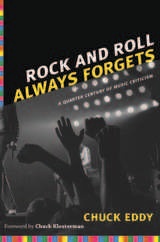 Rock and Roll Always Forgets: A Quarter Century of Music Criticism
Chuck Eddy
Duke University Press, 2011 Chuck Eddy is one of the most entertaining, idiosyncratic, influential, and prolific music critics of the past three decades. His byline has appeared everywhere from the Village Voice and Rolling Stone to Creem, Spin, and Vibe. Eddy is a consistently incisive journalist, unafraid to explore and defend genres that other critics look down on or ignore. His interviews with subjects ranging from the Beastie Boys, the Pet Shop Boys, Robert Plant, and Teena Marie to the Flaming Lips, AC/DC, and Eminem’s grandmother are unforgettable. His review of a 1985 Aerosmith album reportedly inspired the producer Rick Rubin to pair the rockers with Run DMC. In the eighties, Eddy was one of the first critics to widely cover indie rock, and he has since brought his signature hyper-caffeinated, hyper-hyphenated style to bear on heavy metal, hip-hop, country—you name it. Rock and Roll Always Forgets features the best, most provocative reviews, interviews, columns, and essays written by this singular critic. Essential reading for music scholars and fans, it may well be the definitive time-capsule comment on pop music at the turn of the twenty-first century.
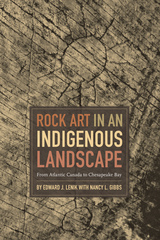 Rock Art in an Indigenous Landscape: From Atlantic Canada to Chesapeake Bay
Edward J. Lenik with Nancy L. Gibbs
University of Alabama Press, 2021 Examines a host of rock art sites from Nova Scotia to Maryland
Rock art, petroglyphs, and pictographs have been made by indigenous peoples for thousands of years. Images have been found on bedrock, cliff faces, ridge tops, and boulders and in rock shelters. Some rock surfaces are covered with abstract and geometric designs such as concentric circles, zigzag lines, grids, and cross-hatched and ladder-like patterns. Others depict humans, footprints and handprints, mammals, serpents, and mythic creatures. All were meticulously pecked, incised or painted. This ancient art form connects us to Native Americans’ past, traditions, world views, and sacred places.
Rock Art in an Indigenous Landscape: From Atlantic Canada to Chesapeake Bay is the culmination of the research of preeminent rock art scholar Edward J. Lenik. Here, he profiles more than 64 examples of rock art in varied locations from Nova Scotia to Maryland. Chapters are organized geographically and lead the reader through coastal sites, rivers and streams, lakes and ponds, and upland sites.
Lenik discusses the rock art examples in the context of the indigenous landscape, noting the significance of the place of discovery. Coverage includes a meticulous description of the design or motif and suggestions of time frame, artist-makers, and interpretations. Where possible, indigenous views on the artifacts enrich the narrative. Other invaluable elements are a discussion of how to identify indigenous rock art; a glossary of rock art terms and features and archaeological culture periods; an up-to-date bibliography; and an appendix of a number of reported but unconfirmed petroglyph sites in the regions.
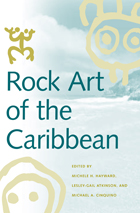 Rock Art of the Caribbean
Edited by Michele Hayward, Lesley-Gail Atkinson, and Michael A. Cinquino
University of Alabama Press, 2009 This compilation, by an international grouping of scholars, focuses on the nature of Caribbean rock art or rock graphics and makes clear the region's substantial and distinctive rock art tradition. Thorough and comparative, it includes data on the history of rock graphic research, the nature of the assemblages (image numbers, types, locations), and the legal, conservation, and research status of the image sites. Chapters on these topics cover research on the islands of Cuba, Haiti, Dominican Republic, the Bahamas, Jamaica, Puerto Rico, U.S. Virgin Islands, Guadeloupe, Aruba, and Bonaire. The prehispanic rock art and other ceremonial structures and artifacts, along with enthnohistorical accounts of the region at Contact, projected backward in time, all point to an active ritual and ceremonial life involving commoners, religious specialists, and elites in differing and interconnected roles and for diverse purposes. The selective use of common rock graphic design and physical elements can be seen in the distribution and execution of the carved and painted images. Pecked, ground, abraded, and scratched petroglyphs, along with pictographs done frequently in red, black, white and orange hues are found on a range of rock surfaces including limestones, granites, diorites, and andesites. Caves/rock shelters and rock formations associated with water sources (water ways, pools, ocean) account for the two most common locations, followed by ball court sites, inland rock outcroppings and beach rock. In addition to specific area presentations, the work includes a review of recent advances in Caribbean rock graphic studies including dating and interpretative models; the application of a new documentation method and resulting computer manipulation advantages; a conservation project in Jamaica that has implications for the preservation and interpretation of the site; and a proposed dating sequence for the Lesser Antillean Windward Islands.
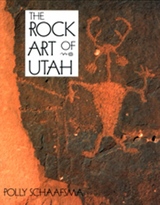 Rock Art Of Utah
Polly Schaafsma
University of Utah Press, 1994 Over many centuries, the prehistoric Fremont and Anasazi peoples of present-day Utah left an artistic record in which distinctive styles are readily identifiable. From the Uinta Mountains through the central canyonlands to the Virgin River, Utah’s abundant prehistoric rock art offers glimpses of a lost world.
The Rock Art of Utah is a rich sample of the many varieties of rock art found in the state. Through nearly two hundred high-quality photographs and drawings from the Donald Scott Collection, all made during the 1920s and 1930s, rock art expert Polly Schaafsma provides a fascinating, comprehensive tour of this unique legacy. From the Uinta Mountains through the central canyonlands to the Virgin River, Utah’s abundant prehistoric rock art offers glimpses of a lost world. Over many centuries, the Fremont and Anasazi peoples left an artistic record in which distinctive styles are readily identifiable. The Rock Art of Utah is a guide to the many varieties of rock art found in the state. Through dozens of high-quality photographs and drawings from the Donald Scott Collection, all made during the 1920s and 30s, author Polly Schaafsma provides a fascinating, comprehensive tour of this unique legacy. Now in an updated edition, it will engage anyone with an interest in the ancient peoples of the Colorado Plateau.
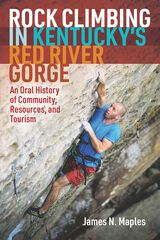 Rock Climbing in Kentucky's Red River Gorge: An Oral History of Community, Resources, and Tourism
James N. Maples
West Virginia University Press, 2021 Tells the fascinating story of the Red’s climbing community through interviews with the people who lived that history and considers how sustainable ecotourism might contribute to the region economically.
Rock Climbing in Kentucky’s Red River Gorge documents, for the first time, fifty years of oral history from this famous climbing community. Through extensive interviews, Maples reconstructs the growth of rock climbing in the region—including a twice-failed dam project, mysterious first routes, unauthorized sport-route growth on public lands, and a controversial archaeological dig. The book details five decades of collaborations to secure ongoing access to some of the world’s most beautiful and technically demanding routes and the challenges along the way.
More than a recounting of the past, however, Rock Climbing in Kentucky’s Red River Gorge uses the region’s extraordinary history to argue that climbing has the potential to be a valuable source of sustainable economic activity in rural areas throughout Appalachia today and in the years to come. The book concludes by offering policy recommendations and lessons learned about building beneficial partnerships among climbers, local communities, and public land managers to encourage community development and ecotourism alongside preservation.
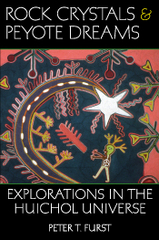 Rock Crystals and Peyote Dreams: Explorations in the Huichol Universe
Furst, Peter T
University of Utah Press, 2006 The Huichol people live in west Mexico’s Sierra Madre Occidental. The most authentically 'traditional' of all Mexican Indians, they have recently become famous for their vivid yarn paintings, their sacramental use of hallucinogenic cactus, and the well-documented peyote pilgrimages that take them three hundred miles east from their present homeland into the north-central desert.
In the mid-1960s, Peter T. Furst began a lifelong encounter with their intellectual culture, facilitated by a growing relationship of mutual trust with Ramón Medina, an aspiring Huichol shaman, storyteller, and artist, and his wife Guadalupe de la Cruz Ríos. Ramón, who became a full-fledged shaman with his fifth peyote pilgrimage, also had a Huichol name: 'Uru Temay, Young Arrow Person.' Over the years Furst published a number of articles on various facets of Huichol life, many of them centered on what he learned and observed during his growing relationship with Ramón and his people.
Bound together by personal reminiscences and background explanations, Furst here brings many of those articles together and updates them. It includes transcriptions of myths that function as charters for 'being Huichols,' descriptions of deities, rituals, beliefs, as well as discussion of the place of hallucinogens in Huichol culture. Furst skillfully weaves current reflections with memories and older material in a manner that makes for a highly readable, contemporary presentation.
Rock Eras: Interpretations of Music and Society, 1954-1984
Jim Curtis
University of Wisconsin Press, 1987 From 1954 to 1984, the media made rock n’ roll an international language. In this era of rapidly changing technology, styles and culture changed dramatically, too. In the 1950s, wild-eyed Southern boys burst into national consciousness on 45 rpm records, and then 1960s British rockers made the transition from 45s to LPs. By the 1970s, rockers were competing with television, and soon MTV made obsolete the music-only formats that had first popularized rock n’ roll.
Paper is temporarily out of stock, Cloth (0-87972-368-8) is available at the paper price until further notice.
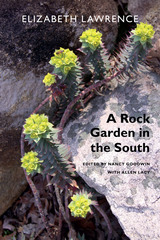 A Rock Garden in the South
Elizabeth A. Lawrence
Duke University Press, 1990 As readers and critics around the country agree, any new book by the renowned garden writer Elizabeth Lawrence is like finding a buried treasure. A Rock Garden in the South will not disappoint. Released posthumously, this book is not only a welcome addition to the Lawrence canon, but fills an important gap in the garden literature on the middle South.
Lawrence, in her usual exquisite prose, deals with the full range of rock gardening topics in this work. She addresses the unique problem of cultivating rock gardens in the South, where the growing season is prolonged and humidity and heat are not conducive to such planting. She describes her own experiences in making a rock garden, with excellent advice on placing stones, constructing steps, ordering plants, and making cuttings.
At the same time, what she writes about here is in large part of interest to gardeners everywhere and for gardens with or without rocks. As always, she thoroughly discusses the plants she has tried—recommending bulbs and other perennials of all sorts, annuals, and woody plants—with poetic descriptions of the plants themselves as well as specific and useful cultural advice. A Rock Garden in the South includes an encyclopedia of plants alphabetized by genus and species and divided into two parts: wood and non-woody plants.
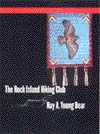 Rock Island Hiking Club
Ray A. Young Bear
University of Iowa Press, 2001
The narrator in this latest collection of poems by Ray Young Bear is alter ego and spiritual seeker Edgar Bearchild, who balances the hapless polarities of life in the Black Eagle Child Settlement with wry humor, a powerful intelligence, and the occasional designer drug. Bearchild is forever infused with revelations both modern and ancient, forever influenced by tribal history, animism, supernaturalism, religion, and mythology.
Whether faced with tragedy or comedy, Bearchild lives in a world replete with signs and portents, from the Lazy-Boy recliner that visually accesses a faraway crime to the child's handprint that mysteriously appears on a frosty ladder. Edgar and his wife, Selene Buffalo Husband, and the other members of the Black Eagle Child Settlement create and recreate prophecies that “quietly wait and glow” in the “mythical darkness that would follow the stories.”
Poet, novelist, and performing artist Ray Young Bear is a tribal member of the Meskwaki Nation of central Iowa. He is the author of Winter of the Salamander, The Invisible Musician, Black Eagle Child: The Facepaint Narratives (Iowa, 1992), and Remnants of the First Earth.
Rock 'n' Roll Movies
Sterritt, David
Rutgers University Press, 2018 Rock ‘n’ Roll Movies presents an eclectic look at the many manifestations of rock in motion pictures, from teen-oriented B-movies to Hollywood blockbusters to avant-garde meditations to reverent biopics to animated shorts to performance documentaries. Acclaimed film critic David Sterritt considers the diverse ways that filmmakers have regarded rock ‘n’ roll, some cynically cashing in on its popularity and others responding to the music as sincere fans, some depicting rock as harmless fun and others representing it as an open challenge to mainstream norms.
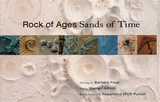 Rock of Ages, Sands of Time: Paintings by Barbara Page, Text by Warren Allmon
Barbara Page and Warren D. Allmon
University of Chicago Press, 2001 Two tiny trilobites in a vast Cambrian ocean drift past sea cucumber parasols and a shaggy, tree-like sponge. Snail tracks loop enigmatically against brushed-gray Silurian slate, and ghostly white crinoids feather a Devonian seascape. A delicate pterosaur flies bravely into the Jurassic gloom, while a Tyrannosaurus rex so big that its teeth fill our field of vision stalks the deep orange sands that mark the end of the Cretaceous period.
These are just a few scenes from the magnificent drama that unfolds in glorious full color and three-dimensional texture in Rock of Ages, Sands of Time. Each of Barbara Page's 544 contiguous painted panels represents a million years of the history of life on earth, with fossil plants and animals depicted at the same scale and in association with each other just as they might be found by a paleontologist in the field. A muted rainbow of background colors evoke the rocks in which the fossils were found—the Texas Red Beds, for instance, or the yellow Solnhofen limestone—and keystone events are shown metaphorically, with fat rolls of paint marking major extinctions or continental drift.
To fully experience the awesome impact of an eon's worth of time spread across 500 feet of bas-relief panels, you'd have to visit the Museum of the Earth in Ithaca, New York, where Page's specially commissioned work will be installed when the museum opens in 2002. But this book is the next best thing. Not only does it contain crisp color reproductions of each painting, but it also includes an accessible essay from paleontologist Warren Allmon giving the scientific context behind the art.
For fossil lovers of all ages, and anyone interested in the merging of art and science, Rock of Ages, Sands of Time will be the find of a lifetime.
 Rock of Ages: Subcultural Religious Identity and Public Opinion among Young Evangelicals
Jeremiah J. Castle
Temple University Press, 2019 Evangelicals and Republicans have been powerful—and active—allies in American politics since the 1970s. But as public opinions have changed, are young evangelicals’ political identities and attitudes on key issues changing too? And if so, why? In Rock of Ages, Jeremiah Castle answers these questions to understand their important implications for American politics and society. Castle develops his own theory of public opinion among young evangelicals to predict and explain their political attitudes and voting behavior. Relying on both survey data and his own interviews with evangelical college students, he shows that while some young evangelicals may be more liberal in their attitudes on some issues, most are just as firmly Republican, conservative, and pro-life on abortion as the previous generation. Rock of Ages considers not only what makes young evangelicals different from the previous generation, but also what that means for both the church and American politics.
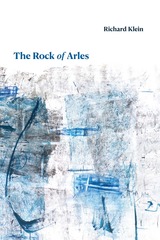 The Rock of Arles
Richard Klein
Duke University Press, 2024 Founded 2,600 years ago on a massive limestone eminence, the city of Arles has been the home of Roman emperors and captured slaves, pagan temples and Christian spires, bloody revolutionaries and powerful papists. In The Rock of Arles Richard Klein relays the history of the city as told to him by the Rock, its genius loci, which infallibly remembers every moment of its existence, from the Roman conquest of Gaul to the fall of feudal aristocracy, from the domination of the Catholic Church to the present French representative democracy. The Rock’s contrarian and dissident history resurrects the memory of three of the city’s most radical yet largely forgotten revolutionary minds: Hellenistic philosopher Favorinus, medieval Hebrew poet Kalonymus ben Kalonymus, and subversive aristocrat Pierre-Antoine Antonelle. For the Rock, each figure represents a freethinking current running through Arlesian history which countered the reactionary, bigoted forces that governed the city for fifteen centuries. Erudite, witty, and opinionated, the Rock tells the story of Arles in order to sketch the broader canvas of European history while invoking the city’s possible future.
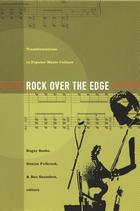 Rock Over the Edge: Transformations in Popular Music Culture
Roger Beebe, Denise Fulbrook, and Ben Saunders, eds.
Duke University Press, 2002 This collection brings new voices and new perspectives to the study of popular—and particularly rock—music. Focusing on a variety of artists and music forms, Rock Over the Edge asks what happens to rock criticism when rock is no longer a coherent concept. To work toward an answer, contributors investigate previously neglected genres and styles, such as “lo fi,” alternative country, and “rock en español,” while offering a fresh look at such familiar figures as Elvis Presley, the Beatles, and Kurt Cobain. Bridging the disciplines of musicology and cultural studies, the collection has two primary goals: to seek out a language for talking about music culture and to look at the relationship of music to culture in general. The editors’ introduction provides a backward glance at recent rock criticism and also looks to the future of the rapidly expanding discipline of popular music studies. Taking seriously the implications of critical theory for the study of non-literary aesthetic endeavors, the volume also addresses such issues as the affective power of popular music and the psychic construction of fandom. Rock Over the Edge will appeal to scholars and students in popular music studies and American Studies as well as general readers interested in popular music. Contributors. Ian Balfour, Roger Beebe, Michael Coyle, Robert Fink, Denise Fulbrook, Tony Grajeda, Lawrence Grossberg, Trent Hill, Josh Kun, Jason Middleton, Lisa Ann Parks, Ben Saunders, John J. Sheinbaum, Gayle Wald, Warren Zanes
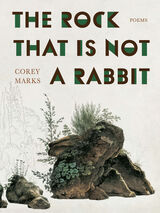 The Rock That is Not a Rabbit: Poems
Corey Marks
University of Pittsburgh Press, 2023 Meditative Poems That Ask, What If “We Change and Change / But Don’t Change Back?”
Change arises as something both desired and mourned in poems that reckon with a world where perspectives blur, names drift “billowing, unattached,” and language yields a broken music. A statue of Lenin topples in a Georgian square only to be raised again in a Dallas backyard. Antlers sprout from Actaeon’s head, rendering him unrecognizable to the dogs he loves. Ungainly piano notes pour from a window and wake unexpected wonder in a lost walker. A forest grows inside a box that once held a father’s new pair of shoes. Skylab slips from its watchful orbit and careens toward Earth. A familiar chair once owned by a now absent family appears in a field of wild parsnips. Meditative and richly imaginative, these poems cast and recast the self and its relation to other selves, and to memory, history, power, and the natural world.
 The Rock, the Curse, and the Hub: A Random History of Boston Sports
Randy Roberts
Harvard University Press, 2005 When you hear the words "Boston sports," does your mind flash to a place or to a person? Do you think of a fly ball arching over the Green Monster, a Celtic breaking across the parquet at Boston Garden, rowers skimming along the Charles River in autumn, or runners tackling the grueling stretch of "Heartbreak Hill" during the Boston Marathon? Or do you conjure faces--a smiling Babe Ruth, a bearded Bill Russell, a determined Rocky Marciano, a boyish and nimble Bobby Orr, or a defiant Pedro Martinez? Most likely, it is impossible to separate the two, impossible to imagine Bob Cousy on any court other than the Garden or Ted Williams playing at any field other than Fenway. Certain people and places are as inseparable as heads and tails on a penny.
The Rock, the Curse, and the Hub is a collection of original essays about the people and places that live in the minds and memories of Bostonians and all Americans. From the Boston of the young Bambino and even younger Francis Ouimet to the glories and agonies of 1986 and the struggles to keep the Patriots in town, each chapter focuses on the games and the athletes, but also on which sports have defined Boston and Bostonians. In a city of deep ethnic and class divisions, sports have provided a common ground, an intense shared experience. Pursuing the legend and the lore, these essays celebrate the players, the games, and the arenas that are at the heart of the city of Boston.
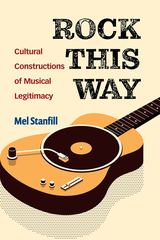 Rock This Way: Cultural Constructions of Musical Legitimacy
Mel Stanfill
University of Michigan Press, 2023 Any and all songs are capable of being remixed. But not all remixes are treated equally. Rock This Way examines transformative musical works—cover songs, remixes, mash-ups, parodies, and soundalike songs—to discover what contemporary American culture sees as legitimate when it comes to making music that builds upon other songs. Through examples of how popular discussion talked about such songs between 2009 and 2018, Mel Stanfill uses a combination of discourse analysis and digital humanities methods to interrogate our broader understanding of transformative works and where they converge at the legal, economic, and cultural ownership levels. Rock This Way provides a new way of thinking about what it means to re-create and borrow music, how the racial identity of both the reusing artist and the reused artist matters, and the ways in which the law polices artists and their works. Ultimately, Stanfill demonstrates that the extent to which a work is seen as having new expression or meaning is contingent upon notions of creativity, legitimacy, and law, all of which are shaped by white supremacy.
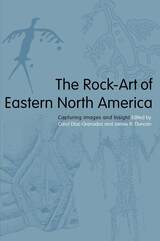 The Rock-Art of Eastern North America: Capturing Images and Insight
Edited by Carol Diaz-Granados and James R. Duncan
University of Alabama Press, 2004 Showcases the wealth of new research on sacred imagery found in twelve states and four Canadian provinces
In archaeology, rock-art—any long-lasting marking made on a natural surface—is similar to material culture (pottery and tools) because it provides a record of human activity and ideology at that site. Petroglyphs, pictographs, and dendroglyphs (tree carvings) have been discovered and recorded throughout the eastern woodlands of North America on boulders, bluffs, and trees, in caves and in rock shelters. These cultural remnants scattered on the landscape can tell us much about the belief systems of the inhabitants that left them behind. The Rock-Art of Eastern North America brings together 20 papers from recent research at sites in eastern North America, where humidity and the actions of weather, including acid rain, can be very damaging over time. Contributors to this volume range from professional archaeologists and art historians to avocational archaeologists, including a surgeon, a lawyer, two photographers, and an aerospace engineer. They present information, drawings, and photographs of sites ranging from the Seven Sacred Stones in Iowa to the Bald Friar Petroglyphs of Maryland and from the Lincoln Rise Site in Tennessee to the Nisula Site in Quebec. Discussions of the significance of artist gender, the relationship of rock-art to mortuary caves, and the suggestive link to the peopling of the continent are particularly notable contributions. Discussions include the history, ethnography, recording methods, dating, and analysis of the subject sites and integrate these with the known archaeological data.
 The Rocket and the Reich: Peenemünde and the Coming of the Ballistic Missile Era
Michael Neufeld
Harvard University Press Launched by the Third Reich in late 1944, the first ballistic missile, the V-2, fell on London, Paris, and Antwerp after covering nearly two hundred miles in five minutes. The design and construction of this daring and deadly advance in weaponry took place at the German rocket development center at Peenemünde, a remote island off the Baltic Coast. Now, Michael J. Neufeld gives the first comprehensive and accurate account of the story behind one of the greatest engineering feats of World War II. At a time when rockets were minor battlefield weapons, Germany ushered in a new form of warfare that would bequeath a long legacy of terror to the Cold War era and a tactical legacy that remains essential today. Both democracy's and communism's ballistic missile and space programs, as well as the SCUD and Patriot missiles of the Gulf War, began in the service of the Nazi State.
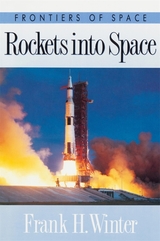 Rockets into Space
Frank Winter
Harvard University Press, 1990 Since ancient times, men and women have dreamed of soaring among the stars, but only in this century has that dream been realized. In Rockets into Space, Frank Winter tells the fascinating story of the modern launch vehicle, from the mythological musings of the Babylonians and Greeks to the present-day reality of manned and unmanned space flight.
In concise yet comprehensive chapters dense with anecdotal detail, Winter tracks the theoretical formulations and technological breakthroughs that have charted the evolution of rocket propulsion and vehicle design. He pays particular attention to the remarkable contributions of pioneers Konstantin Tsiolkovsky, Robert Goddard, Hermann Oberth, Eugen Sänger, and Sergei Korolev, whose genius and vision paved the way for later innovation. He describes the clandestine development of the V-2 rocket in Germany, under the technical leadership of Wernher von Braun, and its dramatic impact on postwar rocket research and satellite development in the United States and the Soviet Union. He also chronicles the complex events of the last three decades, which have produced ever more sophisticated rockets capable of launching larger payloads, from weapons to weather and communications satellites. Finally, he surveys exotic propulsion systems—nuclear, electric, solar, photon, laser—that lie on the frontiers of science today but that will shape the spaceflight and space policy decisions of tomorrow.
Rockets into Space is an authoritative, entertaining guidebook for all who are interested in the history of space travel.
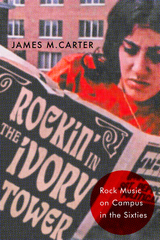 Rockin' in the Ivory Tower: Rock Music on Campus in the Sixties
James M. Carter
Rutgers University Press, 2023 Histories of American rock music and the 1960s counterculture typically focus on the same few places: Woodstock, Monterey, Altamont. Yet there was also a very active college circuit that brought edgy acts like the Jefferson Airplane and the Velvet Underground to different metropolitan regions and smaller towns all over the country. These campus concerts were often programmed, promoted, and reviewed by students themselves, and their diverse tastes challenged narrow definitions of rock music. Rockin’ in the Ivory Tower takes a close look at two smaller universities, Drew in New Jersey and Stony Brook on Long Island, to see how the culture of rock music played an integral role in student life in the late 1960s. Analyzing campus archives and college newspapers, historian James Carter traces connections between rock fandom and the civil rights protests, free speech activism, radical ideas, lifestyle transformations, and anti-war movements that revolutionized universities in the 1960s. Furthermore, he finds that these progressive students refused to segregate genres like folk, R&B, hard rock, and pop. Rockin’ in the Ivory Tower gives readers a front-row seat to a dynamic time for the music industry, countercultural politics, and youth culture.
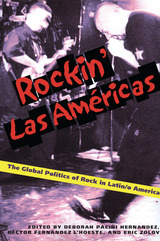 Rockin Las Americas: The Global Politics Of Rock In Latin/o America
Deborah Pacini Hernandez
University of Pittsburgh Press, 2004
Every nation in the Americas—from indigenous Peru to revolutionary Cuba—has been touched by the cultural and musical impact of rock. Rockin’ Las Américas is the first book to explore the production, dissemination, and consumption of rock music throughout the Caribbean, Mexico, Central America, Brazil, the Andes, and the Southern Cone as well as among Latinos in the United States.
The contributors include experts in music, history, literature, culture, sociology, and anthropology, as well as practicing <I>rockeros</I> and <I>rockeras</I>. The multidisciplinary, transnational, and comparative perspectives they bring to the topic serve to address a broad range of fundamental questions about rock in Latin and Latino America, including: Why did rock become such a controversial cultural force in the region? In what ways has rock served as a medium for expressing national identities? How are unique questions of race, class, and gender inscribed in Latin American rock? What makes Latin American rock Latin American? <I>Rockin’ Las Américas</I> is an essential book for anyone who hopes to understand the complexities of Latin American culture today.
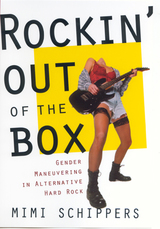 Rockin' Out Of The Box: Gender Maneuvering in Alternative Hard Rock
Schippers, Mimi
Rutgers University Press, 2002 Given the long history of feminism and its contested place in popular culture, important, practical questions arise: What effect, if any, have feminist ideas and practices had on the lives of young men and women who grew up with them? How do these individuals negotiate the realities of gender in their daily lives?
In Rockin’ Out of the Box, Mimi Schippers, employing the crucial feminist insight that gender is a constantly shifting performance and not an essential quality related to sex, explores the gender roles, assumptions, and transgressions of the men and women involved in the alternative hard rock scene. The author focuses on this sizable section of rock music both because it is widely inclusive of men and women and because it explicitly adopted feminism as its point of departure from mainstream music. Schippers uses the innovative term gender maneuvering to explain her observations that gender and sexuality are negotiated and always changing features of social relations. This process, she demonstrates, operates as a cultural practice and as an individual strategy of resistance to socially prescribed gender roles.
Schippers, who spent more than two years frequenting alternative hard rock clubs and concerts in Chicago, conducted extensive interviews with fans as well as musicians, including Ian MacKaye of Fugazi, Eddie Vedder of Pearl Jam, Kim Thayil of Soundgarden, Donita Sparks and Jennifer Finch of L7, Kat Bjelland and Lori Barbero of Babes in Toyland, Rose of Poster Children, Louise Post and Nina Gordon of Veruca Salt, and Liz Davis and Valerie Agnew of 7 Year Bitch. As it documents the development of a rock music genre that has so far received little academic attention, this book also demonstrates how this musical culture contributes to our understanding of the daily practices of gender relations among young people.
Rocking My Life Away: Writing about Music and Other Matters
Anthony DeCurtis
Duke University Press, 1998 Rocking My Life Away represents nearly twenty years of writing by one of the premier critics of popular music in America today. In these pieces from Rolling Stone, the New York Times, and other publications, Anthony DeCurtis reveals his ongoing engagement with rock & roll as artistic forum, source of personal inspiration, and compelling site of cultural struggle. Including significant new work—liner notes commissioned for the Phil Spector box set and a spirited discussion with Peter Buck of R.E.M. about rock criticism, for example—DeCurtis also ventures with insight and power beyond the world of rock & roll. A joint profile of the political writers Neil Sheehan and Taylor Branch and provocative looks at the work of novelists Don DeLillo and T. Coraghessan Boyle round out this eclectic collection.
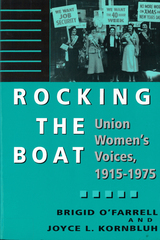 Rocking the Boat: Union Women's Voices, 1915-1975
O'Farrell, Brigid
Rutgers University Press, 1996 Rocking the Boat is a celebration of strong, committed women who helped to build the American labor movement. Through the stories of eleven women from a wide range of backgrounds, we experience the turmoil, hardships, and accomplishments of thousands of other union women activists through the period spanning the Great Depression, the New Deal, World War II, the McCarthy era, the civil rights movement, and the women's movement. These women tell powerful stories that highlight and detail women's many roles as workers, trade unionists, and family members. They all faced difficulties in their personal lives, overcame challenges in their unions, and individually and collectively helped improve women's everyday working lives. Maida Springer-Kemp came from New York City's Harlem, Local 22 of the International Ladies' Garment Workers' Union, to represent the AFL-CIO in Africa. In Chicago, Alice Peurala fought for her job in the steel mill and her place in the steel workers' union. Jessie De La Cruz organized farm workers in California. Esther Peterson, organizer, educator, and lobbyist, became an advisor to four U.S. presidents. In chapters based on oral history interviews, these women and others provide new perspectives and practical advice for today's working women. They share an idealistic and practical commitment to the labor movement. As Dorothy Haener of the United Auto Workers and a founding member of the National Organization of Women said, "You have to take a look at how to rock the boat. You don't want to spill yourself out if you can avoid it, but sometimes you have to rock the boat." From these women we, too, learn how to rock the boat.
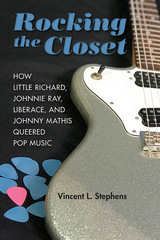 Rocking the Closet: How Little Richard, Johnnie Ray, Liberace, and Johnny Mathis Queered Pop Music
Vincent Stephens
University of Illinois Press, 2019 The all-embracing, "whaddya got?" nature of rebellion in Fifties America included pop music's unlikely challenge to entrenched notions of masculinity. Within that upheaval, four prominent artists dared to behave in ways that let the public assume—but not see—their queerness. That these artists cultivated ambiguous sexual personas often reflected an understandable fear, but also a struggle to fulfill personal and professional expectations.Vincent L. Stephens confronts notions of the closet—both coming out and staying in—by analyzing the careers of Liberace, Johnny Mathis, Johnnie Ray, and Little Richard. Appealing to audiences hungry for novelty and exoticism, the four pop icons used performance and queering techniques that ran the gamut. Liberace's flamboyance shared a spectrum with Mathis's intimate sensitivity while Ray's overwrought displays as "Mr. Emotion" seemed worlds apart from Little Richard's raise-the-roof joyousness. As Stephens shows, the quartet not only thrived in an era of gray flannel manhood, they pioneered the ways generations of later musicians would consciously adopt sexual mystery as an appealing and proven route to success.
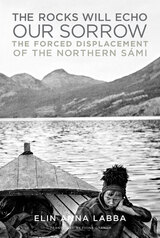 The Rocks Will Echo Our Sorrow: The Forced Displacement of the Northern Sámi
Elin Anna Labba
University of Minnesota Press, 2023 The deep and personal story—told through history, poetry, and images—of the forced displacement of the Sámi people from their homeland in northern Norway and Sweden and its reverberations today
More than a hundred years have passed since the Sámi were forcibly displaced from their homes in northern Norway and Sweden, a hundred years since Elin Anna Labba’s ancestors and relations drove their reindeer over the strait to the mainland for the last time. The place where they lived has remained empty ever since. We carry our homes in our hearts, Labba shares, citing the Sámi poet Áillohaš. How do you bear that weight if you were forced to leave? In a remarkable blend of historical reportage, memoir, and lyrical reimagining, Labba travels to the lost homeland of her ancestors to tell of the forced removal of the Sámi in the early twentieth century and to reclaim a place in history, and in today’s world, for these Indigenous people of northern Scandinavia. When Norway became a country independent from Sweden in 1905, the two nations came to an agreement that called for the displacement of the Northern Sámi, who spent summers on the Norwegian coast and winters in Sweden. This “dislocation,” as the authorities called it, gave rise to a new word in Sámi language, bággojohtin, forced displacement. The first of the sirdolaččat, or “the displaced,” left their homes fully believing they would soon return. Through stories, photographs, letters, and joik lyrics, Labba gathers a chorus of Sámi expression that resonates across the years, evoking the nomadic life they were required to abandon and the immense hardship and challenges they endured: children left behind with relatives, reindeer lost when they returned to familiar territory, sorrow and estrangement that linger through generations. Starkly poetic and emotionally heart-wrenching, this dark history is told through the voices of the sirdolaččat, echoing the displacements of other Indigenous people around the world as it depicts the singular experience of the Northern Sámi. For her extraordinary work, Labba was awarded Sweden’s most important national book prize in 2020, the August Prize for Best Nonfiction.
Rocky Marciano: The Rock of His Times
Russell Sullivan
University of Illinois Press, 2002 In this captivating and complex portrait of an American sports legend, Russell Sullivan confirms Rocky Marciano's place as a symbol and cultural icon of his era. As much as he embodied the wholesome, rags-to-riches patriotism of a true American hero, he also reflected the racial and ethnic tensions festering behind the country's benevolent facade. Spirited, fast-paced, and rich in detail, Rocky Marciano is the first book to place the boxer in the context of his times. Capturing his athletic accomplishments against the colorful backdrop of the 1950s fight scene, Sullivan examines how Marciano's career reflected the glamour and scandal of boxing as well as tenor of his times.
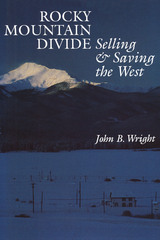 Rocky Mountain Divide: Selling and Saving the West
By John B. Wright
University of Texas Press, 1993 The opposing forces of conservation and development have shaped and will continue to shape the natural environment and scenic beauty of the American West. Perhaps nowhere are their opposite effects more visible than in the neighboring states of Colorado and Utah, so alike in their spectacular mountain environments, yet so different in their approaches to land conservation. This study explores why Colorado has over twenty-five land trusts, while Utah has only one. John Wright traces the success of voluntary land conservation in Colorado to the state’s history as a region of secular commerce. As environmental consciousness has grown in Colorado, people there have embraced the businesslike approach of land trusts as simply a new, more responsible way of conducting the real estate business. In Utah, by contrast, Wright finds that Mormon millennialism and the belief that growth equals success have created a public climate opposed to the formation of land trusts. As Wright puts it, "environmentalism seems to thrive in the Centennial state within the spiritual vacuum which is filled by Mormonism in Utah." These findings remind conservationists of the power of underlying cultural values that affect their efforts to preserve private lands.
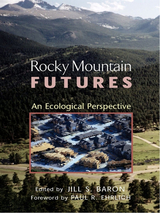 Rocky Mountain Futures: An Ecological Perspective
Edited by Jill S. Baron; Foreword by Paul R. Ehrlich
Island Press, 2002 The Rocky Mountain West is largely arid and steep, with ecological scars from past human use visible for hundreds of years. Just how damaging were the past 150 years of activity? How do current rates of disturbance compare with past mining, grazing, and water diversion activities? In the face of constant change, what constitutes a "natural" ecosystem? And can a high quality of life be achieved for both human and natural communities in this region. Rocky Mountain Futures presents a comprehensive and wide-ranging examination of the ecological consequences of past, current, and future human activities in the Rocky Mountain region of the United States and Canada. The book brings together 32 leading ecologists, geographers, and other scientists and researchers to present an objective assessment of the cumulative effects of human activity on the region's ecological health and to consider changes wrought by past human use. This combined view of past and present reveals where Rocky Mountain ecosystems are heading, and the authors project what the future holds based upon current economic and social trends and the patterns that emerge from them. The book: - examines the biogeographic and paleoenvironmental setting and historical climate that have shaped Rocky Mountain ecosystems
- traces the direct human influences on landscapes and ecosystems over the past 150 years
- explores the cumulative effects of past, present, and projected future human activities on tundra, subalpine and montane forests, valleys, grasslands, and waters
- offers case studies that illustrate specific examples of human influence and current efforts to restore the environment
Case studies focus on northern New Mexico; Summit County, Colorado; Flathead Valley, Montana; and Alberta, Canada. Among the contributors are Craig D. Allen, N. Thompson Hobbs, Linda L. Joyce, Robert E. Keane, David Schindler, Timothy R. Seastedt, David Theobald, Diana Tomback, William Travis, Cathy Whitlock, and Jack Stanford. The United Nations has proclaimed 2002 as the International Year of Mountains to increase international awareness of the global importance of mountain ecosystems. The case-based multidisciplinary approach of this book constitutes an important new model for understanding the implications of land-use practices and economic activity on mountains, and will serve a vital role in improving decisionmaking both in the Rocky Mountains and in other parts of the world that face similar challenges.
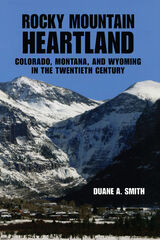 Rocky Mountain Heartland: Colorado, Montana, and Wyoming in the Twentieth Century
Duane A. Smith
University of Arizona Press, 2008 This is a lively history of three Rocky Mountain states in the twentieth century. With the sure hand of an experienced writer and the engaging voice of a veteran storyteller, the well-known historian Duane A. Smith recounts the major social, political, and economic events of the period with verve and zest. Smith is thoroughly familiar with his subject and has a genuine enthusiasm for the history of the region. Written with the general reader in mind, Rocky Mountain Heartland will appeal to students, teachers, and “armchair historians” of all ages.
This is the colorful saga of how the Old West became the New West. Beginning at the end of the nineteenth century and concluding after the turn of the twenty-first, Rocky Mountain Heartland explains how Colorado, Montana, and Wyoming evolved over the course of the century. Smith is mindful of all the factors that propelled the region: mining, agriculture, water, immigration, tourism, technology, and two world wars. And he points out how the three states responded in varying ways to each of these forces.
Although this is a regional story, Smith never loses sight of the national events that influenced events in the region. As Smith skillfully shows, the vast natural resources of the three states attracted optimistic, hopeful Americans intent on getting rich, enjoying the outdoors, or creating new lives for themselves and their families. How they resolved these often-conflicting goals is the modern story of the Rocky Mountain region.
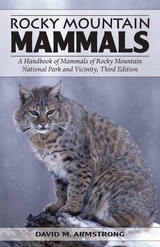 Rocky Mountain Mammals: A Handbook of Mammals of Rocky Mountain National Park and Vicinity, Third Edition
David M. Armstrong
University Press of Colorado, 2008 Revised, updated, and with more than 80 new color photographs, Rocky Mountain Mammals, Third Edition is a nontechnical guide to the mammals of the Southern Rocky Mountains and their foothills, with special emphasis on Rocky Mountain National Park and vicinity. Designed for quick reference and enjoyable reading, Rocky Mountain Mammals offers what most field guides don't - a wealth of fascinating information about each species. In seventy-two species accounts, David M. Armstrong describes each animal and its signs, habits, habitat, and natural history, noting times when seasonal events such as elk sparring occur. Introductory materials and appendices offer rich context and wildlife-watching support, including a checklist with page numbers for quick field reference, an identification key, a glossary, derivations of scientific names, and advice on how, when, and where to watch mammals. Armstrong introduces mammalian evolution, anatomy, and distribution and offers perspective on how the local fauna fits into its geographical setting and into past and potential future faunas of the region. This lavishly illustrated new edition will delight those who live in and visit the high country and foothills of the Southern Rockies and want to identify mammals and learn about their lives. Published in association with the Rocky Mountain Nature Association.
Rocky Mountain National Park: A History
C. W. Buchholtz
University Press of Colorado, 1983 Rocky Mountain National Park: A History is more than just the story of Rocky Mountain in its brief tenure as a national park. Its scope includes the earliest traces of human activity in the region and outlines the major events of exploration, settlement, and exploitation. Origins of the national park ideas are followed into the recent decades of the Park's overwhelming popularity. It is a story of change, of mountains reflecting the tenor of the times. From being a hunting ground to becoming ranchland, from being a region of resorts to becoming a national park, this small segment of the Rocky Mountains displays a record of human activities that helps explain the present and may guide us toward the future.
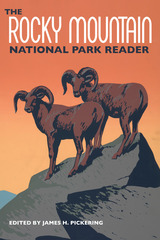 The Rocky Mountain National Park Reader
James H. Pickering
University of Utah Press, 2015 Writer Wallace Stegner once wrote that “No place is a place until things that have happened in it are remembered.” This collection celebrates one of America’s most loved places, Rocky Mountain National Park, which marks its 100th birthday in 2015. Engagement with place and the events that loom large in park history are the underlying themes that connect the thirty-three selections that make up this anthology.
Representative both in subject and approach, the selections reach back to Arapaho and pioneer times before the park was established and move forward to span its entire first century. The voices that speak to us are distinctive: among them are Irish sportsman Windham Thomas Wyndham-Quin, the Fourth Earl of Dunraven; British travel writer Isabella Bird; mountaineer Frederick Chapin; naturalist Enos Mills; iconic ranger Jack Moomaw and his fictional counterpart, Dorr Yeager’s Bob Flame; and contemporary nature writers Anne Zwinger and SueEllen Campbell—to mention but a few. Some tell us about the past, recalling moments of personal triumph and tragedy. Other voices are quieter; some are more polemic. All capture and share a part of the national treasure that is Rocky Mountain National Park.
The first of its kind, this original collection is a rich literary and historical compendium of the best that has been written about Rocky Mountain National Park. As such it provides an indispensable introduction to the nation’s twelfth national park.
Part of the National Park Reader series, edited by Lance Newman and David Stanley
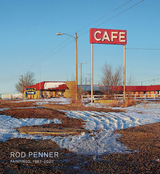 Rod Penner: Paintings, 1987–2022
David Anfam
The Artist Book Foundation, 2022 The abandoned and forgotten landscapes of rural southwestern towns are the favored subjects of Rod Penner’s paintings. His deft use of contrasts in his
images—despondency and hope, isolation and nostalgia—evokes memories of The Last Picture Show and elicits complex responses from viewers. “I’m interested in the look of things and the quality of being there,” he says. “A moment that is completely frozen with all the variety of textures; rust on poles, crumbling asphalt, light hitting the grass.”
Penner’s works are based on his photographs, digital video stills, and his experience of the rural landscapes of Texas and New Mexico. He depicts desolate, often deserted locations, the character of old houses and abandoned buildings, weather, and unique geography. His chosen scenes are infused with a cinematic quality that is the result of the exquisite light that he captures with his meticulous process. “The finished paintings should evoke contrasting responses of melancholy and warmth, desolation and serenity,” he says.
Penner’s hyperrealistic technique meticulously records both the iconic imagery and the beauty in the ashes of these once-prosperous streets and neighborhoods that still endure. The incredibly poignant scenes evoke a universalism, a collective experience seen through the lens of Americana. “You won’t find any hidden or overt socio-political meaning in my work and at the same time I hope that by utilizing what I find in the American landscape I’m able to connect to viewers on a deeper psychological level.”
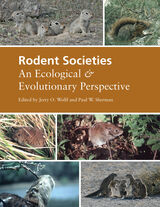 Rodent Societies: An Ecological and Evolutionary Perspective
Edited by Jerry O. Wolff and Paul W. Sherman
University of Chicago Press, 2007 Rodent Societies synthesizes and integrates the current state of knowledge about the social behavior of rodents, providing ecological and evolutionary contexts for understanding their societies and highlighting emerging conservation and management strategies to preserve them. It begins with a summary of the evolution, phylogeny, and biogeography of social and nonsocial rodents, providing a historical basis for comparative analyses. Subsequent sections focus on group-living rodents and characterize their reproductive behaviors, life histories and population ecology, genetics, neuroendocrine mechanisms, behavioral development, cognitive processes, communication mechanisms, cooperative and uncooperative behaviors, antipredator strategies, comparative socioecology, diseases, and conservation. Using the highly diverse and well-studied Rodentia as model systems to integrate a variety of research approaches and evolutionary theory into a unifying framework, Rodent Societies will appeal to a wide range of disciplines, both as a compendium of current research and as a stimulus for future collaborative and interdisciplinary investigations.
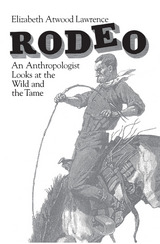 Rodeo: An Anthropologist Looks at the Wild and the Tame
Elizabeth Atwood Lawrence
University of Chicago Press, 1984 Rodeo people call their sport "more a way of life than a way to make a living." Rodeo is, in fact, a rite that not only expresses a way of life but perpetuates it, reaffirming in a ritual contest between man and animal the values of American ranching society. Elizabeth Atwood Lawrence uses an interpretive approach to analyze rodeo as a symbolic pageant that reenacts the "winning of the West" and as a stylized expression of frontier attitudes toward man and nature. Rodeo constestants are the modern counterparts of the rugged and individualistic cowboys, and the ethos they inherited is marked by ambivalence: they admire the wild and the free yet desire to tame and conquer.
Based on extensive field work and drawing on comparative materials from other stock-tending societies, Rodeo is a major contribution to an understanding of the role of performance in society, the culturally constructed view of man's place in nature, and the structure and meaning of social relationships and their representations.
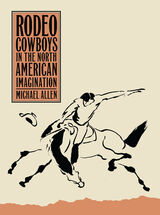 Rodeo Cowboys In The North American Imagination
Michael Allen
University of Nevada Press, 1998 Rodeo is an enduring relic of America’s popular culture, drawing capacity audiences to all its venues, from small western cowtowns to Madison Square Garden. The rodeo cowboy, that figure of rugged independence and solitary courage, continues to evoke the spirit of a vanished frontier and the hardy pioneers who conquered it. In this study historian Michael Allen examines the image of the rodeo cowboy and the role this image has played in popular culture over the past century. He sees rodeo as a significant American folk festival and the rodeo cowboy as the avatar of a nearly extinct authentic figure, the “real cowboy,” who embodies the skills and values of traditional western rural culture. Allen’s analysis explores the evolution of the myth of the rodeo man and its subsequent institutionalization and acculturation into the media of popular culture. He also examines the impact on this myth of significant changes in the rodeo milieu—the commercialization of the event and the professionalization of rodeo performers; the arrival on the rodeo scene of performers from outside the white, male, western, rural origins of the traditional cowboy performers. He discovers that America’s—and indeed the world’s—fascination with the rodeo cowboy reflects feelings far deeper than a taste for exciting entertainment. Allen’s discussion of the archetypal figure of the rodeo cowboy will change forever our perception of rodeo, but it will also help us understand how the ancient tension between frontier and civilization continues to play a role in our national imagination.
 Rodnaya rech': An Introductory Course for Heritage Learners of Russian
Irina Dubinina and Olesya Kisselev
Georgetown University Press, 2019 E-Textbooks are now available to purchase or rent through VitalSource.com! Please visit VitalSource for more information on pricing and availability. As of January 1, 2021, Smart Sparrow Companion Websites are no longer available for any of our textbook programs. New companion websites are coming soon, and will be hosted by Lingco. When it becomes available, instructors may sample the new companion websites by visiting GUPTextbooks.com/companionwebsites. The full websites will be available for fall 2021 course adoption. Until the new companion websites become available, eBook Workbooks with exercises from the Smart Sparrow Electronic Workbook are available for purchase on the GUP website and VitalSource.com, as are Workbook Answer Keys. They will both be sold in eBook format only. Rodnaya rech', an introductory textbook for heritage learners, addresses the unique needs of students who have at least intermediate-level listening and speaking skills on the ACTFL scale but who have underdeveloped or nonexistent literacy skills. With an emphasis on conceptual understanding of vocabulary and grammar, Rodnaya rech' builds students' literacy skills and teaches them to strategically use the linguistic intuition they have gained as heritage speakers while strengthening all four skill areas. Essential to learning with Rodnaya rech’ is the workbook, which includes all of the homework activities and texts for reading comprehension (sold separately). These practice activities allow students to practice what they are learning in the textbook. With this textbook designed for in-class work and the accompanying workbook, Rodnaya rech' can be used as the main course material either in an intensive one-semester class or at a more measured pace over two semesters. This book is flexible enough to be used in specialized heritage or in mixed classes. It can also support independent study and learning in less formal settings, such as community schools. For Teachers: Exam copies of the textbook are available free of charge to instructors and can be ordered on this page. To request a print sample, please use the "print" exam copy button. To request a digital sample, instructors should log onto VitalSource.com, select "Faculty Sampling" in the upper right-hand corner, and select the desired products.
 Rodnaya rech' with website: An Introductory Course for Heritage Learners of Russian
Irina Dubinina and Olesya Kisselev
Georgetown University Press, 2021 Rodnaya rech' with website, an introductory textbook for heritage learners, addresses the unique needs of students who have at least intermediate-level listening and speaking skills on the ACTFL scale but who have underdeveloped or nonexistent literacy skills. With an emphasis on conceptual understanding of vocabulary and grammar, Rodnaya rech' builds students' literacy skills and teaches them to strategically use the linguistic intuition they have gained as heritage speakers while strengthening all four skill areas. The accompanying companion website–included with the book–offers fully integrated exercises to use alongside the text. Rodnaya rech' can be used as the main course material either in an intensive one-semester class or at a more measured pace over two semesters. This book is flexible enough to be used in specialized heritage or in mixed classes. It can also support independent study and learning in less formal settings, such as community schools. For Instructors: Separate print Teacher’s Editions of Rodnaya rech’ are no longer available. Instead, instructors should submit exam and desk copy requests using ISBN 978-1-64712-219-5.
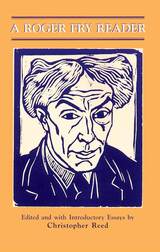 A Roger Fry Reader
Roger Fry
University of Chicago Press, 1996 In the first decades of the twentieth century, the art critic Roger Fry introduced English-speaking audiences to modern French art and formalist aesthetic theory. A Roger Fry Reader, edited by Christopher Reed, brings together for the first time a comprehensive selection of Fry's essays. Most appear here for the first time since their original publication in scholarly journals and art magazines, while some have never been published before. Representing 40 years of engagement with the arts, the essays cover a broad spectrum of topics, from Fry's influential promotion of Post-Impressionism to art education, museums, architecture, decorative art, and the implications of literature and dance for the visual arts. Reed also provides valuable historical background and considers Fry's legacy for the present. A Roger Fry Reader affords an opportunity to examine both the foundations of modern art criticism from the point of view of one of its foremost practitioners and current debates about the nature ofart and aesthetic experience.
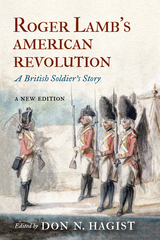 Roger Lamb's American Revolution: A British Soldier's Story
Don N. Hagist
Westholme Publishing, 2022 Featured in Ken Burns The American Revolution on PBS®
Of all the British soldiers who served in North America during the American Revolution, none wrote more about his experiences than Roger Lamb. He certainly had a lot to say: his service in two of the most important campaigns—the 1777 Saratoga campaign and the 1781 campaign through the Carolinas to Virginia—put him in the thick of some of the war’s most famous battles. Moreover, he was twice captured and twice escaped, making his way through hostile territory to rejoin the British army. Later in his life he wrote two books chronicling these experiences in great detail. Hundreds of British soldiers went through similar ordeals, sharing in the campaigns, the battles, the captivities, the escapes, but none recounted any aspect of these activities in the level of detail that Lamb did.
The first edition of this book, published in 2004, combined all of Roger Lamb’s first-hand recollections from his two books, An Original and Authentic Journal of Occurrences during the late American War, from its Commencement to the Year 1783 (Dublin, 1809) and Memoir of his Own Life (Dublin, 1811). Since that publication, two more important documents written by Lamb have come to light—an intelligence report written in 1782 recounting details of one of his escapes, and a “commonplace book” kept later in his life to record a vast range of memories, thoughts, and observations. Roger Lamb’s American Revolution: A British Soldier’s Story combines all of the material from these four sources pertaining to Lamb’s career as a soldier, from the time he joined the army to his departure from it, plus his recollections of childhood and post-military life. The result is the most comprehensive first-hand account by a British soldier in the American Revolution, an essential record for understanding the war in its totality.
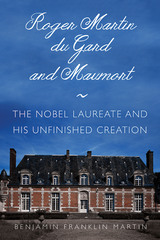 Roger Martin du Gard and Maumort: The Nobel Laureate and His Unfinished Creation
Benjamin Franklin Martin
Northern Illinois University Press, 2017 In the late 1930s and early 1940s, Roger Martin du Gard was one of the most famous writers in the Western world. He won the Nobel Prize for Literature in 1937, and his works, especially Les Thibault, a multivolume novel, were translated into English and read widely. Today, this close friend of André Gide, Albert Camus, and André Malraux is almost unknown, largely because he left unfinished the long project he began in the 1940s, Lieutenant Colonel de Maumort. Initially, the novel is an account of the French experience during World War II and the German occupation as seen through the eyes of a retired army officer. Yet, through Maumort’s series of recollections, it becomes a morality tale that questions the values of late nineteenth- and early twentieth-century European civilization. A fragmentary version of the novel was published in 1983, twenty-five years after its author’s death, and an English translation appeared in 1999. Even incomplete, it is a work of haunting brilliance.
In this groundbreaking study, Benjamin Franklin Martin recovers the life and times of Roger Martin du Gard and those closest to him. He describes the genius of Martin du Gard’s literature and the causes of his decline by analyzing thousands of pages from journals and correspondence. To the outside world, the writer and his family were staid representatives of the French bourgeoisie. Behind this veil of secrecy, however, they were passionate and combative, tearing each other apart through words and deeds in clashes over life, love, and faith. Martin interweaves their accounts with the expert narration that distinguishes all of his books, creating a blend of intellectual history, family drama, and biography that will appeal to scholars, students, and general readers alike.
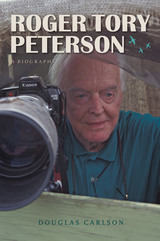 Roger Tory Peterson: A Biography
By Douglas Carlson
University of Texas Press, 2007 Beginning with his 1934 Field Guide to the Birds, Roger Tory Peterson introduced literally millions of people to the pleasures of observing birds in the wild. His field guide, which has gone through five editions and sold more than four million copies, fostered an appreciation for the natural world that set the stage for the contemporary environmental movement. When Rachel Carson's Silent Spring sounded a warning about the threat to birds and their habitats in the 1960s, the Peterson field guides had already prepared the public and the scientific community to heed the warning and fight to save habitat and protect endangered species—a result that Peterson wholeheartedly approved. In this authoritative, highly readable biography of Roger Tory Peterson (1908-1996), Douglas Carlson creates a fascinating portrait of the complex, often conflicted man behind the brand name. He describes how Peterson's obsession with birds began in boyhood and continued throughout a multifaceted career as a painter, writer, educator, environmentalist, and photographer. Carlson traces Peterson's long struggle to become both an accomplished bird artist and a scientific naturalist—competing goals that drove Peterson to work to the point of exhaustion and that also deprived him of many aspects of a normal personal life. Carlson also records Peterson's many lasting achievements, from the phenomenal success of the field guides, to the bird paintings that brought him renown as "the twentieth century's Audubon," to the establishment of the Roger Tory Peterson Institute to carry on his work in conservation and education.
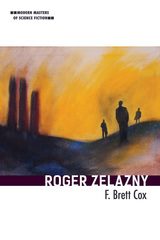 Roger Zelazny
F. Brett Cox
University of Illinois Press, 2021 Challenging convention with the SF nonconformist
Roger Zelazny combined poetic prose with fearless literary ambition to become one of the most influential science fiction writers of the 1960s. Yet many critics found his later novels underachieving and his turn to fantasy a disappointment. F. Brett Cox surveys the landscape of Zelazny's creative life and contradictions. Launched by the classic 1963 short story "A Rose for Ecclesiastes," Zelazny soon won the Hugo Award for Best Novel with …And Call Me Conrad and two years later won again for Lord of Light. Cox looks at the author's overnight success and follows Zelazny into a period of continued formal experimentation, the commercial triumph of the Amber sword and sorcery novels, and renewed acclaim for Hugo-winning novellas such as "Home Is the Hangman" and "24 Views of Mt. Fuji, by Hokusai." Throughout, Cox analyzes aspects of Zelazny's art, from his preference for poetically alienated protagonists to the ways his plots reflected his determined individualism.
Clear-eyed and detailed, Roger Zelazny provides an up-to-date reconsideration of an often-misunderstood SF maverick.
 Rogue Astronaut
Mitchell Jacobs
University of Arkansas Press, 2026 At the core of Rogue Astronaut, Mitchell Jacobs’s debut poetry collection, is a mystery: Was the poet’s father abducted by aliens as a teenager? From this uncanny family lore spins a gravitational field of theory, grief, and imagination, spurring speculations about the extraterrestrial as well as the terrestrial question of familial bonds: What are the limits of intimacy between two alien anatomies, between two unlike minds? Are we, after all, finally alone?
In poems that continually veer from play to reverence, from body horror to bodily delight, encounters with bed bugs and cuttlefish appear side by side with retro gaming and phantom light. A brother living with delusions turns toward the sky. The poet also peers skyward in search of connection—across family lines, across the body’s borders, across galaxies. Outer space becomes a metaphorical terrain where queer desire and spiritual longing collide. Just as Agent Mulder’s iconic X-Files poster declares “I WANT TO BELIEVE,” so do these poems ache to trust in something more—extraterrestrial life, divine presence, even intimacy.
Jacobs’s electrifying collection offers readers a singular voice attuned to the strangeness of living now—where science fiction and memory, tenderness and dissociation, belief and doubt pulse in tangled orbit. With wit, vision, and formal inventiveness, Rogue Astronaut charts a course through the mysterious and the intimate, inviting us to imagine new ways of connecting across distance, time, and the alien terrain of self.
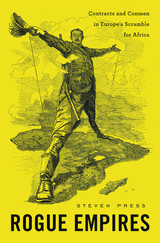 Rogue Empires: Contracts and Conmen in Europe’s Scramble for Africa
Steven Press
Harvard University Press, 2017 In the 1880s, Europeans descended on Africa and grabbed vast swaths of the continent, using documents, not guns, as their weapon of choice. Rogue Empires follows a paper trail of questionable contracts to discover the confidence men whose actions touched off the Scramble for Africa. Many of them were would-be kings who sought to establish their own autonomous empires across the African continent—often at odds with traditional European governments which competed for control.
From 1882 to 1885, independent European businessmen and firms (many of doubtful legitimacy) produced hundreds of deeds purporting to buy political rights from indigenous African leaders whose understanding of these agreements was usually deemed irrelevant. A system of privately governed empires, some spanning hundreds of thousands of square miles, promptly sprang up in the heart of Africa. Steven Press traces the notion of empire by purchase to an unlikely place: the Southeast Asian island of Borneo, where the English adventurer James Brooke bought his own kingdom in the 1840s. Brooke’s example inspired imitators in Africa, as speculators exploited a loophole in international law in order to assert sovereignty and legal ownership of lands which they then plundered for profit.
The success of these experiments in governance attracted notice in European capitals. Press shows how the whole dubious enterprise came to a head at the Berlin Conference of 1884–1885, when King Leopold of Belgium and the German Chancellor Bismarck embraced rogue empires as legal precedents for new colonial agendas in the Congo, Namibia, and Cameroon.
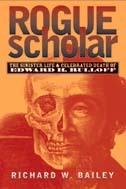 Rogue Scholar: The Sinister Life and Celebrated Death of Edward H. Rulloff
Richard W. Bailey
University of Michigan Press, 2003 This is the tale of the insalubrious and utterly failed life of the notorious nineteenth-century thief, murderer, professional impostor, and would-be philologist Edward Rulloff, who was condemned to die and hanged for his crimes. The life of Rulloff is a sordid account of misguided genius and abysmal consequences. Those who loved him courted disaster, and, in every case, the courtship flowered into catastrophe.
Richard Bailey's narrative, calm and impartial yet spiked with wit and suspense, captures perfectly the slightly haunted and overwrought air of Victorian rural America, calling on newspaper accounts, interviews, and eyewitness reports of the day. Inevitably, the quiet accumulation of details builds to a story that transcends its individual events to touch on the universal themes of any age.
Rogue Scholar is about the evil of one man who lived a life of deception and crime. Yet in a larger sense it is also the portrait of a condemned soul in its final hours, an examination of the death penalty, and a reminder that media sensationalism is nothing new.
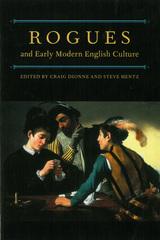 Rogues and Early Modern English Culture
Craig Dionne and Steve Mentz, Editors
University of Michigan Press, 2004 "Those at the periphery of society often figure obsessively for those at its center, and never more so than with the rogues of early modern England. Whether as social fact or literary fiction-or both, simultaneously-the marginal rogue became ideologically central and has remained so for historians, cultural critics, and literary critics alike. In this collection, early modern rogues represent the range, diversity, and tensions within early modern scholarship, making this quite simply the best overview of their significance then and now."
-Jonathan Dollimore, York University
"Rogues and Early Modern English Culture is an up-to-date and suggestive collection on a subject that all scholars of the early modern period have encountered but few have studied in the range and depth represented here."
-Lawrence Manley, Yale University
"A model of cross-disciplinary exchange, Rogues and Early Modern English Culture foregrounds the figure of the rogue in a nexus of early modern cultural inscriptions that reveals the provocation a seemingly marginal figure offers to authorities and various forms of authoritative understanding, then and now. The new and recent work gathered here is an exciting contribution to early modern studies, for both scholars and students."
-Alexandra W. Halasz, Dartmouth College
Rogues and Early Modern English Culture is a definitive collection of critical essays on the literary and cultural impact of the early modern rogue. Under various names-rogues, vagrants, molls, doxies, vagabonds, cony-catchers, masterless men, caterpillars of the commonwealth-this group of marginal figures, poor men and women with no clear social place or identity, exploded onto the scene in sixteenth-century English history and culture. Early modern representations of the rogue or moll in pamphlets, plays, poems, ballads, historical records, and the infamous Tudor Poor Laws treated these characters as harbingers of emerging social, economic, and cultural changes.
Images of the early modern rogue reflected historical developments but also created cultural icons for mobility, change, and social adaptation. The underclass rogue in many ways inverts the familiar image of the self-fashioned gentleman, traditionally seen as the literary focus and exemplar of the age, but the two characters have more in common than courtiers or humanists would have admitted. Both relied on linguistic prowess and social dexterity to manage their careers, whether exploiting the politics of privilege at court or surviving by their wits on urban streets.
Deftly edited by Craig Dionne and Steve Mentz, this anthology features essays from prominent and emerging critics in the field of Renaissance studies and promises to attract considerable attention from a broad range of readers and scholars in literary studies and social history.
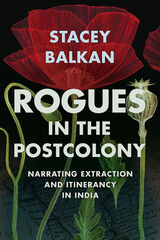 Rogues in the Postcolony: Narrating Extraction and Itinerancy in India
Stacey Balkan
West Virginia University Press, 2022 An environmental humanist’s study of extractive capitalism and colonial occupation in Indian fiction. Rogues in the Postcolony is a study of Anglophone Indian picaresque novels that dramatize the impacts of extractive capitalism and colonial occupation on local communities in several Indian states. In this materialist history of development on the subcontinent, Stacey Balkan considers works by Amitav Ghosh, Indra Sinha, and Aravind Adiga that critique violent campaigns of enclosure and dispossession at the hands of corporate entities like the English East India Company and its many legatees. By foregrounding the intersections among landscape ideology, agricultural improvement, extractive capitalism, and aesthetic expression, Rogues in the Postcolony also attends to the complicity of popular aesthetic forms with political and economic policy, as well as the colonial and extractivist logics that often frame discussions around the so-called Anthropocene epoch. Bringing together questions about settler-colonial practices and environmental injustice, Rogues in the Postcolony concludes with an investigation of new extractivist frontiers, including solar capitalism, and considers the possibility of imagining life after extraction on the Indian subcontinent and beyond.
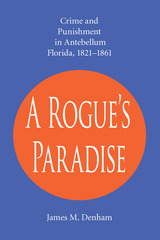 A Rogue's Paradise: Crime and Punishment in Antebellum Florida, 1821-1861
James M. Denham
University of Alabama Press, 1997 A revealing portrait of law-breaking and law enforcement on the Florida frontier The pervasive influence of the frontier is fundamental to an understanding of antebellum Florida. James M. Denham traces the growth and social development of this sparsely settled region through its experience with crime and punishment. He examines such issues as Florida's criminal code, its judicial and law enforcement officers, the accommodation of criminals in jails and courts, outlaw gangs, patterns of punishment, and the attitude of the public toward lawbreakers. Using court records, government documents, newspapers, and personal papers, Denham explores how crime affected ordinary Floridians—whites and blacks, perpetrators, victims, and enforcers. He contends that although the frontier determined the enforcement and administration of the law, the ethic of honor dominated human relationships.
|
|
